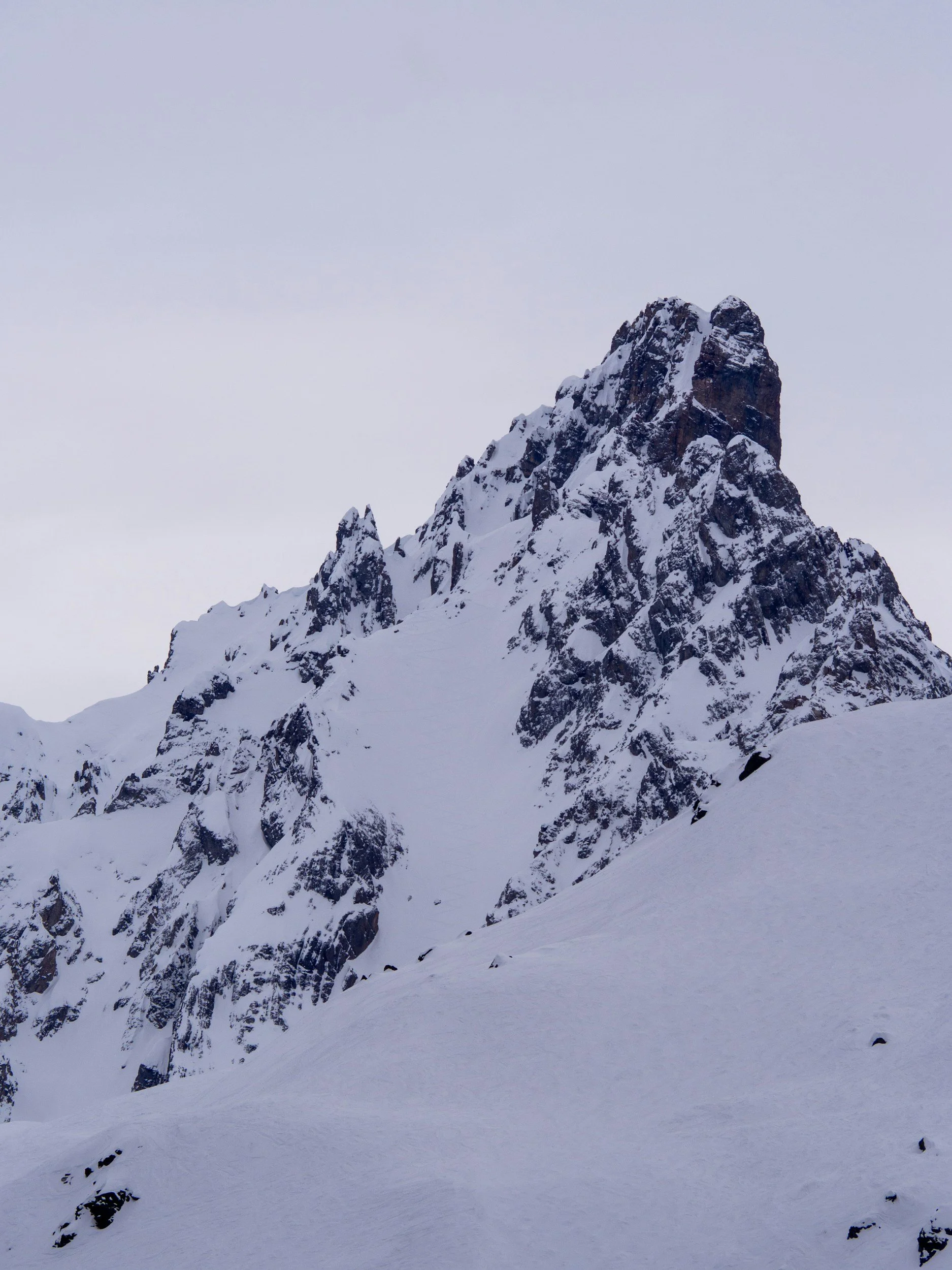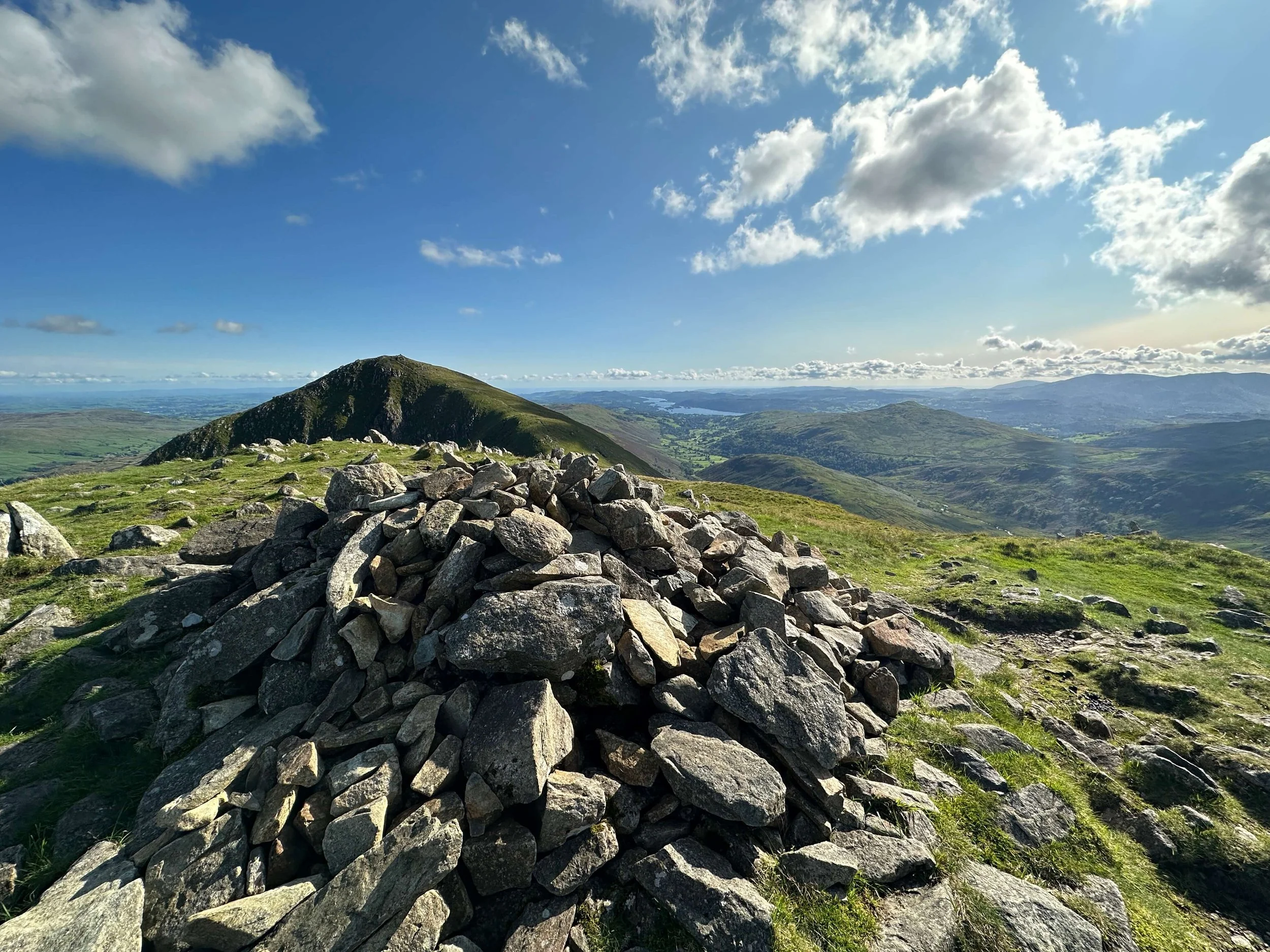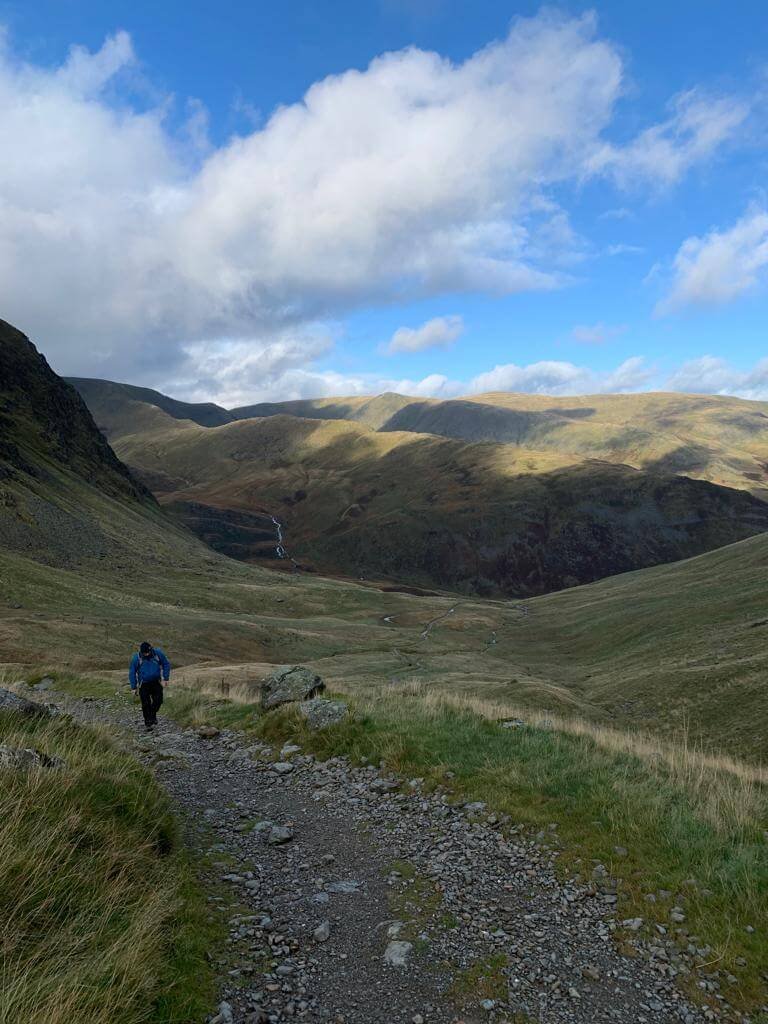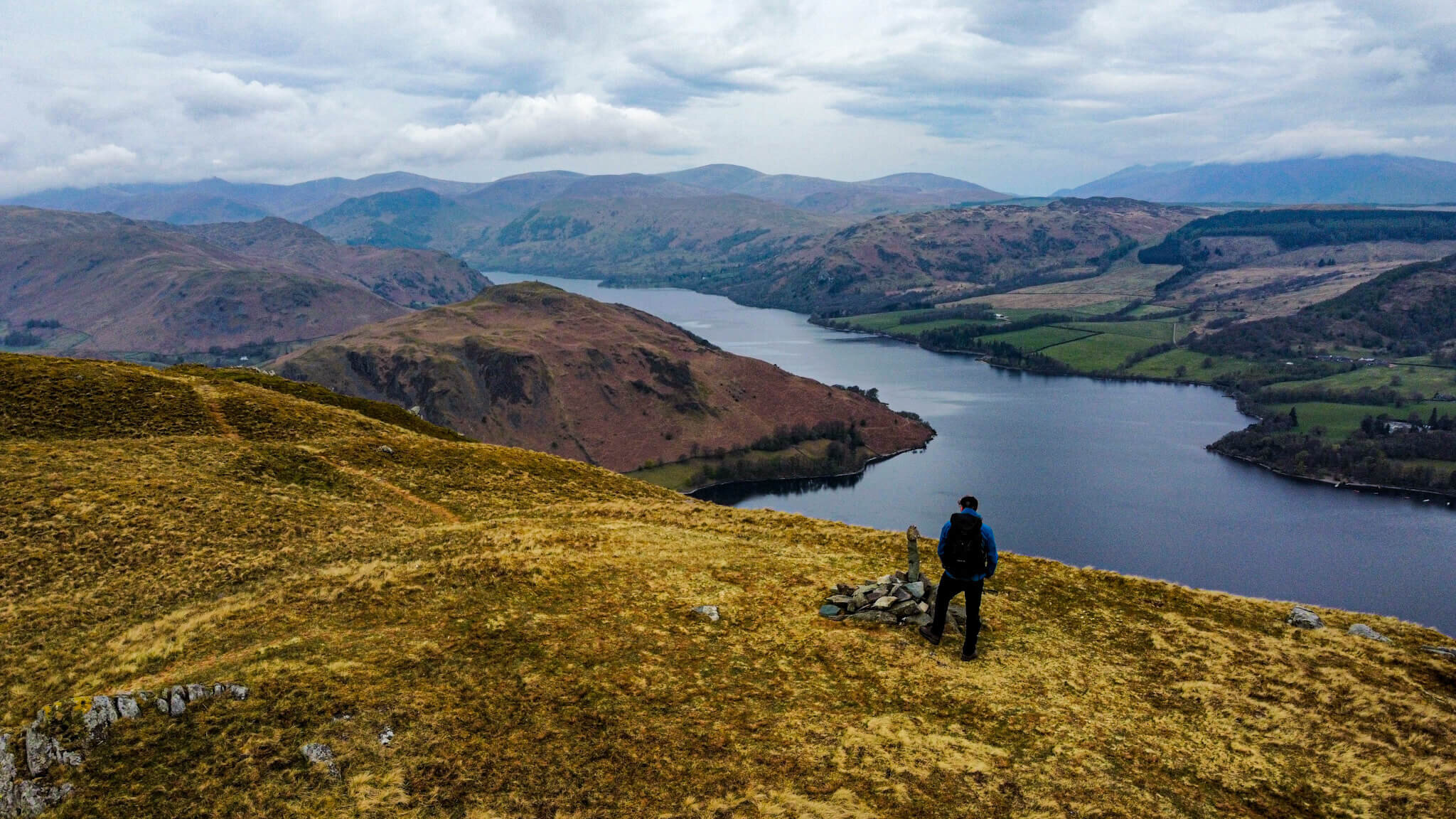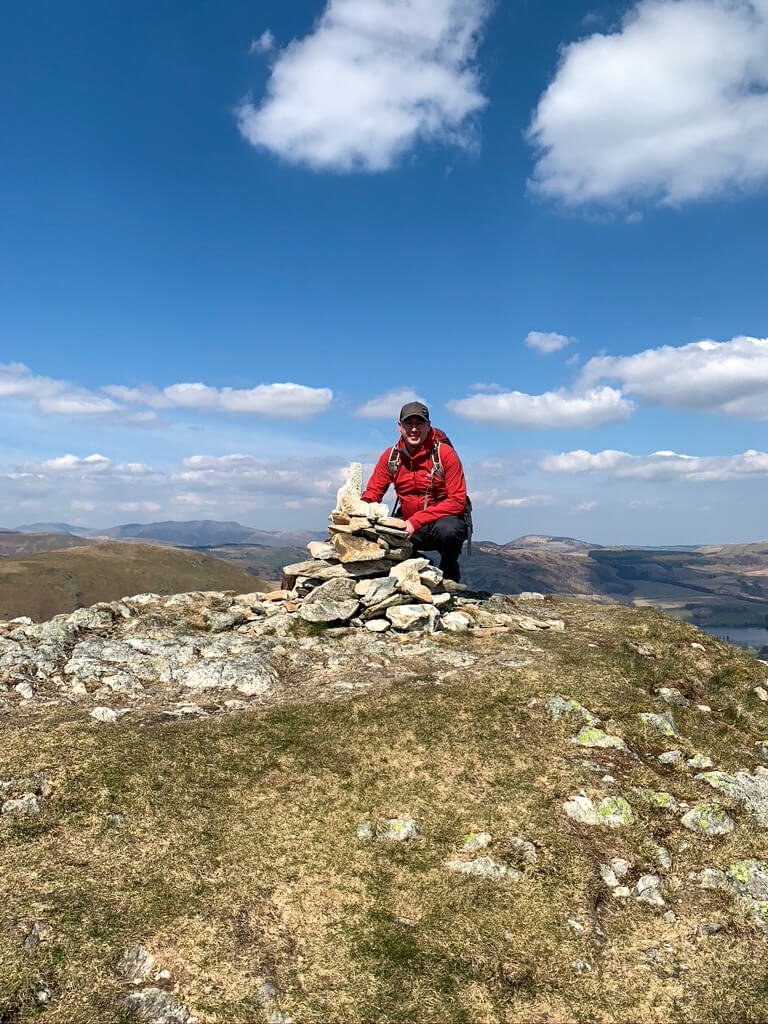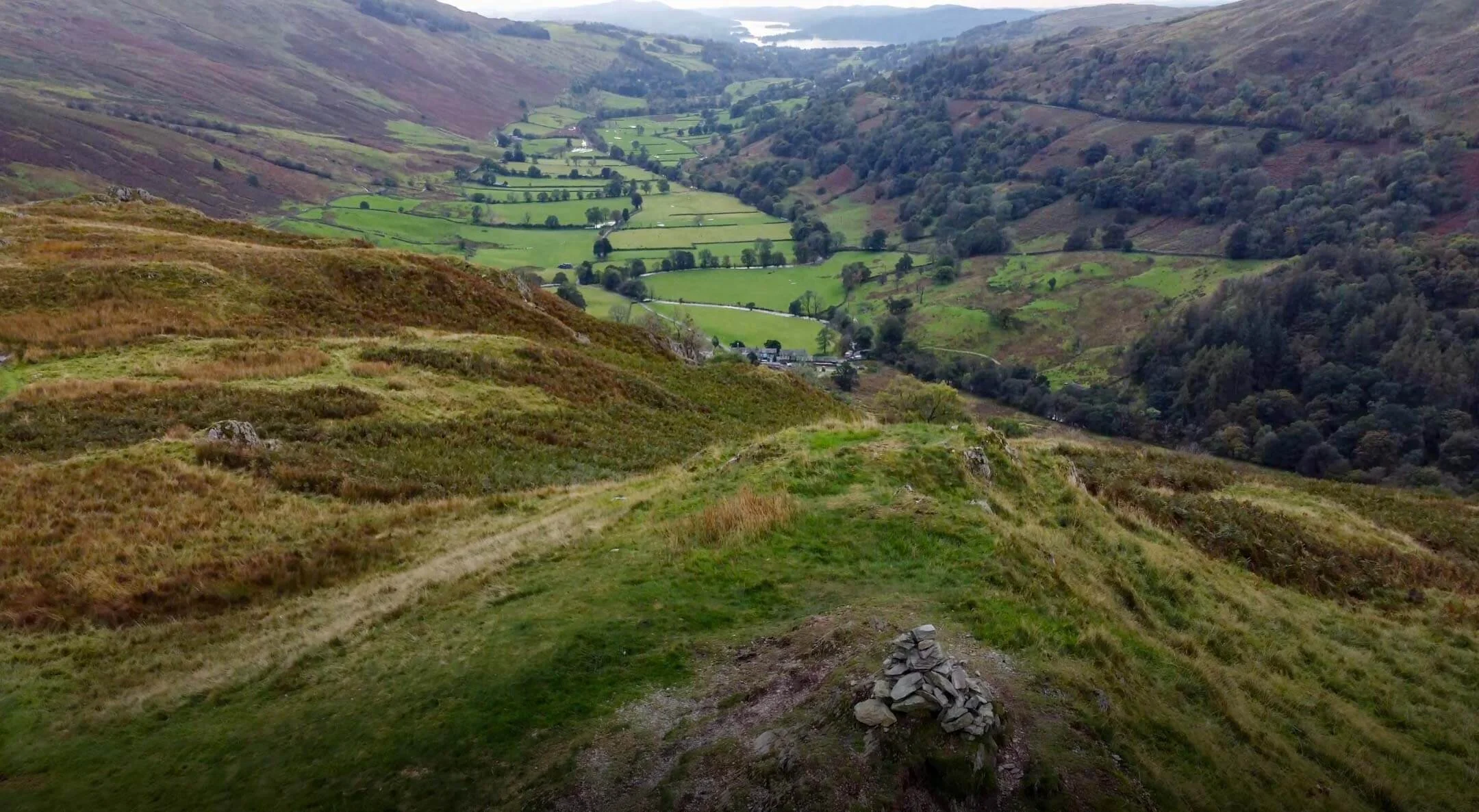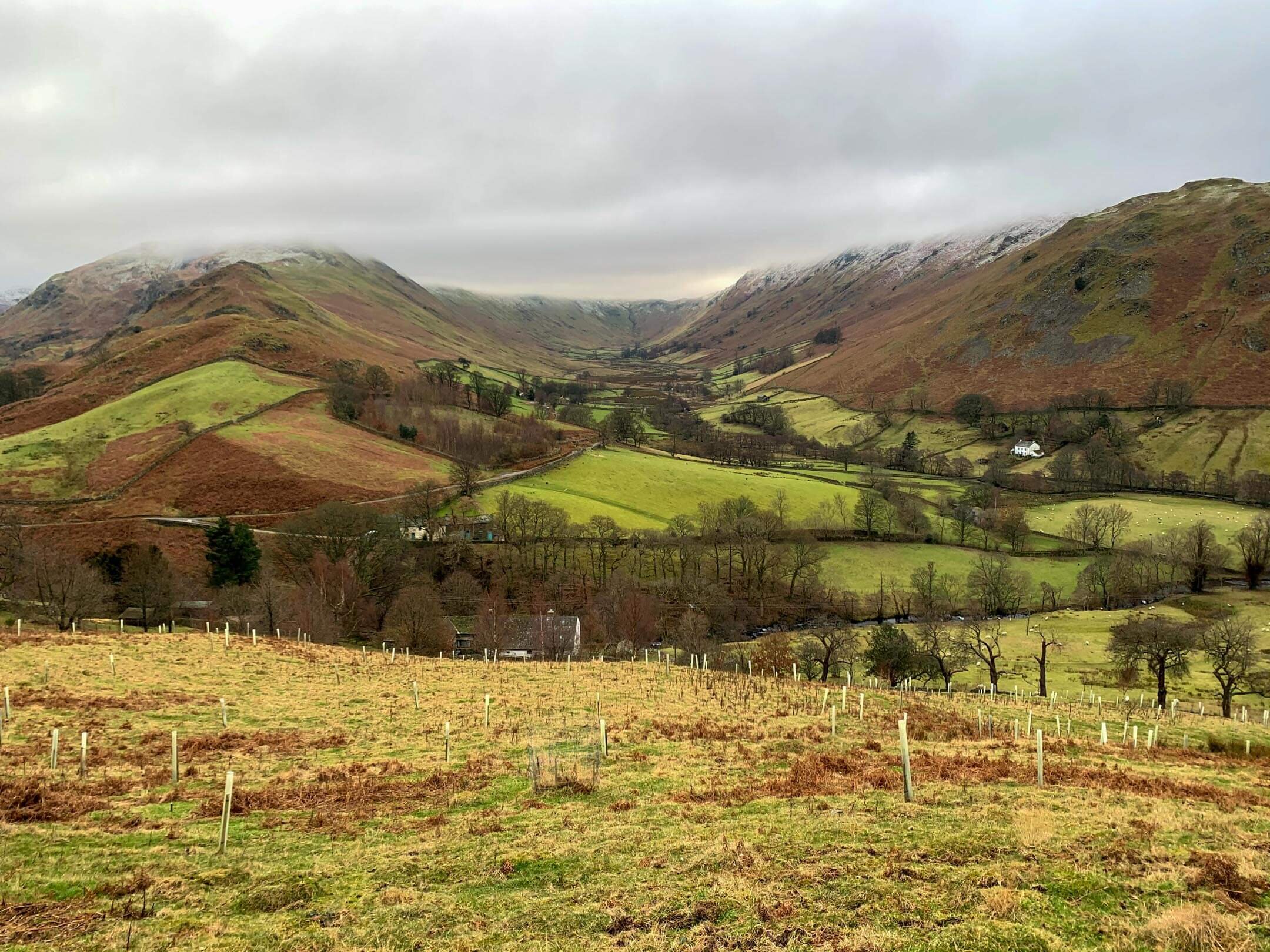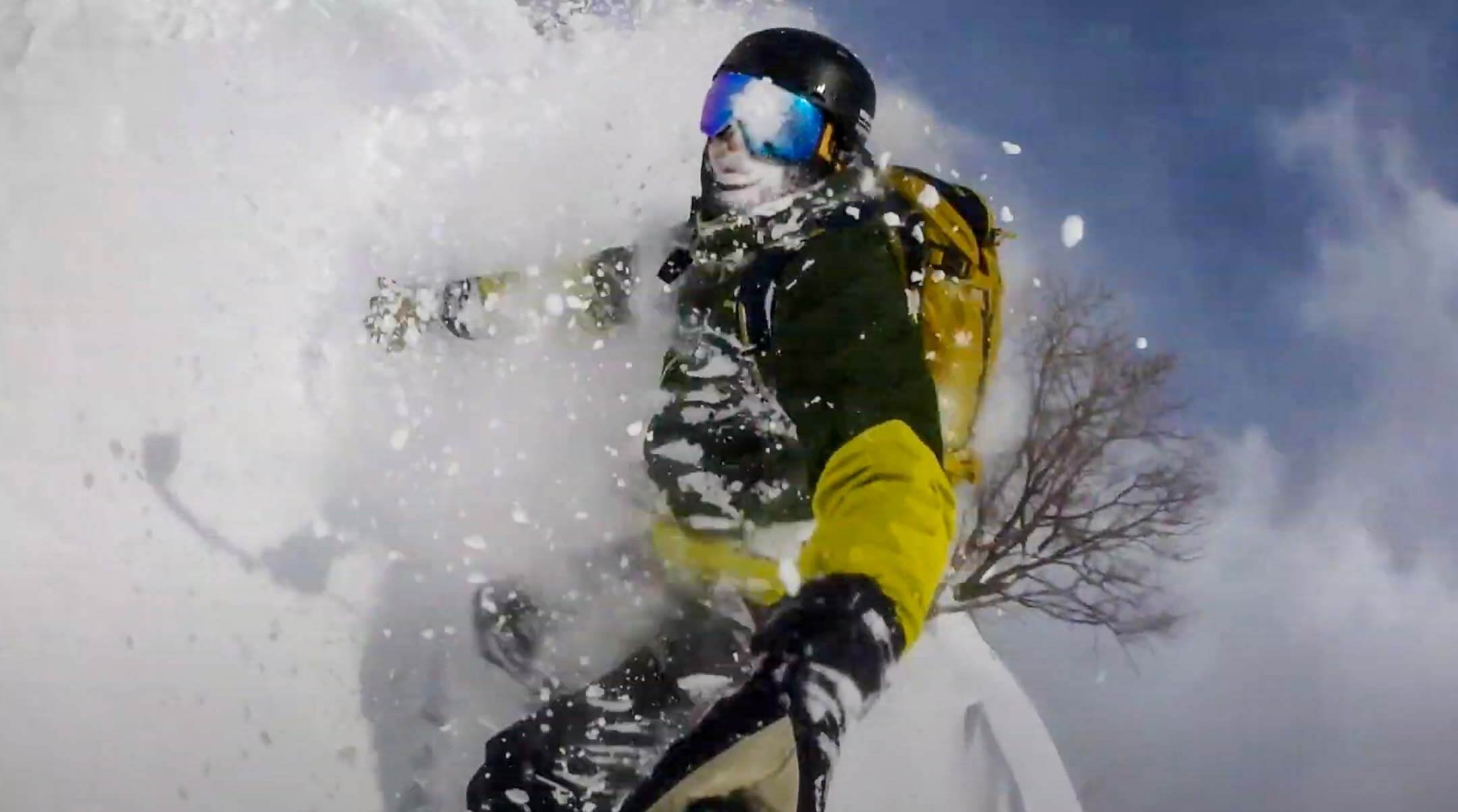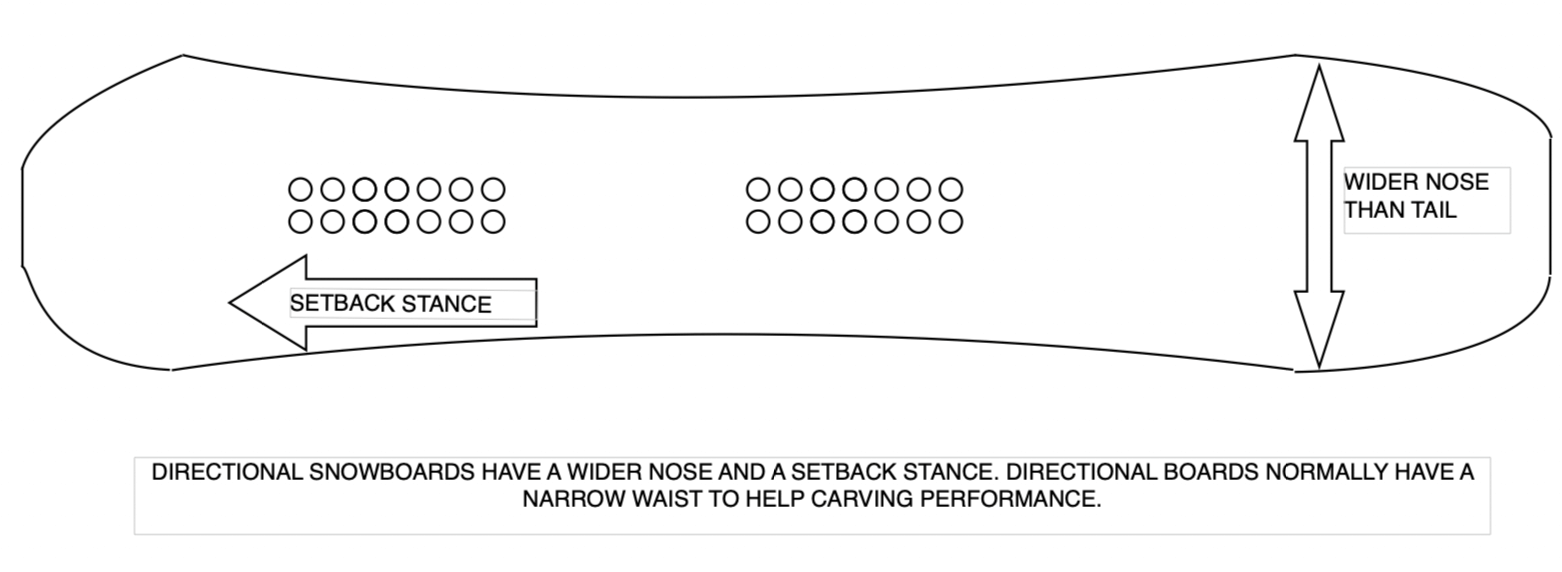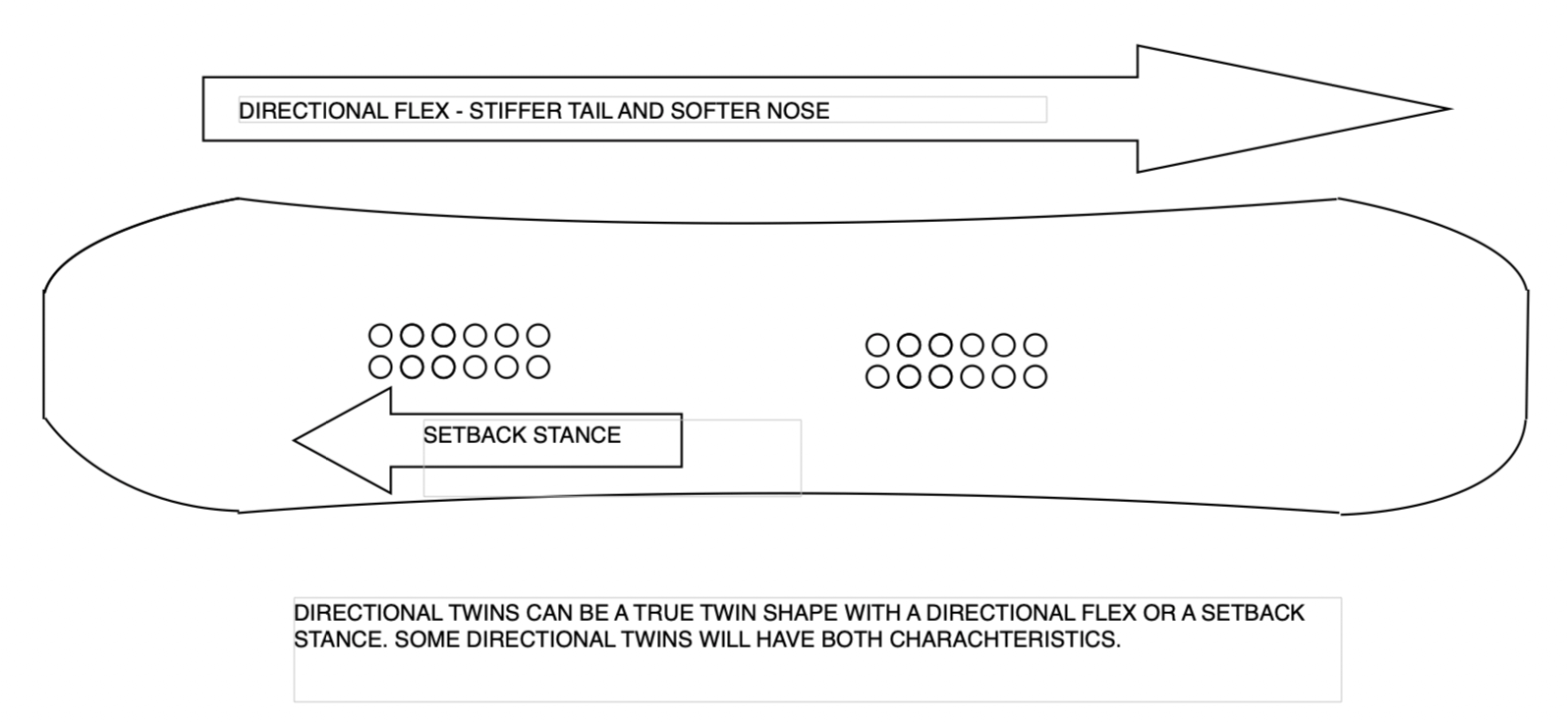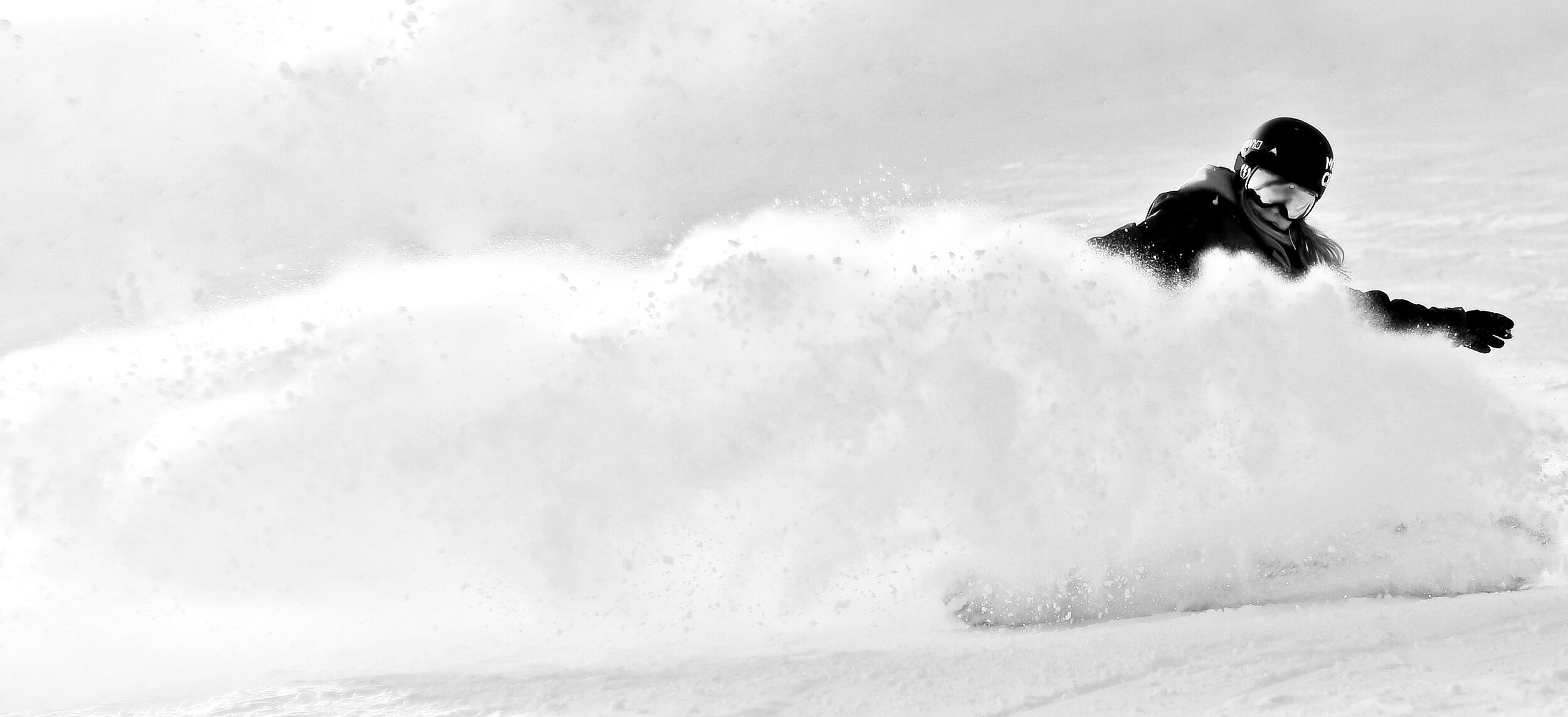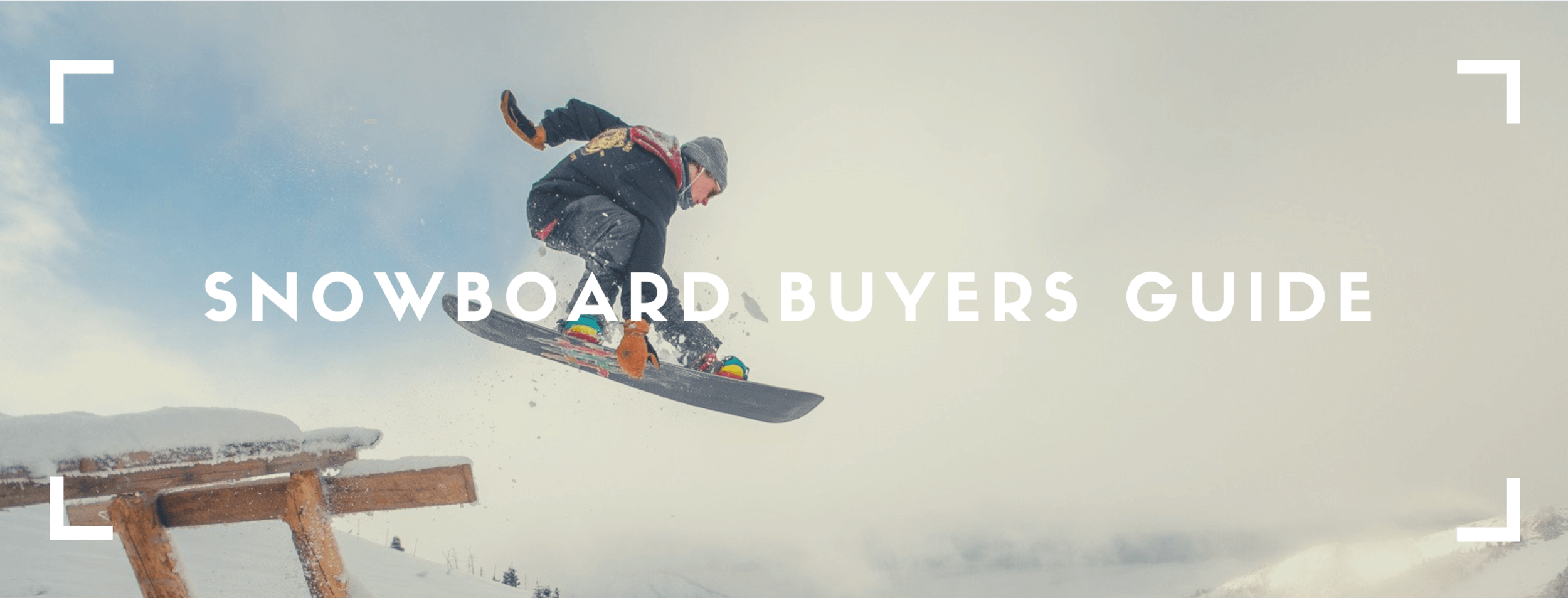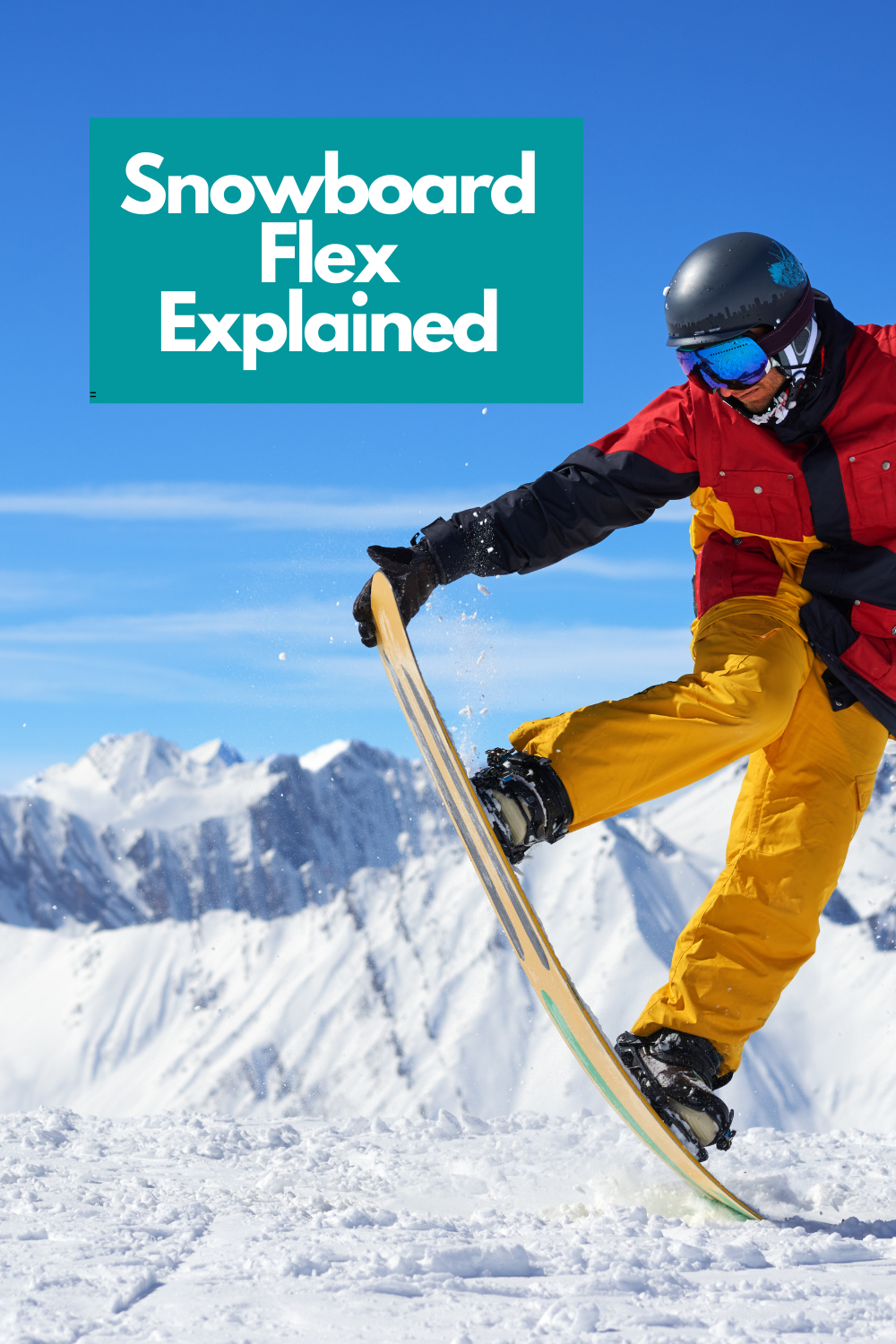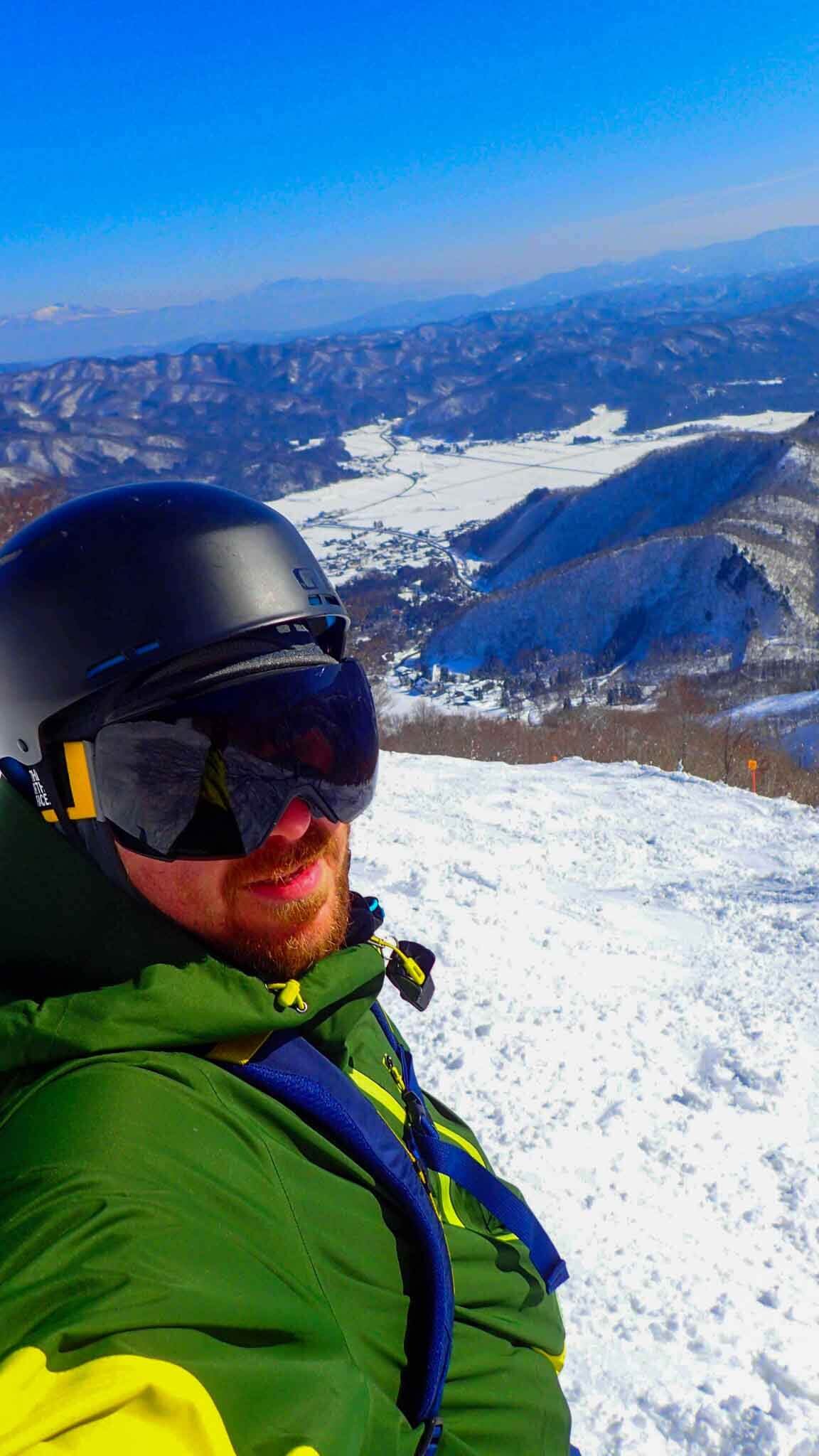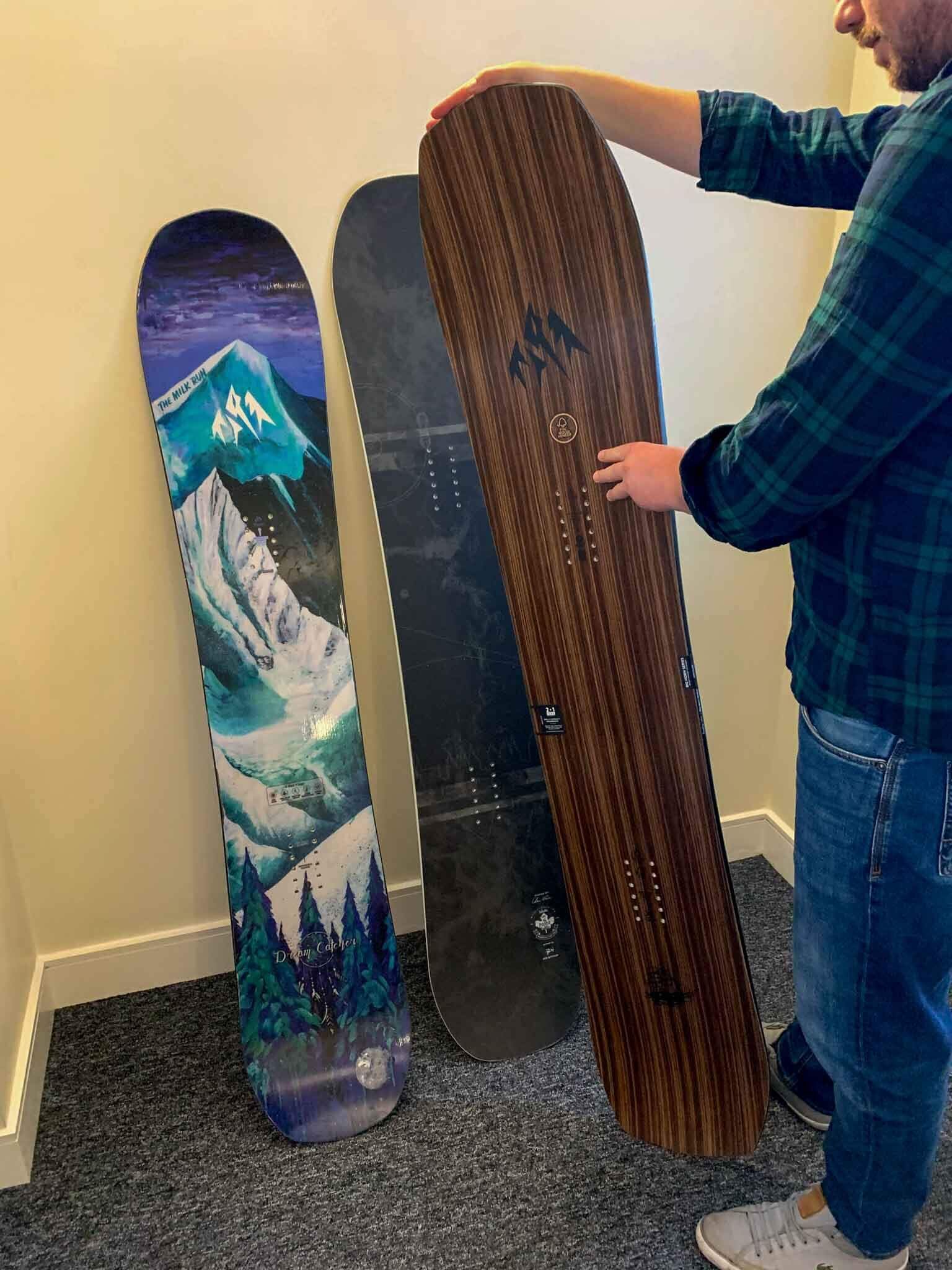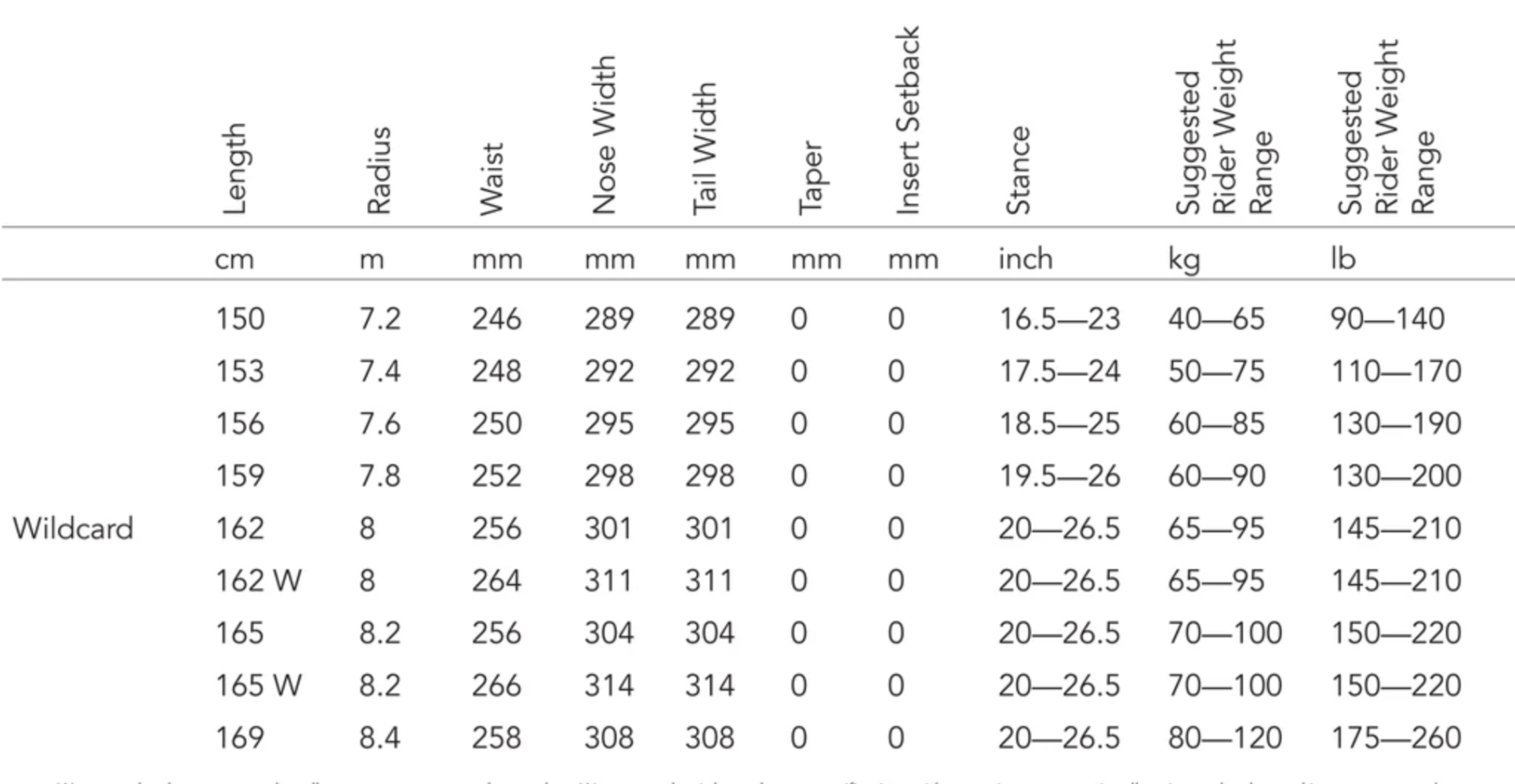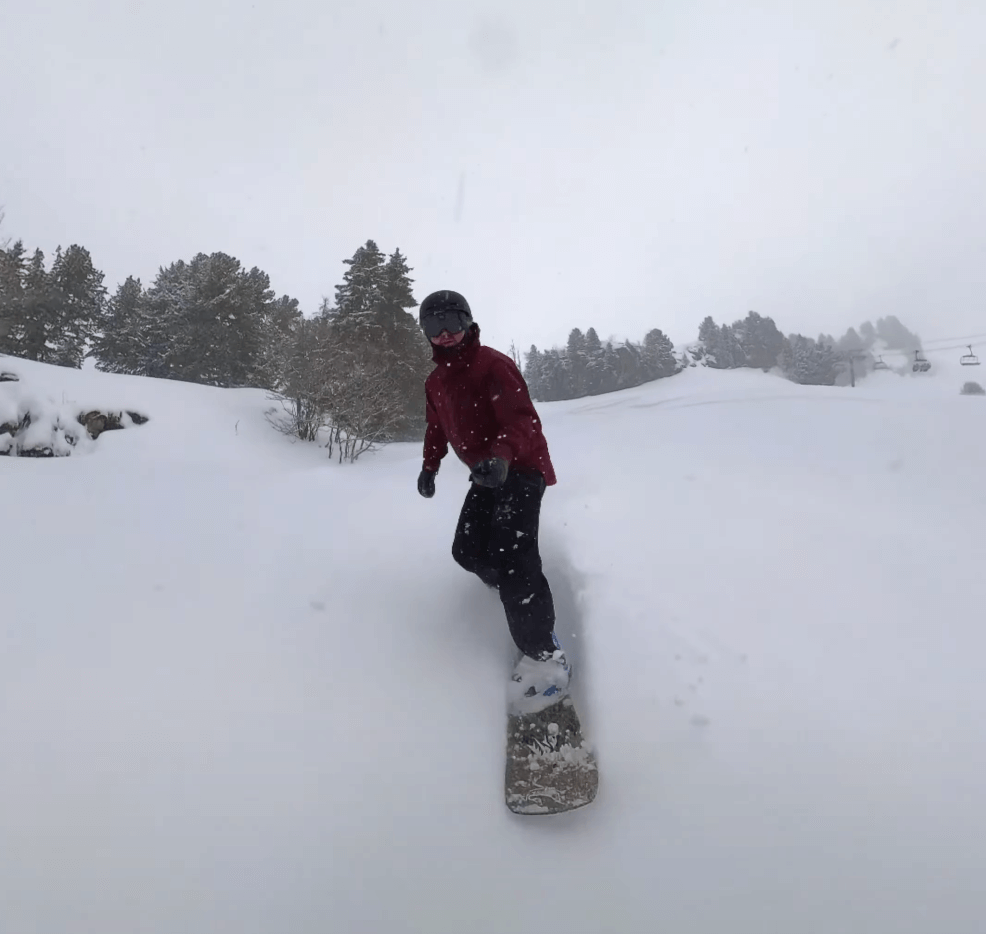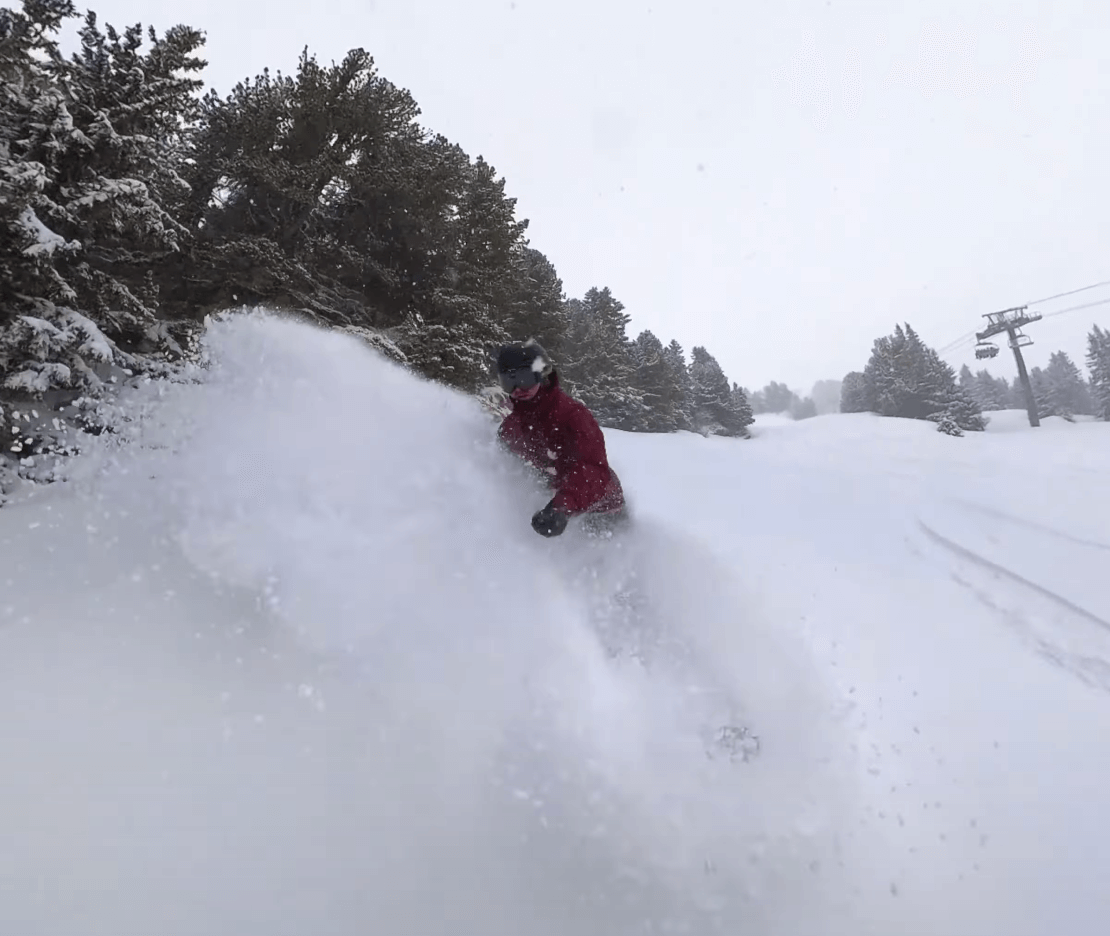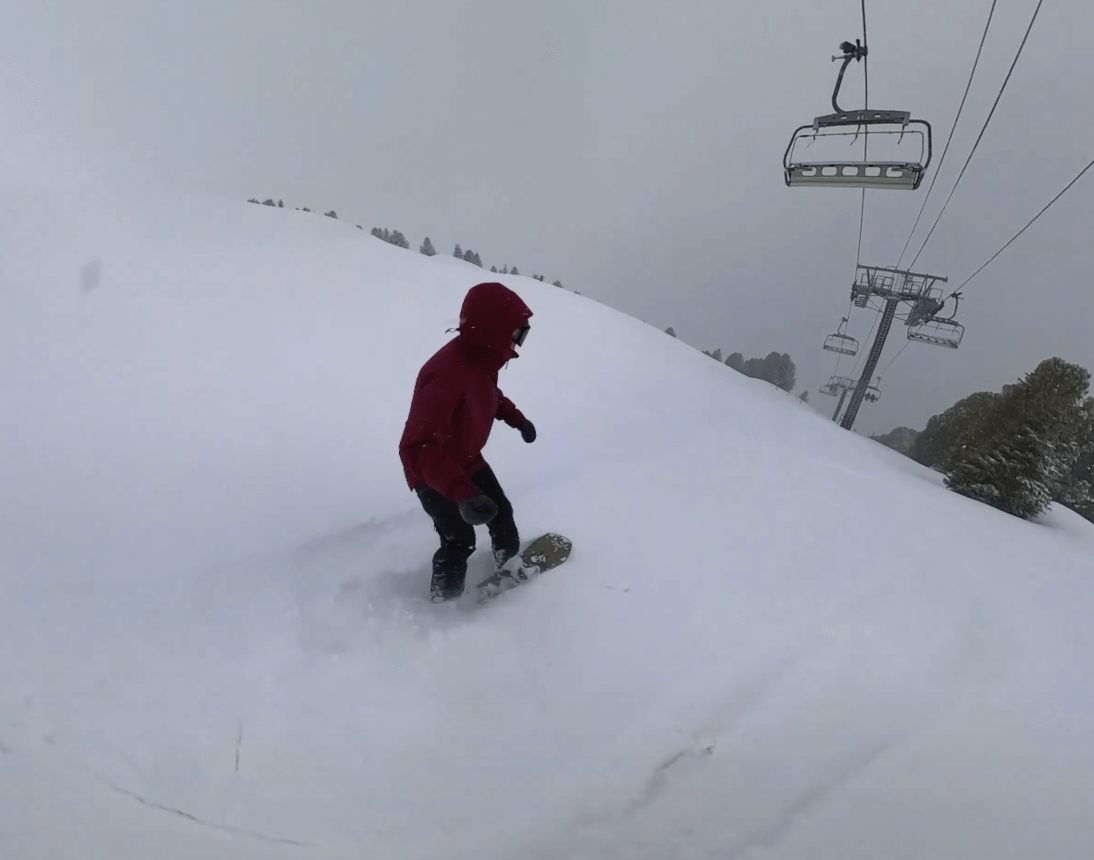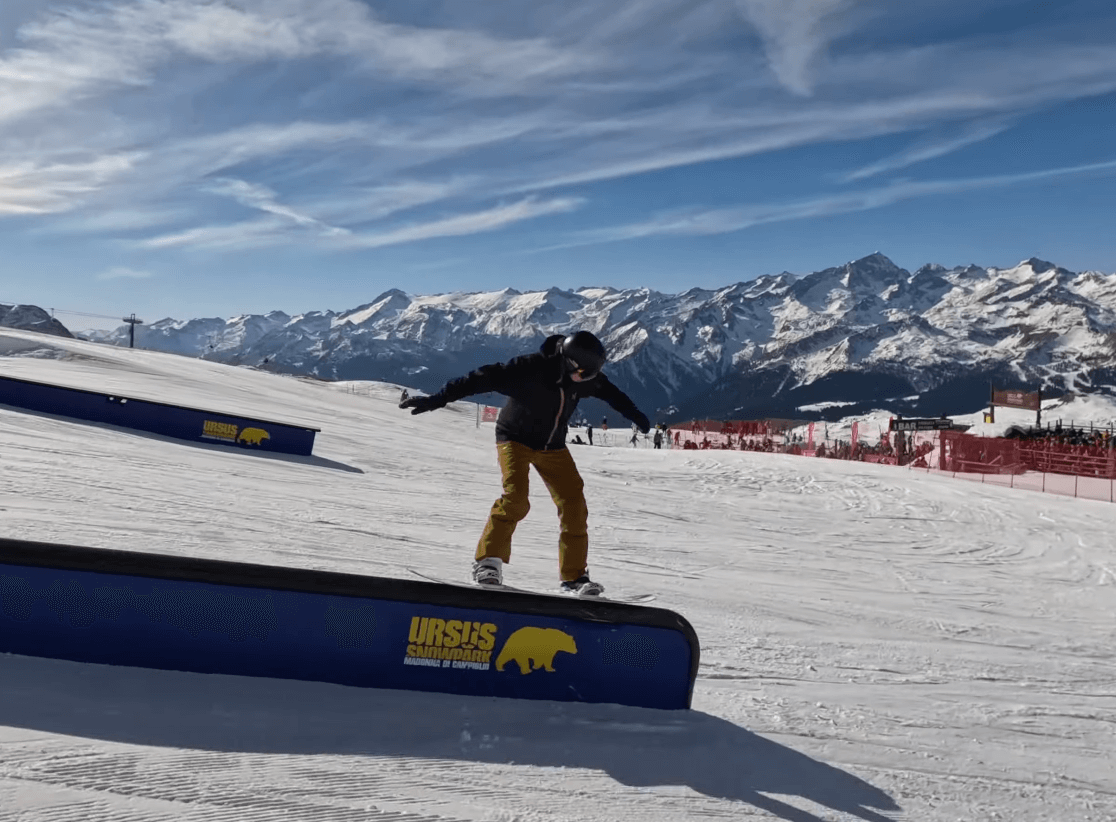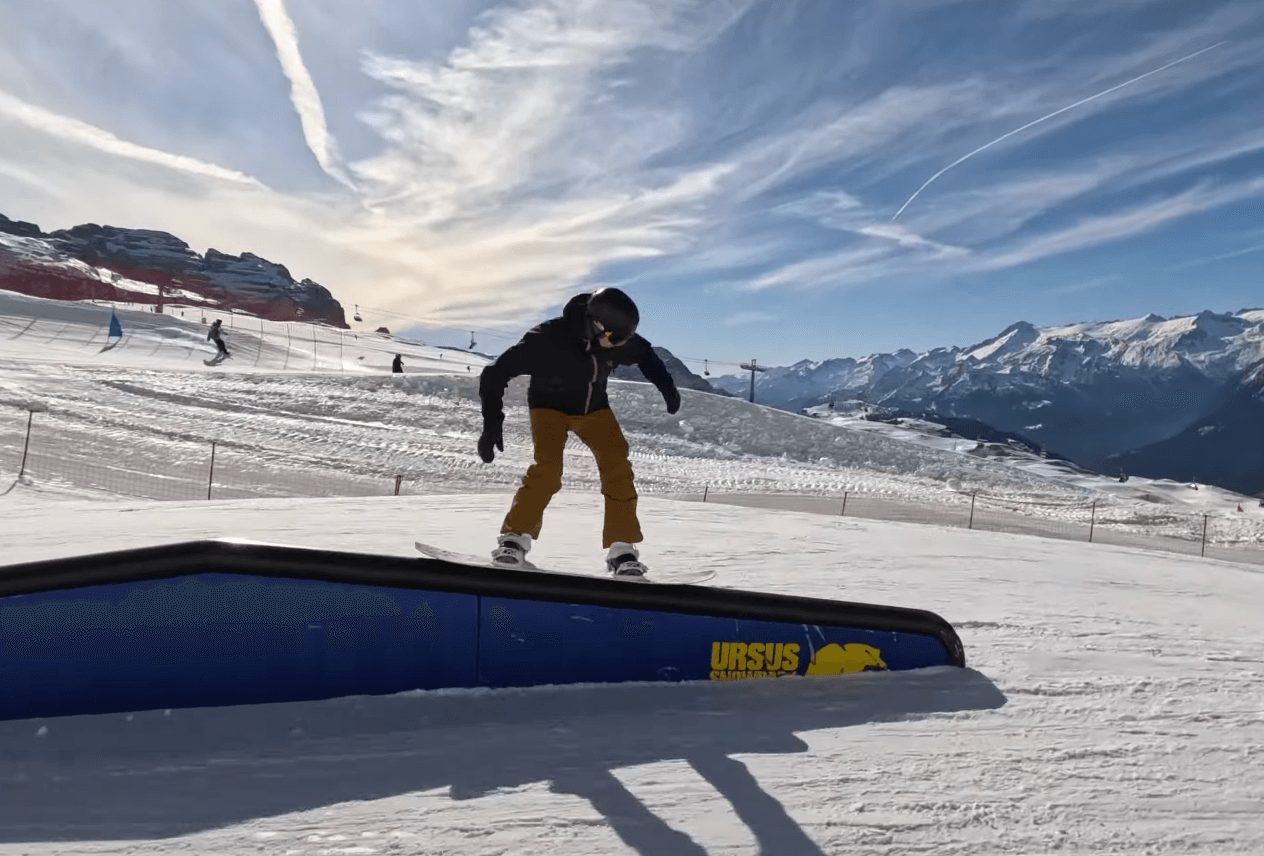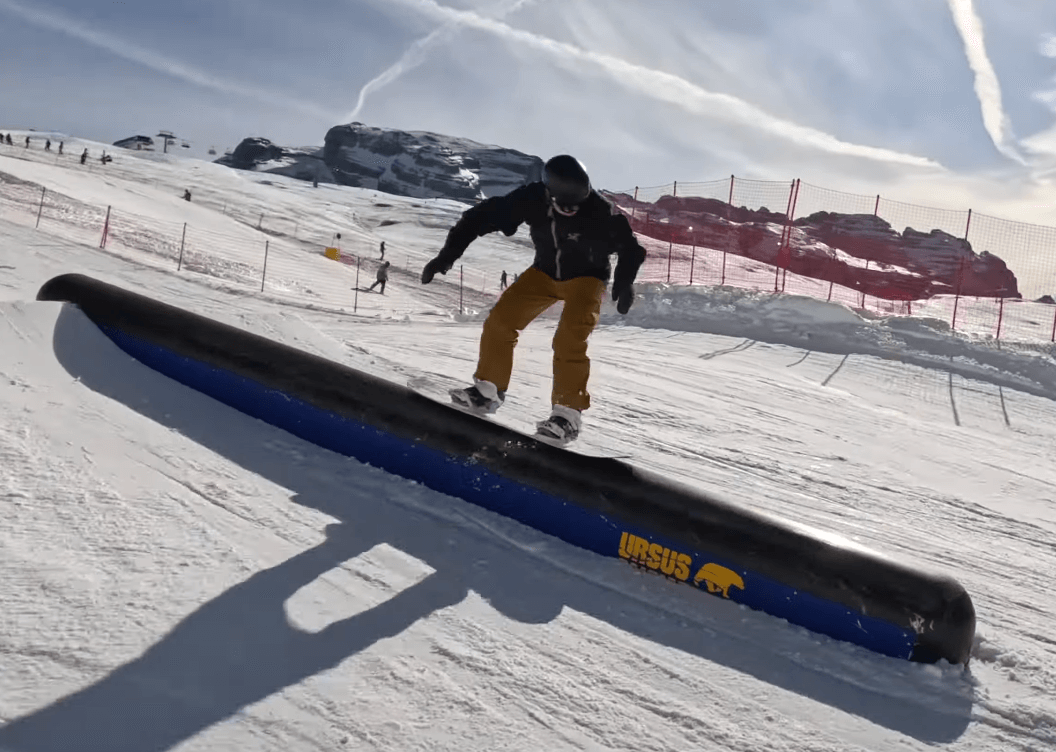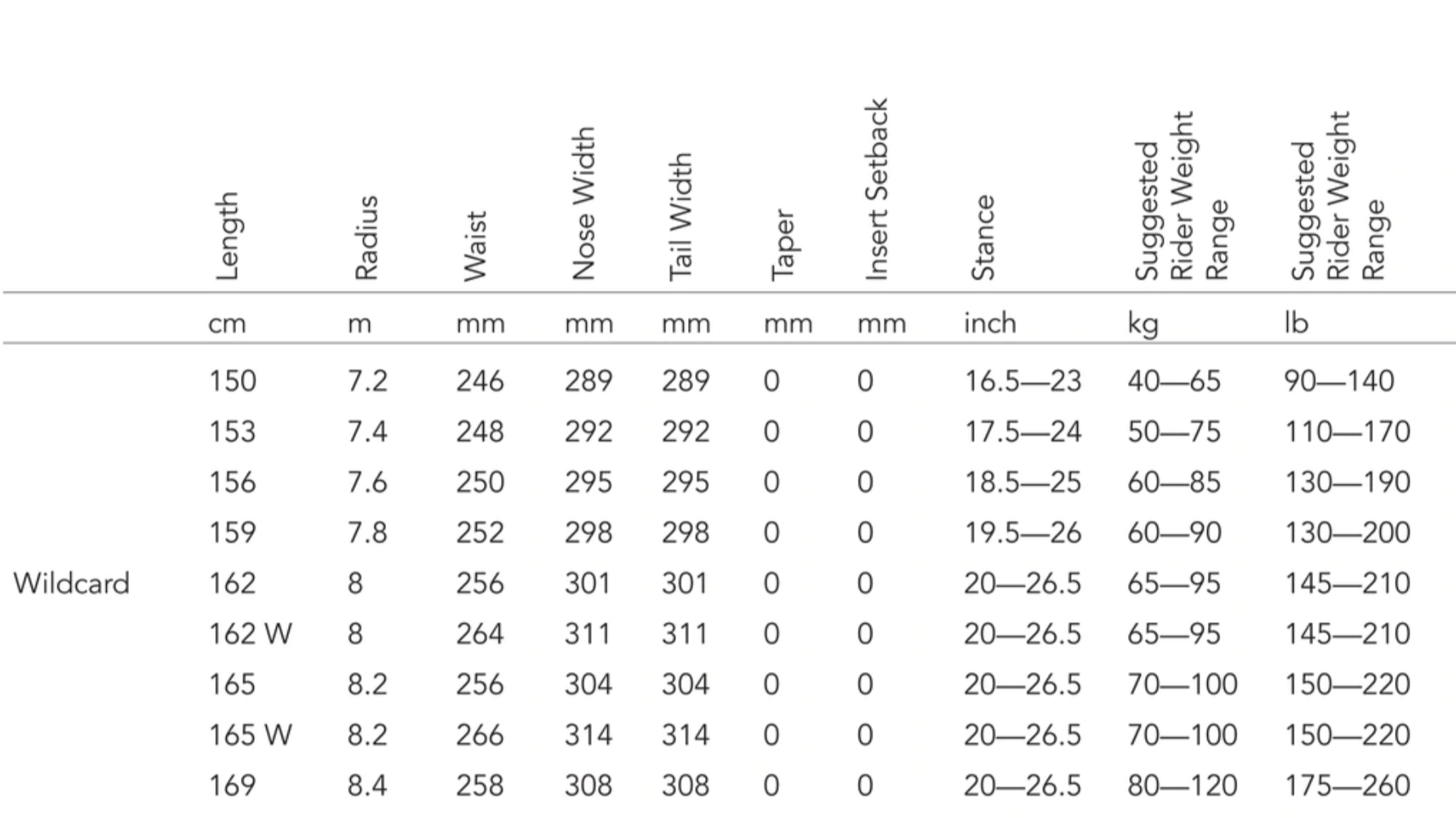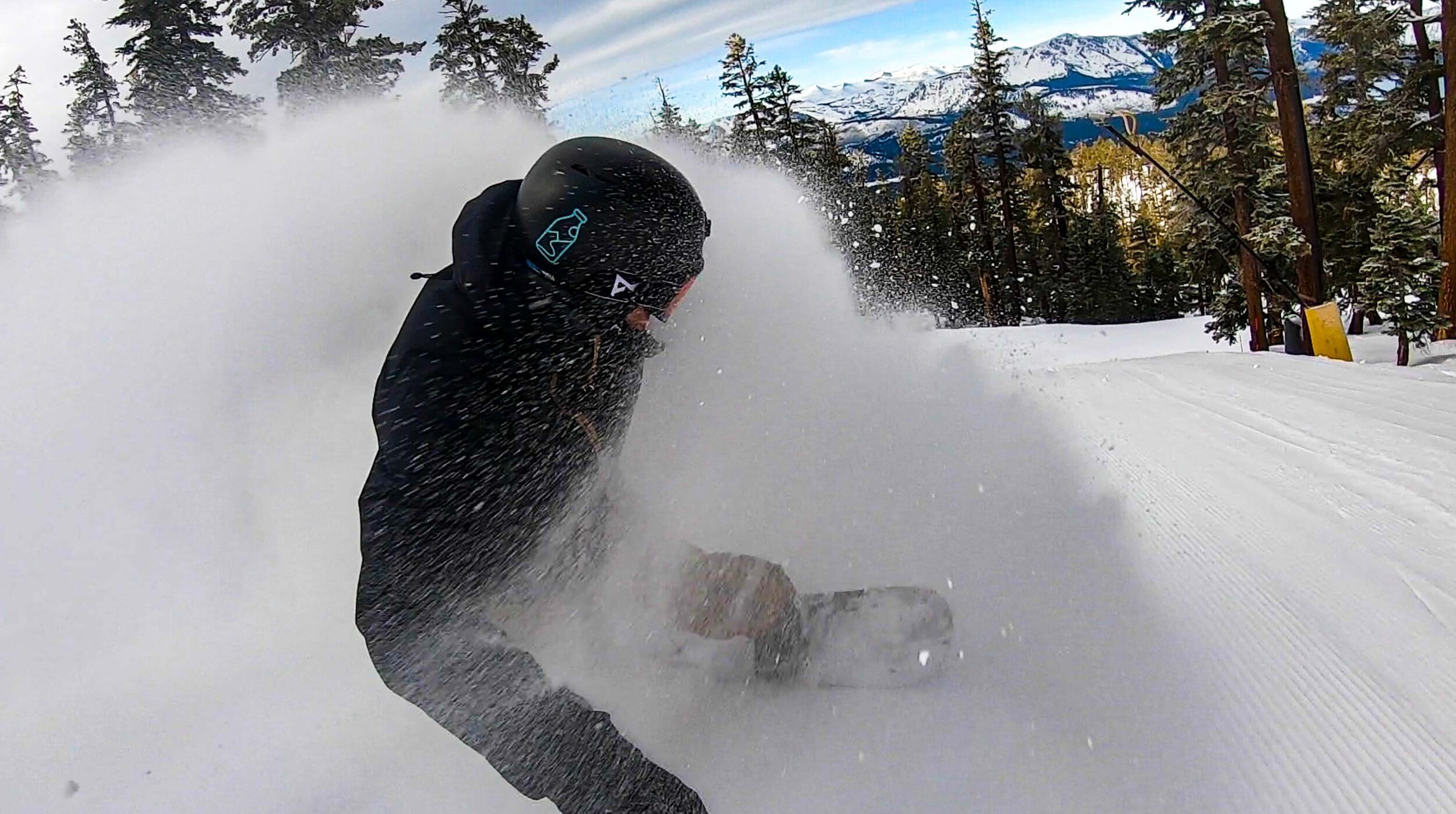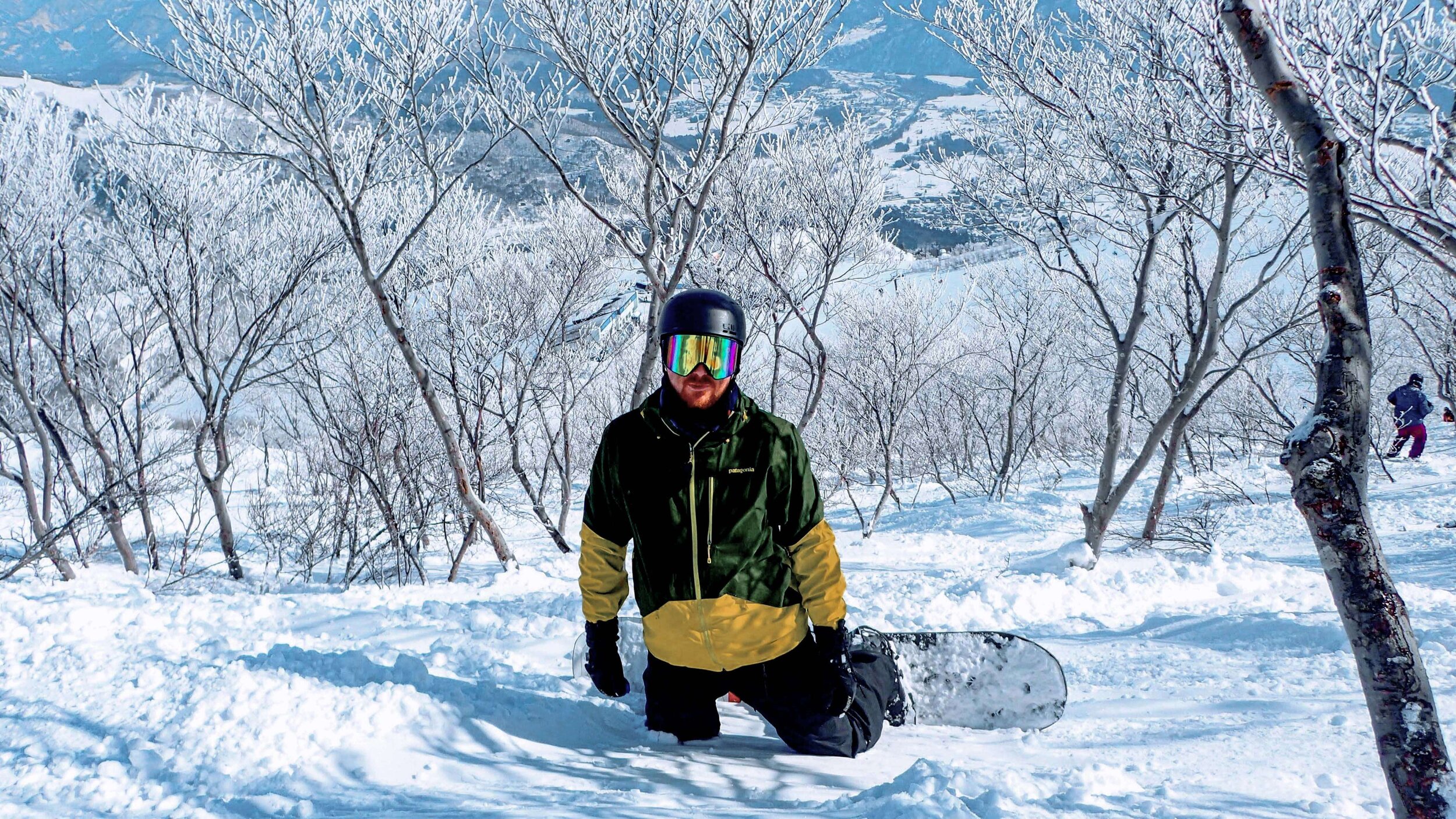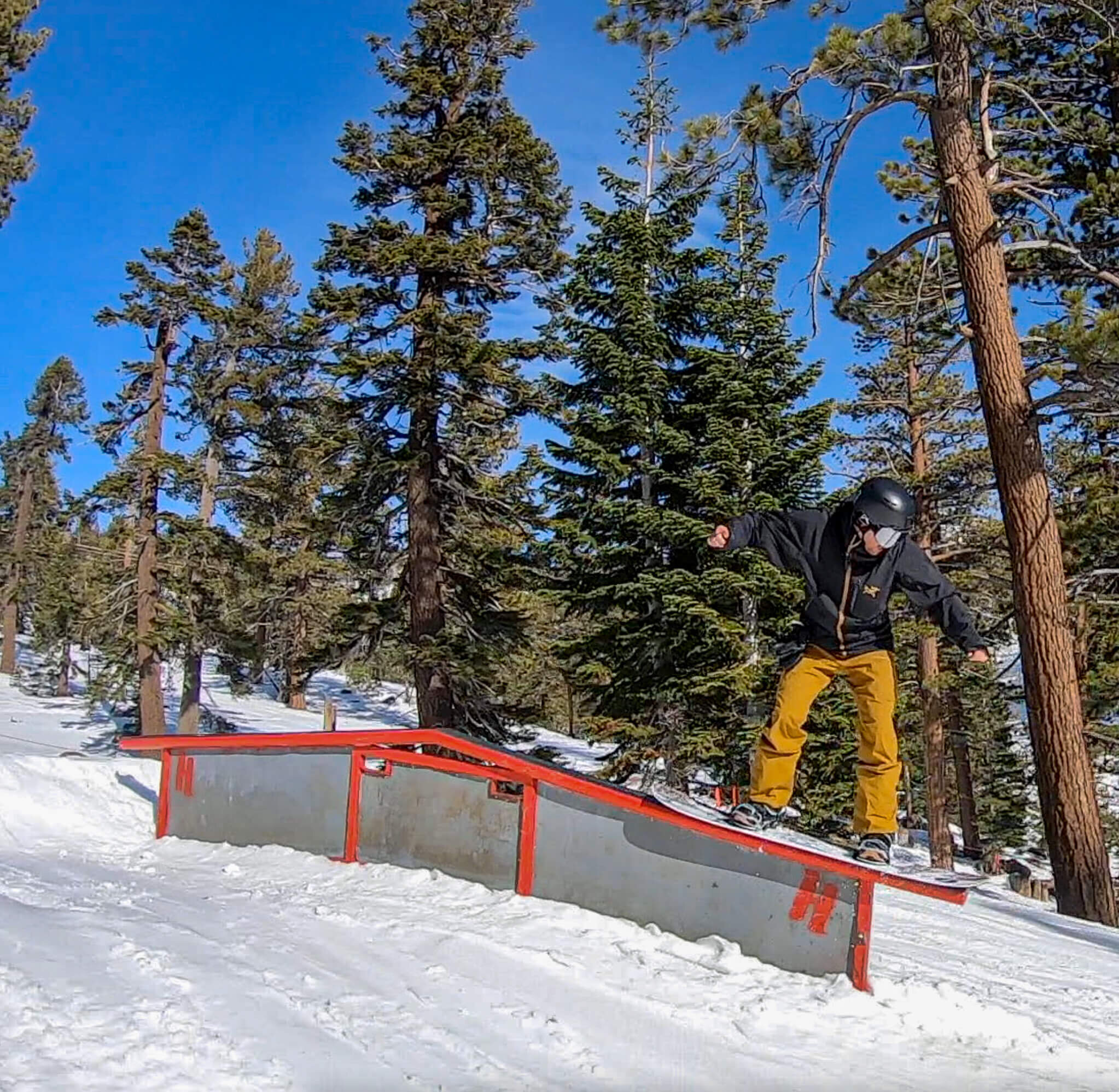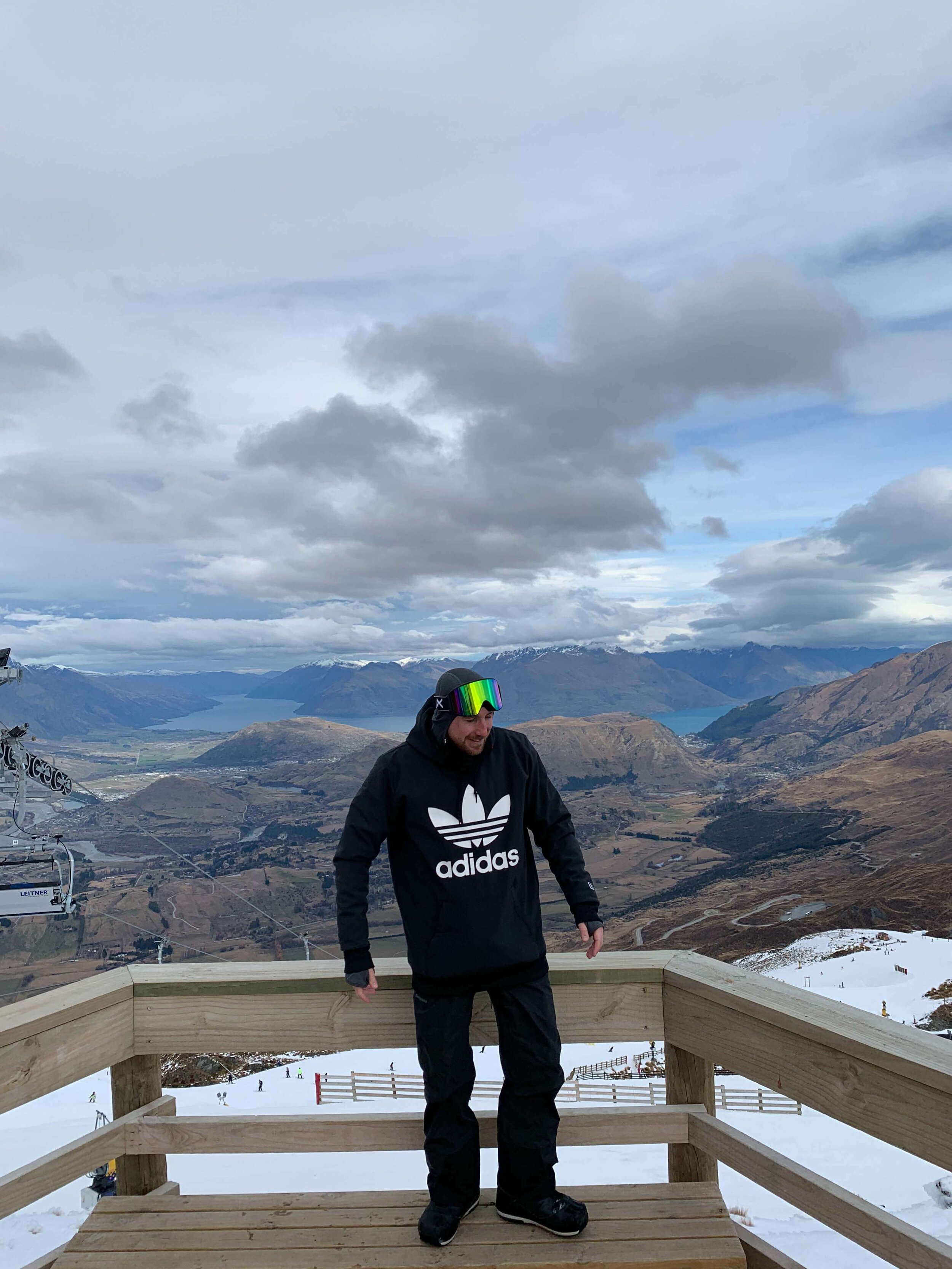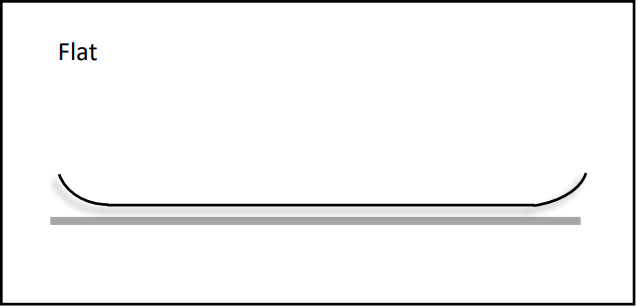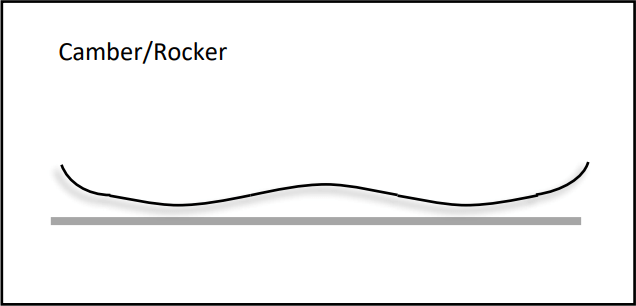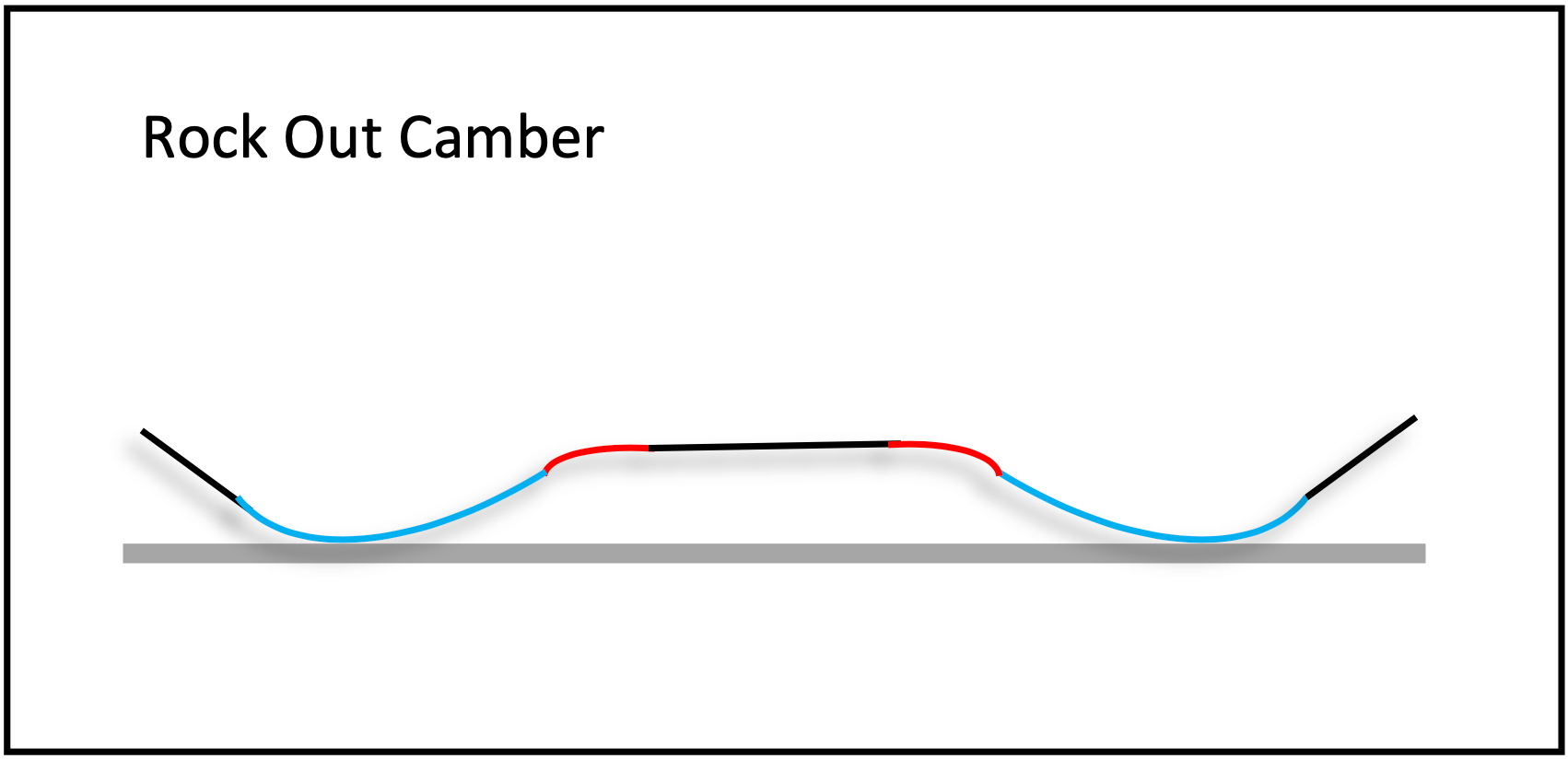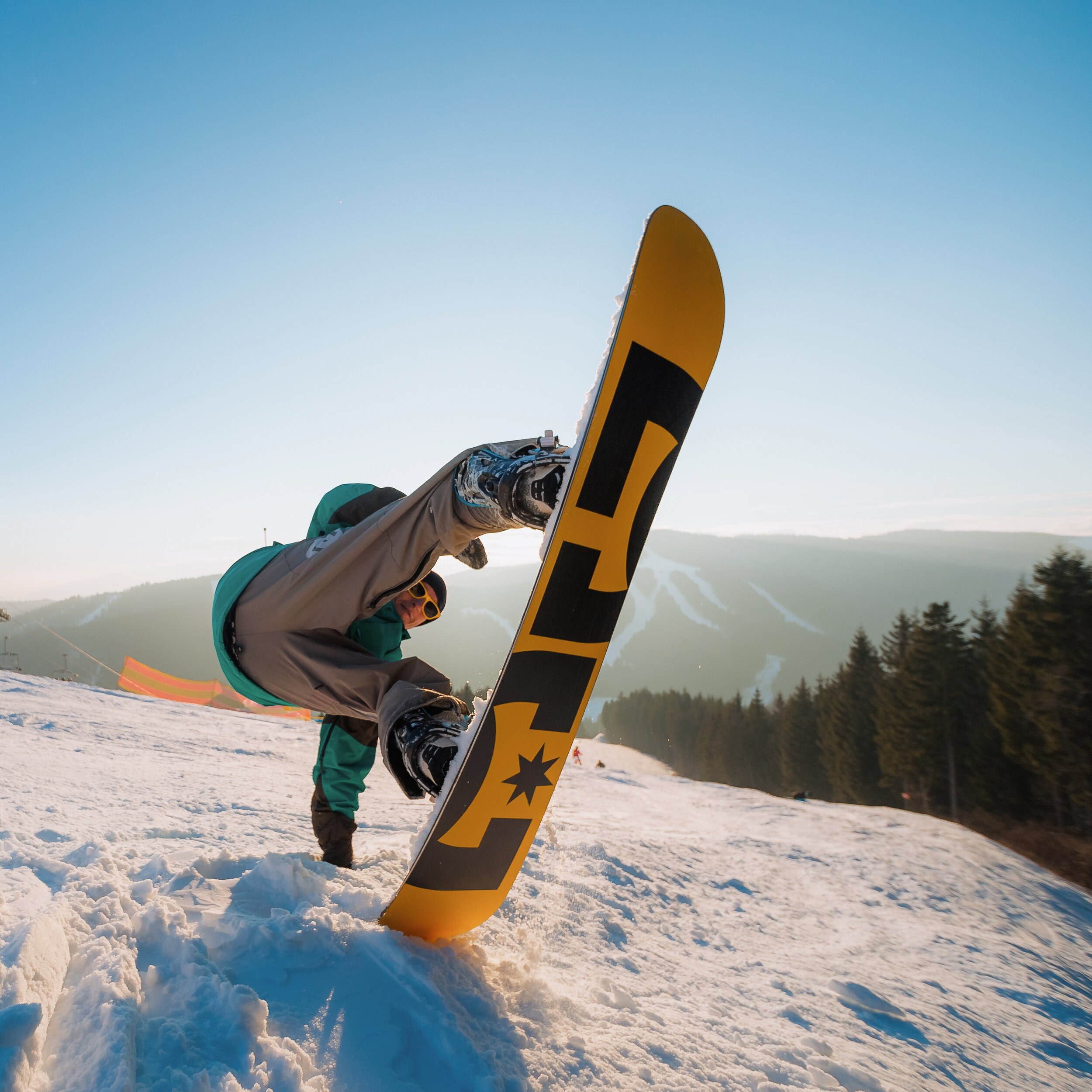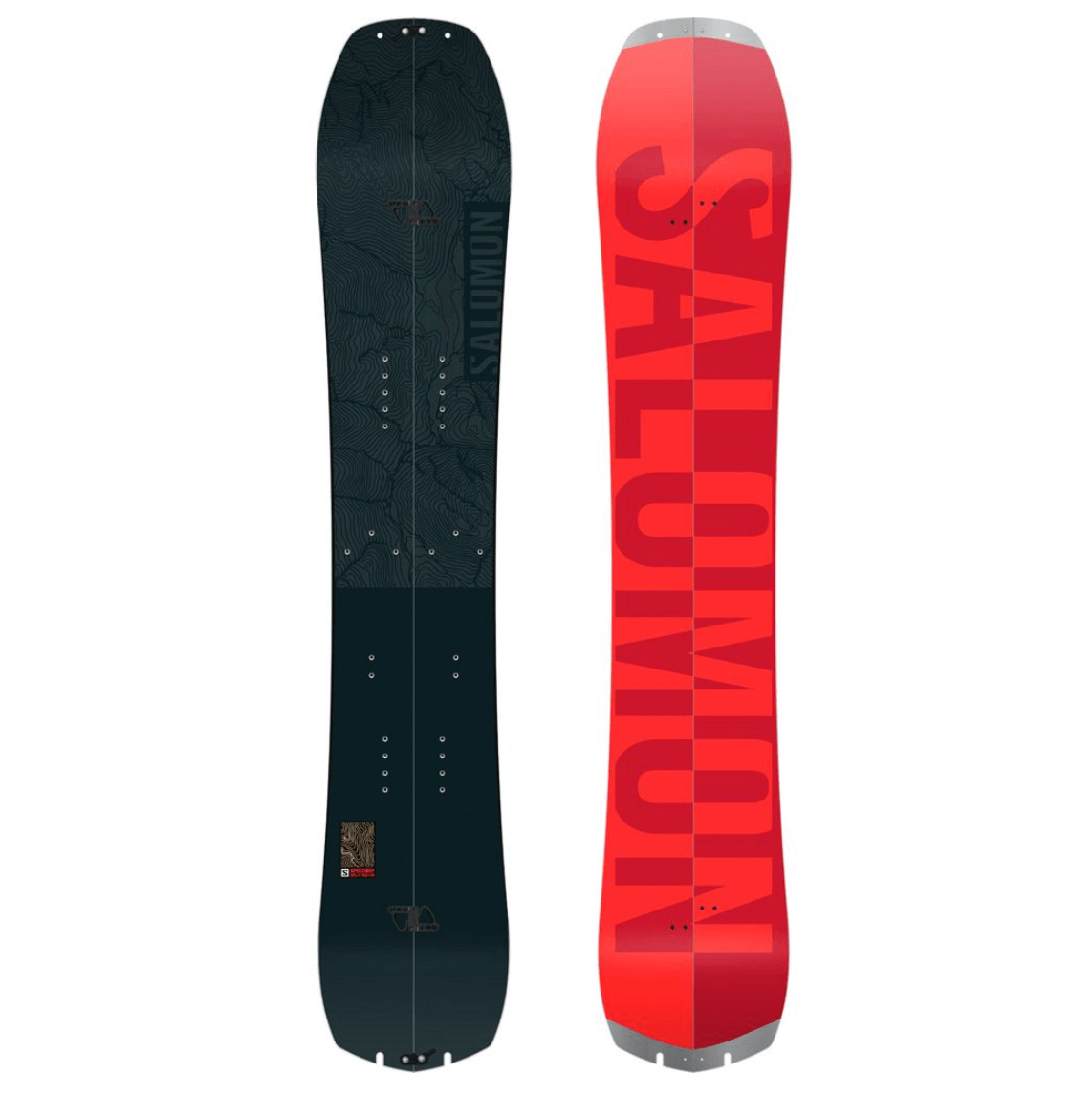Outdoor Master Falcon Ski Goggle Review
QUALITY GOGGLES AT ENTRY-LEVEL PRICES
The Outdoor Master Falcon Ski Goggle is the flagship model from a brand that has exploded its way into the ski industry. Started as a company that wanted to produce quality products for reasonable prices they aimed to lower the barrier of entrance to a sport that we all know can be expensive. A noble aim but the reality is that if the tech doesn’t stand up to the rigours of the winter sports environment nobody will use it, so let’s take a deeper look.
In this review, I will delve deeper into what makes the Outdoor Master Falcon a fantastic ski goggle by looking at the following categories; Comfort, Lenses, Strap, Anti-Fog, Cost, and comparison to competitor goggles.
This review is my opinion of the Outdoor Master Falcon Ski Goggles, which were gifted to me. My views remain my own and I was not asked to produce this post.
If you find the review useful consider purchasing your OM gear through this referral link where you can receive 15% discount on OM products. This helps me to produce more content in the future.
ABOUT ME
Before jumping into the full review it is worth noting the following information about me as a snowboarder. I am lucky to snowboard a lot but I am not a professional. I have lots of experience riding in all terrain in all conditions and have previous snowboard shop maintenance and retail experience. I use my website to express my opinions on gear and I hope you find them useful when choosing what gear works for you.
TEST CONDITIONS
The Outdoor Master Falcon ski goggle was my goggle of choice for last winter and was worn on the majority of my days on snow. Because of its regularity of use, I was able to use the Outdoor Master Falcon ski goggles across a range of conditions as well as testing a diverse range of its lenses.
COMPETITORS
Before getting into this review you may find it useful to watch the video below where I compare the Outdoor Master Falcon to some of the biggest brands on the market. This video serves as a good overview to see what you can expect from the medium size magnetic lens goggles on the market.
COMFORT
When it comes to reviewing ski goggles you can get bogged down in all the tech however it is important to remember the number one key factor has to be comfort. If the goggle doesn’t feel comfortable for you then it will annoy you all day long.
The Outdoor Master Falcon Ski Goggles are a medium-sized frame that offers a good fit for a range of faces, as always it is best to try your goggles on to check that the nose bridge and other key areas are a good fit for you.
The Outdoor Master Falcons frame has a triple-layer foam which compares favourably to other high-end brands. This foam is soft on the face and supple enough to ensure a good fit to your face contours.
LENSES
The OM Falcon utilises a magnetic lens change that is super simple. Literally pull the lens off and drop the other lens in place. I love the lens change on this goggle and have had no issues with the magnets failing if I take a tumble.
One major plus for the OM Falcon ski goggles is that they come with a Zeiss SONAR lens. SONAR lenses boost contrast by filtering blue light which makes them a better option than a regular lens if you want to see every bump and contour in the snow.
SONAR lenses have been used by companies such as ANON and POC on more expensive ski goggles such as the ANON M4 which retails for over £200 more in the UK.
The Outdoor Master Falcon also matches premium brands by providing two lenses with each goggle purchase. This means that you always get a low-light lens for the cloudy overcast days and a lens to use in bluebird conditions.
The video below gives a good overview of the Outdoor Master Falcon lens range however my thoughts can be compressed into the following.
Green - Best Low Light Lens I have used
Red - brilliant all-round everyday lens
Sonar Dark Smoke - great on sunny days.
FIELD OF VIEW
An important category for me when choosing ski goggles in Field of View. I have always favoured larger frames that allow for increased peripheral vision both for purpose and for style. The OM Falcon has a comparable field of view to the ANON Sync and Spy Marauder but a reduced FOW compared to larger frames such as the ANON M4 or the SMITH Squad Mag XL.
The OM Falcon still allows for a wide peripheral view that offers a great view of the mountain and other skiers around you.
STRAP
There isn’t really too much to say here other than the strap does everything you would expect. With full adjustability and anti-slip silicone the strap compares favourably to that on other brands. I am a fan of the clip on SMITH goggle straps and that’s the only thing I can think of that drops my rating to 4/5.
ANTI-FOG
Again like comfort the Anti-Fog on ski goggles can make or break your day on the hill. The OM Falcon ski goggles have a few specific features that ensure a fog-free experience.
VAPOUR SHIELD
The OM Vapour Shield Treatment is a coating that is applied to the lens which absorbs moisture. This sponge-like effect ensures that any moisture in the goggle is wicked away quickly to prevent it causing issues to your vision.
TRIPLE LAYER FOAM
The Triple Layer Foam is an important factor in the OM Falcons anti-fog properties. Triple Layer Foam ensures that ventilation is possible with airflow into and out of the goggles.
PRO TIP - ENSURE A GOOD GOOGLE/HELMET FIT SO THAT THE VENTING ON THE TOP OF THE GOGGLE DOES NOT GET BLOCKED.
COST
Probably the category that has brought you here in the first place. The Outdoor Master Falcon Ski Goggles retail for £85 in the UK which quite simply is phenomenal. For the £85 you receive the goggle frame, two lenses, a protective case and two microfibre cloths. When compared to rival brands this is simply unmatched.
ANON SYNC - £200
SMITH SQUAD MAG - £219.99
SPY MARAUDER - £170
USEFUL OUTDOOR MASTER VIDEOS
FALCON E-QUICK HUE LENS OPTION
The OM Falcon Ski Goggle is also available in the E-Quick Hue Version. This version of the goggle comes with a lens that changes automatically depending on conditions. There will be a full review on this version coming soon but for now check out the video below to see the lens change between 15%VLT and 53% VLT in an instant. Honestly… mind blown!
This version retails for £117 UK and you can save 15% of all OutdoorMaster Purchases using this link.
FINAL THOUGHTS
When I was first approached by Outdoor Master before I reviewed the OM Ultra Ski Goggle I was dubious. I have always paid the big bucks and bought the so-called best brands. The Ultra impressed me, but I kept going back to my other goggles. The OM Falcon ski goggles are different! The OM Falcon not only competes with the big brands but when you consider the price point I can not make an argument for spending big on any of the big names. The OM Falcon was my go to goggle last season and I cant see that changing anytime soon.
SUPPORT FUTURE CONTENT
If you found this post useful then consider supporting future content by purchasing through the Amazon Link below or using this link to Buy me A Coffee
Outdoor Master Falcon E-QUICK HUE Ski Goggle Review
WHAT I THOUGHT WAS A GIMMICK IS ACTUALLY A GAME CHANGER
Let’s get straight to the point, when I first saw these goggles I thought it was an absolute gimmick. I had seen photochromic lenses before and had always liked the idea of a one goggle that fits every scenario idea but a microchip… really? Well after two weeks of use for some quality spring skiing in the Grand Massif, this lens may have just revolutionised how I feel about ski goggle lenses.
If you would like to read a more in-depth review about the Outdoor Master Falcon Ski Goggles you can find my full review here. This post will focus more on the E-Quick Hue Lens technology and whether it is worth the upgrade.
This review is my opinion of the Outdoor Master Falcon Ski Goggles, which were gifted to me. My views remain my own and I was not asked to produce this post.
If you find the review useful consider purchasing your OM gear through this referral link where you can receive 15% discount on OM products by using code SIM15 at checkout. This helps me to produce more content in the future.
ABOUT ME
Before jumping into the full review it is worth noting the following information about me as a snowboarder. I am lucky to snowboard a lot but I am not a professional. I have lots of experience riding in all terrain in all conditions and have previous snowboard shop maintenance and retail experience. I use my website to express my opinions on gear and I hope you find them useful when choosing what gear works for you.
TEST CONDITIONS
The E-Quick Hue version of the Outdoor Master Falcon ski goggles was my goggles of choice for my late-season snowboard trip to Flaine in the Grand Massif. During this trip, I had a good mix of bluebird skies, overcast days and some insane powder days. The E-Quick Hue lens was brilliant across the majority of these conditions.
COMPETITORS
If you are interested in learning how the OM Falcon ski goggles compare to some of the major competitors be sure to check out the video below.
THE TECHNOLOGY
The OM Falcon E-Quick Hue Goggle Lens utilises solar energy to powder the LCD Photochromic lens. The goggle lens uses a built-in microchip to detect the brightness out on the mountain and then quickly assigns the lens to react to the correct VLT. The lens has a VLT range between 15.2% to 54.3% which covers everything from bright sunshine to cloudy days. The really impressive thing is that the transition takes 0.1 seconds meaning the lens adjusts automatically when riding between sun and shade. This is something that no other lens on the market can rival. Check out the lens change by viewing the Youtube Short linked here.
In the below video, I am wearing the Outdoor Master Falcon E-Quick Hue Lens on an overcast powder day in Flaine Grand Massif.
FIELD OF VIEW
One real positive of the Outdoor Master Falcon ski goggles is that they offer a great field of view with exceptional peripheral vision. My main concern with the E-Quick Hue lens was that the microchip which sits centrally on the goggles lens would obscure your view. My feeling is that yes you know it is there, but when you are riding about I didn’t find myself thinking about it. I was impressed with how little the microchip impacted my vision, however, if they were to redesign the goggles I would suggest placing the chip towards the periphery of the lens.
COST
The E-Quick Hue version of the Outdoor Master Falcon Ski Goggles does come at an extra cost when compared to the original OM Falcon. The E-Quick Hue version costs £117 in the UK versus £85 for the original version. I feel this still represents great value for money when you consider that the rival brands all offer similar goggles for closer to the £200 mark.
ANON SYNC - £200
SMITH SQUAD MAG - £219.99
SPY MARAUDER - £170
USEFUL OUTDOOR MASTER VIDEOS
FINAL THOUGHTS
As I mentioned at the beginning of this post, when I first saw these lenses with the microchip I thought this has to be a gimmick. After use, it was clear to me that this was the most sensible choice of lens for most occasions on the mountain. It just meant no faff or carrying a spare lens. The only time I opted for a different lens was when I knew it would be cloudy all day and I swapped it out for the OM Falcon Green lens which is excellent for those conditions.
Another consideration is whether the OM Falcon E-Quick Hue is worth the extra outlay. For most people, the answer to this is probably no. The original Outdoor Master Falcon Ski Goggles come in at £32 cheaper in the UK and that includes two lenses. Granted the E-Quick Hue lens negates the need to have a spare lens with you but if you are snowboarding a few weeks a year then the original version will do you well.
SUPPORT FUTURE CONTENT
If you found this post useful then consider supporting future content by purchasing through the Amazon Link below or using this link to Buy me A Coffee
Snowboard Shapes Explained
Walking into your local snowboard store and seeing a wall of boards all with different shapes can be quite overwhelming. In reality, understanding snowboard shapes is pretty simple and I hope that by the end of this post, you will be able to tell your twin boards from powder shapes. Choosing the right shape snowboard is important as it will affect how the snowboard rides across a variety of conditions and riding styles. Your personal ability will influence this decision along with the type of snowboarding you intend to do the most.
DIRECTIONAL SNOWBOARDS
Directional snowboards are intended to be ridden in one direction and are best for floating in powder and cutting through variable snow conditions. Directional snowboards are suited to freeriding and will normally be fast boards intended to carve and slash pow. There are a number of characteristics that are found within directional snowboards but the main one will be a longer nose than tail. By adding a longer nose to the board it will have better powder performance. Directional snowboards will normally also have a set-back stance where the binding inserts are shifted slightly towards the tail. This set back does two things, firstly it places the rider’s weight towards the tail of the board lifting the nose in deeper snow. Secondly, it allows the rider to apply energy and power through the back end of the turn to pop out of turns. Directional snowboards will sometimes have a different shape on the nose and tail with the tail normally being narrower than the nose of the board. Directional shape snowboards will normally have a camber profile that favours riding in one direction. For example, a directional camrock board may have a larger rocker on the nose as opposed to the tail.
BEST SUITED FOR
Directional snowboards are best suited to riders who are not interested in riding switch. It is not that you cant ride switch on a directional board, but depending on the severity of the directional bias it will be harder to master. Directional snowboards are great for freeriders who are looking to explore the whole mountain. Best for high-speed carves and riding in powder.
NOT SUITED TO
Due to the directional nature of these shapes riders who are more freestyle focussed might not appreciate them. Directional boards will make riding switch and landing jumps in either direction more difficult.
TWIN SNOWBOARDS
Twin snowboards are intended to be ridden both regular and switch and feel the same in both directions. A twin snowboard excels in freestyle terrain where taking off or landing a trick switch is required. A true twin snowboard is also great for all-mountain snowboarders who are equally happy riding in switch as they are with their front foot forward. Twin snowboards are symmetrical in every regard. This means that the board will ride and feel the same in both regular and switch. A true twin snowboard will have an identical nose and tail meaning they are the same in length and width. This equality between the nose and tail will help the snowboard feel familiar, independent of the direction it is being ridden. A true twin snowboard will have the binding inserts centred on the board so that each foot is an equal distance from the tip/tail respectively. This allows the rider to feel balanced in the centre of the board.
BEST SUITED FOR
True twin snowboard shapes are best suited to snowboarders who want a board that can be ridden in both directions. Perfect for the terrain park, true twins allow the rider to land or take off switch. Riding a twin snowboard will increase the options for spins and tricks that you can take to jumps, boxes, rails or side hits. A true twin board is also suited to beginners who are trying to figure out which foot they favour as their front foot.
NOT SUITED TO
A true twin can be ridden everywhere but will not be suited to riding powder as a directional snowboard. Because of its identical nose and tail characteristics and centred stance a twin board will be more effort to ride in deeper snow.
DIRECTIONAL TWIN
Directional twin snowboards are twin boards with some characteristics of a directional board. Directional twins are for the rider who wants a versatile snowboard that is comfortable riding switch but is looking for better carving and powder performance. Directional twins make great snowboards for all-mountain snowboarders who mostly enjoy exploring the mountain but will also spend some time in the park.
There are a few ways in which a twin shape can be made into a directional twin, the following will explain some of the most popular.
Binding Set Back: Placing the binding inserts slightly further towards the tail of the snowboard and creating a setback stance will increase control at the tail of the snowboard which is important for efficient turning.
Directional Flex: By creating a flex pattern that makes the board stiffer towards the tail and softer towards the nose a twin snowboard will perform better in powder as the softer nose will lift easier in deeper snow. This will also help with turn initiation.
Longer Nose: Increasing the length of the nose will not affect the performance of a twin board within the contact points, meaning you still get that manoeuvrability and control, but it will improve its performance in powder.
A twin can have one or more of the above adaptations to make it a directional twin.
BEST SUITED FOR
A directional twin snowboard is best suited for riders who want the ability to ride switch without it being their priority. Directional twin riders will prioritize all-mountain performance.
NOT SUITED TO
Riders who like to perform ground tricks and butters. It is not that you cant butter a directional twin it is just that the flex is likely to be stiffer than a jib board. Not impossible, but harder than it needs to be.
POWDER SHAPES
Powder shapes are a pandora’s box of possibilities. There is no hard and fast rule for powder shapes and you will find a variety of shapes that all excel in powder. The generally shared characteristic of a powder board is a wider than normal waist width. By increasing the waist width of the snowboard you therefore also increase the surface area in contact with the snow. This makes the snowboard harder to sink in deeper snow and keep you on top of the snow with ease. Another common characteristic is the use of rocker in the nose of the board. This rocker prevents the nose from diving under the snow and causing the rider to tomahawk! Rocker is unanimously accepted as key to a powder snowboard performance. It is very rare to find a twin powder board with the Bataleon Magic Carpet being the only one I can think of, most will retain a directional design.
Some of the following are common in designs to improve powder performance.
Swallow Tail: A swallowtail is taken from surfboard design and aims to drop the tail of the board into deeper snow, therefore lifting the nose. This makes riding pow effortless on your back leg. A swallowtail is a cut out of the tail of your board which essentially leaves two wings as your tail. There are many variations of swallow-tail with shorter stumpier designs like the Bataleon Camel Tow or longer tails like the Bateleon Surfer.
Tapered Design: A tapered powder board is a board that has a wide nose and gradually narrows throughout the board to the tail. This results in a narrow tail that sinks into deep snow, you guessed it preventing that back leg burn out. Tapered designs are found on many freeride boards and can also help your powder board feel great on the piste.
Setback Stance: Powder boards will often have a set back stance placing the rider’s weight towards the rear of the snowboard. As with all aspects of powder board design, this helps the rider to sink the back foot and lift the nose with less effort allowing them to blast through powder.
FINAL THOUGHTS
There is plenty of variety in snowboard shapes and you really should take some time to consider what shape best suits your riding style. As always thanks for reading and if you are still unsure feel free to get in touch via our socials or the comment section. Make sure to check out our Snowboard Buyers Guide where you will find all the information regarding how to buy a snowboard.
Snowboard Flex Ratings Explained | Snowboard Buying Advice
Snowboards come in all shapes and sizes, so it makes sense that their flex would also vary. Snowboard manufacturers rate the flex of each of their snowboards from 1 (soft) to 10 (high) which shows a large variation in flex scores. Snowboard flex is an important factor in how a snowboard performs different tasks and it is important to understand why specific snowboards retain certain characteristics and how it affects their performance.
SNOWBOARD FLEX RATING SYSTEM
Snowboard manufacturers rate the flex of their snowboards across a scale of 1 (soft) to 10 (stiff). Sadly there is not a defined standard across all manufacturers however the scale should help you in rating where a snowboards flex sits within that brands line up. It is rare to find snowboards that are rated at the extremities of the scale as a board that is rated as a 1 would not be very stable at speed and a 10 would be too stiff for most people to enjoy and press.
WHAT FLEX IS RIGHT FOR ME?
Depending on your style of riding and what you want to do you will need to look for a snowboard within a specific flex rating. Below are suggestions for beneficial flex patters of; Freestyle, Freeride or All-Mountain snowboarders
FREERIDE
If you like to go fast, ride steeps, and dig trenches with your carves then you will need a board that feels reassuring. By opting for a board with a stiffer flex you will benefit from greater stability and edge hold at higher speeds. A softer flexing board could be prone to ‘washing out’ through a more aggressive turn. True freeride snowboard will have flex ratings above 7 and will often use premium materials like carbon to ensure stiffness is maintained over time.
Due to the stiff flex of freeride boards, they are not recommended for beginner snowboarders.
FREESTYLE
Freestyle snowboards will come in a range of flexes depending specifically on the type of features you intend to hit. Mid flexing freestyle boards will offer a great compromise between being pressable and being able to support landings. A flex rating between 4-7 will be a good option for freestyle riders who want also want to make use of the whole mountain.
Freestyle snowboarders who want to make the most out of riding; boxes, rails, or street features will be better opting for a softer flexing board. But be wary the very soft boards will be great for butters but not a lot else. A Jib board rated between 3-5 should be very pressable but still have enough about it to leave the park and enjoy the rest of the mountains.
If you prefer jumps to jibs than moving towards the stiffer end of the board flex ratings may be beneficial. A stiffer board for hitting kickers will help you generate more speed by being stable on run in as well as more pop when you ollie. This will help you when hitting larger features where more speed is required. A stiffer board will also help you when landing too far back on your tail as it is less likely to wash out.
ALL-MOUNTAIN
If you are a snowboarder who likes to do a bit of everything then an all-mountain board may suit you better. Due to their versatility, most all-mountain snowboards will retain a medium flex pattern although could be medium soft or medium stiff.
MEDIUM
Medium all-mountain snowboards really will be the go-to boards for snowboarders who want to do everything. These boards will be stiff enough to hold an edge throughout a carve and hit kickers, whilst also retaining some of the playfulness of a more pressable board.
MEDIUM SOFT
Medium soft flexing snowboards will lend themselves more to jibs and rails but retain the stiffness to leave the park and explore the mountain. Medium soft boards are also great for beginners who will appreciate the non too aggressive nature helping them ease into turns.
MEDIUM STIFF
Medium stiff all-mountain boards will lose some of the playfulness of a medium soft flexing snowboard but gain further stability allowing the rider to charge harder and faster. Great for those who hit jumps but avoid rails a medium-stiff all-mountain snowboard is also well suited to the intermediate who is looking to progress their riding.
HOW DO SNOWBOARDS FLEX?
Snowboards flex in two main flex patterns; longitudinal and torsional, with both having an effect on how the board rides.
LONGITUDINAL FLEX
When we talk about longitudinal flex we refer to the flexibility of the snowboard from nose to tail. It is longitudinal flex that is referred to in manufacturer flex ratings which gives an indication of the overall flex of a snowboard. Longitudinal flex can run the full length of the board (continuous) or can be different throughout the board’s length (progressive).
These are some examples of snowboard flex variations.
TWIN PARK SNOWBOARDS
Some twin park boards will have a softer flex at the tip and tail whilst remaining stiffer under the feet and between the binding inserts. By having a softer nose and tail stiffness the board is more easily pressed into butters but still retains pop for ollies with the stiffer underfoot flex.
JIB SNOWBOARDS
Jib boards will have a soft continuous flex throughout the length of the board. This allows the tip and tail to be pressed whilst also allowing the centre of the board to flex ensuring a deeper press.
POWDER SNOWBOARDS
Powder boards tend to have a stiff flex from the tail through to the front binding inserts. Towards the nose the flex will soften allowing the nose of the snowboard to flex and raise above the snow. The stiffer flex towards the rear of the snowboard will help the board to be stable at faster speeds.
RACE SNOWBOARDS
Boarder X or Alpine race boards will have a consistent stiff flex running the length of the board. Speed is the aim of these boards so a stiffer flex will keep the snowboard stable at higher speeds whilst ensuring consistent edge hold.
TORSIONAL FLEX
Torsional flex refers to how a snowboard flexes from edge to edge. This is often seen when a snowboarder pedals their feet as they turn the snowboard. Torsional flex occurring across the width of the snowboard is important as it will affect how easily the snowboard turns. Although important, torsional flex is often ignored and is not rated on the manufacturer’s flex scale.
OTHER CONSIDERATIONS
ABILITY
Whether you are an experienced rider or this will be your first snowboard then ability should play a factor in your snowboard flex choice. Stiffer snowboards are harder to turn at slower speeds and this will make them a poor choice for beginner snowboarders. Beginners would benefit from a softer flexing board but if you think you will progress quickly then you could outgrow a softer board quite fast. A stiffer board is great for advanced riders but even experienced snowboarders don’t always like stiff snowboards. Ultimately the best way to find out if a stiff or soft board would suit your riding style is to get to a demo day and try them out.
ONE SNOWBOARD FOR LIFE
If you are a gear geek or like to refresh your quiver regularly then the next point may not apply to you, snowboards soften over time and with use. This means if you are going to be getting lots of use out of your snowboard you may want to consider choosing a board that is slightly stiffer than your preferred ride. This way when it softens up with regular use you will be left with a board that works well for you.
Worth Noting - Snowboards with premium materials like carbon stringers will soften less over time as these materials retain their original characteristics.
YOUR WEIGHT
Sorry I know nobody likes talking about their weight but when it comes to snowboard choices it is always an important consideration. So much so that snowboard manufacturers will add a recommended weight range for each size and model of the board they sell. In terms of flex, if you weigh more than the recommended weight range there is a danger that when flexing the board you may snap it. Alternatively, if you weigh much less than the recommended weight range you may struggle to flex the board to its potential making ground tricks harder to perform.
GET IN TOUCH
As always thanks for reading and if you are still unsure feel free to get in touch via the socials or the comment section. Make sure to check out our Snowboard Buyers Guide where you will find all the information regarding how to buy a snowboard.
PIN IT FOR LATER
CARE TO SHARE?
IF YOU FOUND THIS POST USEFUL AND YOU THINK IT MAY ALSO HELP OTHERS, PLEASE LIKE, SHARE AND COMMENT TO PROMOTE IT TO OTHERS
Smith IO Mag Ski Goggle Review
The opinions expressed in this review are my own and I am not paid by the brand. If this review helps you decide that the Smith IO Mag is the goggle for you, please consider buying me a coffee here.
For a number of seasons, I have ridden with people who rave about Smith Optics. The people I know and trust have always had positive experiences and this was enough for me to jump on the bandwagon. WELL … the positivity and the chance to try Chromapop lenses. Prior to writing this review, I have ridden with the Smith IO Mag goggles in a variety of conditions in; Japan, China, France, Italy, the USA, and New Zealand. I have experienced everything from extreme whiteouts and rain through to beautiful bluebird days while wearing these goggles. I rode these goggles with the Giro Combyn Helmet which has been a great fit.
SMITH IO MAG OVERVIEW
The Smith Optics IO Mag is a high-end goggle that comes into the Smith range to replace the IO7. Priced at £220 they are at the upper end of the goggle market in terms of price, but they do come with two Chromapop lenses. The IO Mag was introduced to make lens changes easier and utilizes a magnetic system but with the added security of a latch on either side of the goggles. The lens is spherical and the frameless design offers a great field of vision, although noticeably not as wide as on major competitor the Anon M4.
SMITH IO MAG FIRST IMPRESSIONS
Out of the box, the Smith IO Mags make a good impression. I ordered the Austin Smith Collab model that comes with a North Face goggle case that is really handy. It is great that the Smith IO Mags all come with two lenses (normally a sunny and storm lens). This makes the IO great value for money. The IO Mag is medium size but there is a larger version the XL if you prefer larger goggles. When purchasing I was worried that the clip on the rear of the goggle would be uncomfortable but this is far from the case.
HOW GOOD ARE THE SMITH IO MAG GOGGLES?
The Smith IO Mag goggle is a top performer. I have owned and tried a lot of goggles in the past and these are certainly amongst the best. I will try to break down my thoughts in the categories below.
Smith IO Mag Field of Vision
The frameless goggle gives the IO Mag a wide field of view that is not normally found with medium-fit goggles. The spherical design provides a peripheral vision that is not distorted at the edges of the lens as found with cylindrical lenses. You will be able to see the foam and nose bridge when looking towards your feet so if the field of view is your primary concern then look at the IO Mag XL.
IO Mag Lenses
Smith has been at the forefront of lens technology for a few years now. The spherical shape matches the curvature of your eye meaning there is less distortion, especially towards the periphery of the lens. It’s hard to beat Chromapop and the IO Mag comes with two Chromapop lenses. Chromapop lenses are Smith contrast lenses that filter blue light to increase clarity and definition on snow. Added to this Smith has a patented Porex filter on each lens that prevents fogging during elevation changes.
How Easy Is The Lens Change
This is my only real bugbear with the Smith IO Mag. As a goggle that is advertised with a magnetic lens change system, you would expect a really simple transition. Sadly Smith has added two latches on either side of the lens which just makes the process more fiddly than it has to be. Ok, it’s still easy but it’s not as easy as it could be. I understand the reason for the catches is to make the lenses more secure but Anon achieve this without the catch.
Smith IO Mag Fogging
The simple answer to this one.. no. I’ve been really impressed with how the Smith IO Mag has not fogged at all. The patented Porex filter works a treat and allows for fast changes in elevation. The goggle is well ventilated and has not fogged up on me whilst hiking.
Comfort
The Smith IO Mag is one of the more comfortable goggles I have worn. I would suggest that they might not be a good option if you have a larger face as you might find the frame fits tightly around the bridge of your nose. The comfort offered by the face foam is excellent and I have not found it to be irritable, even with prolonged use. The strap has a clip at the back that I thought would not work well under a helmet but it can’t be felt.
Smith IO Mag Durability
I own the Smith IO Mag and had to use my own money to buy them so I have looked after them well. That being said they have taken many a fall or been dropped on the floor accidentally but the lenses have held up really well. I have stored the lenses in the top of my backpack whilst riding and are scratch-free. The rest of the goggle is in great condition with no visible wear and tear to the face foam, frame, or straps.
Smith IO Mag Style
The IO Mag goggles from Smith Optics comes in a range of straps so you can personalise it to your taste. If you are a fan of the frameless look you will love these goggles. Personally, I like a larger frame so would like to try the Mag XL but for most people, the IO Mag would be a good size. Smith also offers a range of lens options so there is further functional personalisation available there.
What I Love About The Smith IO Mag…
The fit is incredibly comfortable on the IO Mag
Chromapop lenses are some of the best on the market
The clip on the goggle strap makes them really easy to take on and off.
What I Dislike About The Smith IO Mag…
I think the IO Mag missed the point of magnetic lens change. The lens change system is more complicated than it needs to be.
FINAL THOUGHTS ON THE SMITH IO MAG
I would definitely recommend the Smith IO Mag as the only negative I could find was the addition of two latches on the lens change. The lenses are quality and the goggle super comfy, I think most people would be really happy with this purchase.
BUY SMITH IO MAG
Snowboard Sidecut... What Is It? And How Does It Effect How The Snowboard Turns?
Probably one of the more confusing aspects when choosing a snowboard, sidecut will influence the shape and size of your turns. The sidecut is what you see when you look straight down the edge of your board. Essentially, your sidecut is a small cut out of a larger circle influencing the shape of your turn. A smaller sidecut will give you a tighter turn whereas a longer sidecut will offer long drawn-out carves.
WHAT IS A SNOWBOARD SIDECUT
The term sidecut refers to the shape of the edge of the snowboard, in other words, it’s the curvy bit on the side. The arc of the sidecut will vary between boards and will depend on the intended use. You will hear the terms sidecut and sidecut-radius used to describe the snowboard’s turn shape.
In straightforward terms the deeper or more obvious the sidecut the shorter the turn and the smaller the sidecut-radius. This means if you are looking for a snowboard that will turn quickly you should look for a board with a deeper sidecut, this would be useful in the terrain park as you initiate a spin of a kicker. Alternatively, if you are looking to perform longer arcing turns then a board with a more shallow sidecut would be better.
TYPES OF SNOWBOARD SIDECUT
To suit the variety of terrain that snowboarding has to offer there are also a number of sidecuts that will be suited for the purpose. Below is a generalized outline of the types of sidecut and their suited uses.
Radial Sidecut
Radial sidecut refers to boards that have a deeper sidecut for quicker and smaller turns. A radial sidecut will be very narrow at the waist of the snowboard ensuring a shorter turn radius. Radial sidecuts are often found on freeride boards that are designed for carving.
Progressive Sidecut
Progressive sidecuts use varying sidecuts along the length of the same board. The tip and tail may have a different sidecut to the middle of the board meaning that the board will act differently through the turn. This sort of sidecut can be used to help beginner riders when initiating a turn but ensuring the middle of the turn is longer.
Asymmetrical Snowboard Explained
Asymmetrical snowboards have a deeper heel sidecut than on the toeside. Heel turns are harder due to our bodies anatomy so an asymmetrical sidecut helps to even out this imbalance. Asymm boards allow for shorter heelside turns with minimal effort. Asymm sidecuts are found on a number of boards with all-mountain boards finding this sidecut increasingly popular.
Magna-Traction / UnderBite / Traction Tech
Brands use different terminology to explain this type of sidecut but essentially it is the same thing. A serrated edge that gives you more contact points on the snow. By introducing more contact points throughout the sidecut your board will have a better grip in icy snow conditions. Think of this sidecut as a bread knife with more contact points allowing you to slice through the snow more efficiently.
HOW DOES SIDECUT AFFECT YOUR RIDING STYLE?
Freestyle
Freestyle snowboards tend to have a shorter sidecut radius allowing the boards to turn quickly at slower speeds. Having a shorter sidecut on a freestyle snowboard will help initiate spins and allow quick changes of direction with greater manoeuvrability.
All Mountain
If you are looking for a snowboard that feels comfortable everywhere then consider a snowboard with a medium sidecut radius. A medium sidecut will be a middle ground between short sharp turns and long drawn out carves.
Freeride
Now, this is actually a tough one as it will depend on what type of freeride you like to do. If your only goal is carving on groomers than getting a snowboard with a sidecut of 8m + will suit you well. This larger sidecut radius will allow for mellow carves with a longer turning radius. That’s all well and good for a nice wide piste but if you want to have fun in some tight trees then you may want to size down that sidecut radius.
FINAL THOUGHTS ON SNOWBOARD SIDECUTS
Essentially, although sidecut might not be the first thing you look at whilst choosing your snowboard it will have a large impact on how your snowboard rides, specifically in carving and your ability to quickly go edge to edge. Choosing the right snowboard sidecut for you will ensure you have the best day on the mountain. Hopefully, that is the snowboard sidecut radius explained, however, if you have any questions make sure to drop them in the comments below. Make sure to check out the Snowboard Buyers Guide where you will find all the information regarding how to buy a snowboard.
How To Choose The Correct Snowboard Length
Traditionally people would choose their snowboard length based on their height but ultimately that doesn’t really make sense. Imagine two people of equal heights, however one weighs 70kg, and the other weighs 90+ kg. Due to the difference in weight, it would make riding the same snowboard feel much different. Then throw into the mix the riders terrain preferences… if one wanted to ride park whilst the other wanted to ride powder then riding the same length of snowboard would not work. Below I break down the things that really matter when choosing the correct size of snowboard to ride.
WEIGHT
The most important aspect to consider when choosing snowboard length is the weight of the rider. This is so important that snowboard manufacturers put a handy weight range on the back of every board. Below is the information for my snowboard from Prior Snowboards. Each brand will produce a snowboard size chart or snowboard size calculator for the boards in their range.
Looking at the snowboard sizing guide above you can see that each size has a recommended weight range. Taking weight into consideration we can work out how to choose the correct size snowboard. The reason we rely on weight and not height is that each snowboard has a set flex pattern (Learn More - Snowboard Flex).
If you are below or towards the bottom of the weight range you will find the snowboard harder to press and manoeuvre. Being too light for the board will prevent you from using your body weight to apply the correct pressure to the board. This will make learning ground tricks and butters quite difficult. On the other hand, if you are above or towards the top end of the weight range you could put too much pressure on the board whilst flexing. This could result in the snowboard snapping or breaking if landing backseat of a jump. Being over the recommended weight range for the board will cause the board to flex more and make it less stable at higher speeds.
In an ideal scenario, you want to be in the middle of the recommended weight range for the snowboard. This will give you the best on-snow experience and you will feel the board ride as it was intended to be ridden.
The recommended weight ranges on the snowboard sizing charts are not a definitive answer to the question. Here are some reasons you may wish to size up or down your snowboard.
TYPE OF SNOWBOARDER AND SNOWBOARD LENGTH
The type of snowboarding you do will influence the size of snowboard you should ride. This is why people who snowboard frequently often have a quiver of boards in different lengths or sizes so they can ride a board well-suited to the conditions or type of snowboarding they are doing that day.
FREESTYLE
Freestyle snowboarders may choose to ride a shorter snowboard. A shorter snowboard will be easier to spin and press, whilst it will also feel easier to initiate turns and sharp movements. By opting for a snowboard that is a few centimetres shorter you will find your park riding will be easier to progress. Be wary of going to short, as if you are well above the weight range you may snap your snowboard.
FREERIDE
The opposite applies to freeride snowboarders who will value stability and float over manoeuvrability. By opting for a snowboard that is a few centimetres longer a freeride board will feel fast and stable allowing you to rip around the mountain. A longer board will have a longer edge meaning that you will have more edge in contact with the snow helping you maintain grip. Do not go for a board that is far too long for you as you may find this difficult to initiate turns on.
ALL-MOUNTAIN
All-mountain snowboarders should aim to stick to the recommended weight ranges as these will allow the most versatility. If you are an all-mountain freestyle then opt 1-2cm shorter but no more. If you prefer freeride than 1-2cm longer.
HOW ABILITY INFLUENCES SNOWBOARD LENGTH
Ability can be a key factor in snowboard length choice and it can have a big impact on your enjoyment. When I first learnt I was given a 162cm snowboard which was far too long. I found for learning that it was better to use a shorter board as they were easier to turn. Building confidence is important in the initial stages of snowboarding and riding a board that is too long for you can really put a dampener on the enjoyment factor. It is ok for a beginner to ride a snowboard where they are slightly above the weight category as they are unlikely to be doing anything extreme to snap or break the board.
After the beginner stage, there is little reason to consider snowboard length dependent on ability as the other factors such as weight and riding style take priority.
HEIGHT AND SNOWBOARD LENGTH
As mentioned in the intro to this post height is traditionally the method used to determine snowboard length, however, it is outdated and shouldn’t be used as the determining factor. Height if anything should be used as a starting point and should then be refined using the rider’s weight and riding style.
Particularly short or tall people should pay attention to the length of their snowboard as they want to ensure they can fully adjust their stance into a comfortable position. A tall snowboarder on a shorter board may end up with too narrow a stance whereas the opposite may apply to a short rider on a longer board.
IS IT BETTER TO GET A LONGER OR A SHORTER SNOWBOARD?
Ultimately the answer to this question really depends on the type of snowboarding you want to do and your ability. Short snowboards will be easier to turn, making them great for beginners. A longer board will be more stable and have more contact with the snow ensuring they are perfect for carving. Advanced snowboarders who favour park may choose to downsize their board by around 2-4cms. Similarly, snowboarders only interested in freeride may opt for a board that is longers by 2-4cm.
STILL UNSURE?
As always thanks for reading and if you are still unsure feel free to get in touch via the socials or the comment section. Make sure to check out our Snowboard Buyers Guide where you will find all the information regarding how to buy a snowboard.
Care to share?
If you found this post useful and you think it may also help others, please like, share and comment to promote it to others.
Jones Ultra Mountain Twin Snowboard Review
THE ONE-STOP SHOP FOR ALL-MOUNTAIN FUN
Jones has been renowned for making some of the best freeride-inspired snowboards on the market. Jones snowboards have been ridden in some of the most gnarly terrain so when they had the idea to spec up their already popular Mountain Twin snowboard I had to get one.
During this review, I will delve deeper into the Jones Ultra Mountain Twin Snowboards performance in Powder, Piste and Park whilst giving further information on its profile and the important specs.
This review is my opinion of the Jones Ultra Twin Snowboard, which I purchased with my own money. If you find the review useful consider purchasing your gear through the affiliate links in the post to support the website and future content.
ABOUT ME
Before jumping into the full review it is worth noting the following information about me as a snowboarder. I am lucky to snowboard a lot but I am not a professional. I have lots of experience riding in all terrain in all conditions and have previous snowboard shop maintenance and retail experience. I use my website to express my opinions on gear and I hope you find them useful when choosing what gear works for you.
WHAT JONES SAY
The Ultra Mountain Twin is a high-powered directional twin freestyle board built for the expert freerider who likes to throw big tricks outside the terrain park. Balanced rocker in the tip and tail deliver serious float in pow, while camber underfoot gives the Ultra Mountain Twin awesome pop and edge hold.
TEST CONDITIONS
The Jones Ultra Mountain Twin Snowboard was my board of choice for the 2023/24 winter season where I snowboarded across the Grand Massif. I chose the Jones Ultra Mountain Twin as I wanted to see if I could cut down my quiver and take only one snowboard to do it all. Throughout the winter I had the full range of conditions from incredible powder, hard icy pistes to spring slush. If you want to check out exactly what I put this board through then head to my Grand Massif Youtube playlist.
BINDINGS
Across the winter I partnered the Jones Ultra Mountain Twin with the following bindings.
Burton Cartels
STANCE
The Jones Ultra Mountain Twin has two recommended stance widths; centered and freeride. I rode this board in the freeride stance, slightly set back for the majority of the winter.
BOOTS
I partnered this board with the following boots.
Salomon Echo Dual Boa
Jones Ultra Twin Snowboard
PROFILE
The Jones Ultra Mountain Twin Snowboard has a hybrid CamRock profile that ensures it is a versatile all-mountain snowboard. The hybrid profile of the Ultra Mountain Twin combines camber underfoot with a rocker tip and tail.
BENEFITS
Camber provides a stable ride and pop
Rocker allows for a catch free turn initiation and better float in pow.
COST
The Jones Ultra Mountain Twin Snowboard isn’t cheap and at £629.95 on the Jones website can feel like a massive outlay. I managed to find one in the sales and paid around £400 so it is worth hunting for deals.
CONSTRUCTION
In terms of construction, there are some differences between the Ultra and regular Mountain Twin which account for the extra cost. A major upgrade is the responsive Power Core which is stiffer than the regular Mountain Twin which gives the Ultra a performance lift. The Power Core combines, poplar, bamboo and laulownia to make a durable and lightweight core.
In addition to the Power Core the Ultra Mountain Twin utilises tri-ax glass and Basalt stringers. This helps to deliver an improved responsiveness from the Ultra over the regular Mountain Twin.
The Jones Ultra Mountain Twin also has an incredibly fast sintered base which is one of the most high-end bases on the market.
To learn the difference between sintered and extruded bases you can check this article.
PISTE
Whether you are a powder fiend or a park enthusiast you are going to have to ride some pistes along the way. The Jones Ultra Mountain Twin was great on the pistes even on those icy days with hardpack snow.
The Jones Ultra Mountain Twin snowboard has a few key features that help it excel on-piste.
The first feature is the camber under the bindings. This is something that I will not compromise on with any of my snowboards, camber underfoot in my view is a necessity. The camber on the Jones Ultra Mountain Twin helps it feel secure in its carves and gives the board a stability that is reassuring.
Secondly, the Jones Ultra Mountain Twin snowboard has Traction Tech. This is similar to Magna traction or Underbite that you will find on Never Summer and Yes Snowboards. Traction Tech essentially adds extra bumps along the boards edge which help your snowboard cut through and grip on harder icier snow. Think about a bread knife and the serrated edge, Traction Tech works in the same way.
Finally, the Flex on the Jones Ultra Mountain Twin makes is stiffer than on the regular Jones Mountain Twin snowboard meaning it feels more stable at higher speeds.
FREESTYLE
I am not an incredible freestyle snowboarder so you can take my advice here with a pinch of salt however I enjoy heading into the park and will hit both rails and jumps.
What I am looking for in a snowboard in terms of freestyle is does it feel fun and whether it has a catch-free feel. The Jones Ultra Mountain Twin Snowboard delivers in both of these regards.
Let’s start with pop: The Jones Ultra Mountain Twin Snowboard has a camber under the feet which gives it a snap and pop which is great for boosting of rollers, jumps and side hits.
Edge Catch: The Jones Ultra Mountain Twin has a rocker on both nose and tail which meant it felt really catch-free when doing flatland spins and presses. The board felt smooth and this feeling transferred onto boxes and rails where I never felt like I was going to catch an edge.
Switch Riding: Despite riding the snowboard in the set-back stance for the majority of the winter the Jones Ultra Mountain Twin was super easy to ride switch. This isn’t a surprise for a Directional Twin snowboard but it is good to know it delivers on what is expected.
POWDER
The Jones Ultra Mountain Twin exceeded my expectations in terms of powder riding. There was no back leg burn and it seemed to float effortlessly. I’ve ridden directional snowboards that performed worse in deep snow. This was a big surprise for me because I had sized down 3cm compared to my usual directional board length so had expected powder performance to suffer.
The setback stance and rocker in the nose and tail seem to do an amazing job of keeping the board above the snow. My version of the Jones Ultra Mountain Twin Snowboard was a 156W. The wide version will have helped the powder performance due to an increase in surface area over the regular boards.
CHECK OUT THE POWDER PERFORMANCE IN THE VIDEO BELOW
FINAL THOUGHTS
The Jones Ultra Mountain Twin Snowboard has been one of my all-time favourite snowboards to ride and I truly rate it as a one board to do everything. I was really surprised by just how well the Jones Ultra Mountain Twin performed in powder, especially given that I sized down. There was no back leg burn and it seemed to float effortlessly. I’ve ridden directional snowboards that performed wor
SUPPORT FUTURE CONTENT
If you found this post useful then consider supporting future content by purchasing through the Amazon Link below or using this link to Buy me A Coffee
Union Strata Snowboard Bindings Review
GREAT BINDING THAT YOU CAN TAKE ANYWHERE ON THE MOUNTAIN
The Union Strata bindings have been one of the best-selling snowboard bindings over the past few seasons. What is appealing to many about the Union Strata is they are a binding from a household name in the binding world at a reasonable price with fantastic performance and comfort.
Let’s take a closer look at the Union Strata snowboard bindings whilst considering the following categories; Style, Cost, Flex, Comfort, and Durability.
Union Strata Snowboard Bindings
This review is my opinion of the Union Strata snowboard bindings which were purchased with my own money. If you find it useful consider purchasing your pair through the affiliate links in the post to support the website and future content.
ABOUT ME
Before jumping into the full review it is worth noting the following information about me as a snowboarder. I am lucky to snowboard a lot but I am not a professional. I have lots of experience riding in all terrain in all conditions and have previous snowboard shop maintenance and retail experience. I use my website to express my opinions on gear and I hope you find them useful when choosing what gear works for you.
WHAT UNION SAY
Union's #1 men's park and freestyle snowboard binding. The soft and surfy ride feel of the Union Strata is perfect for snowboarders looking to cruise the park or surf the whole mountain. Strap in and unlock your snowboards true flex.
TEST CONDITIONS
These bindings have been part of my binding rotation since 2020 and therefore have been put through their paces in a number of conditions.
BOARDS
I have partnered the Union Strata with the following all-mountain freestyle snowboards over the years.
Prior Wildcard
Prior AMF
STANCE
Mostly I run with +12 -9 but have recently switched to 0 on the back foot. My stance width is 21.5inches.
BOOTS
Salomon Synapse
Salomon Echo Dual Boa
JUDGEMENT
The Union Strata snowboard bindings have been perfect as a one-binding choice to ride everything The 6/10 flex offers enough response for freeriding but also subtlety for comfort. My riding style ensures I see a wide variety of terrain and these bindings’ biggest complement is that I never thoughts about them when riding… they just do the job and do it well.
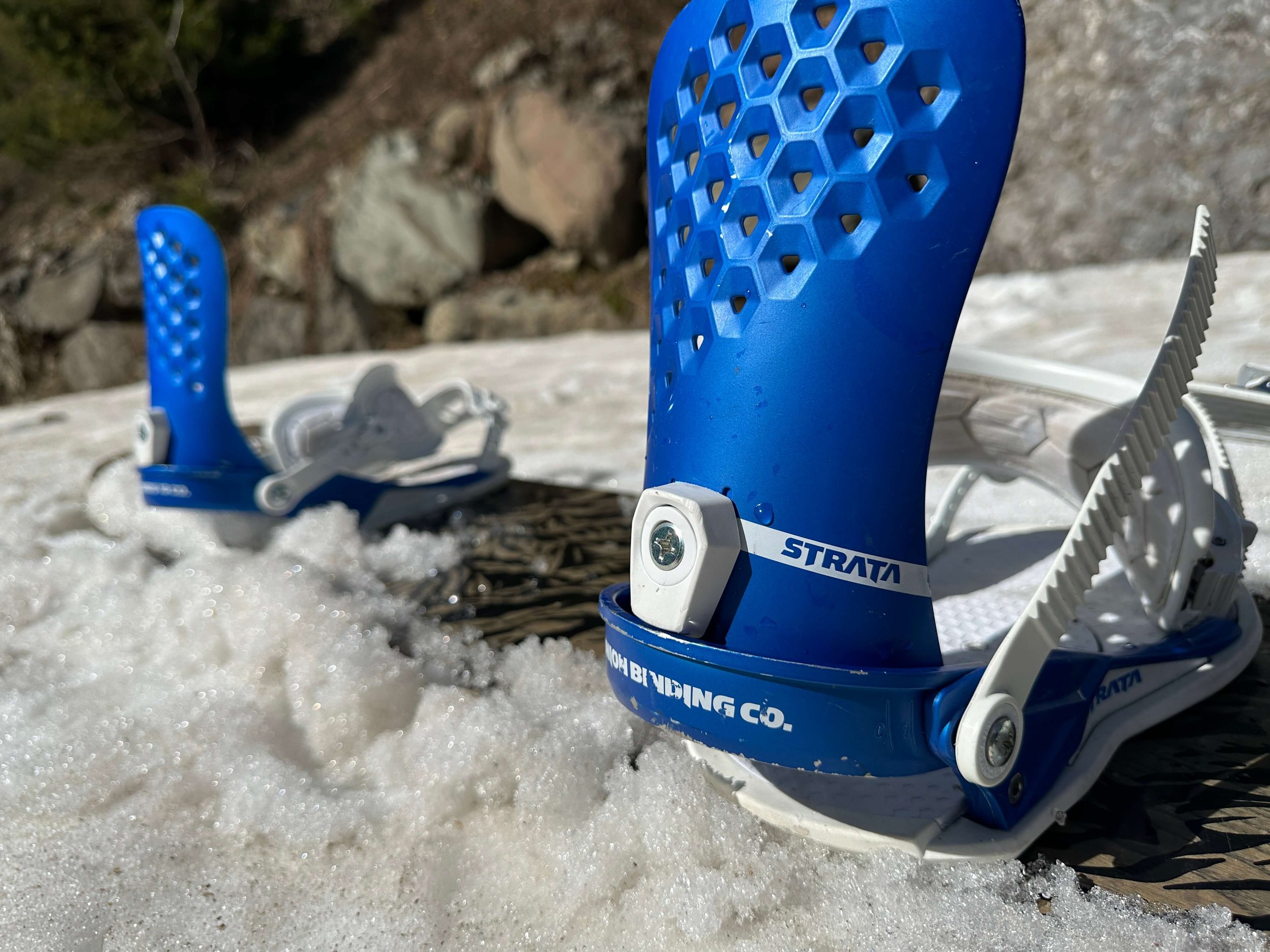
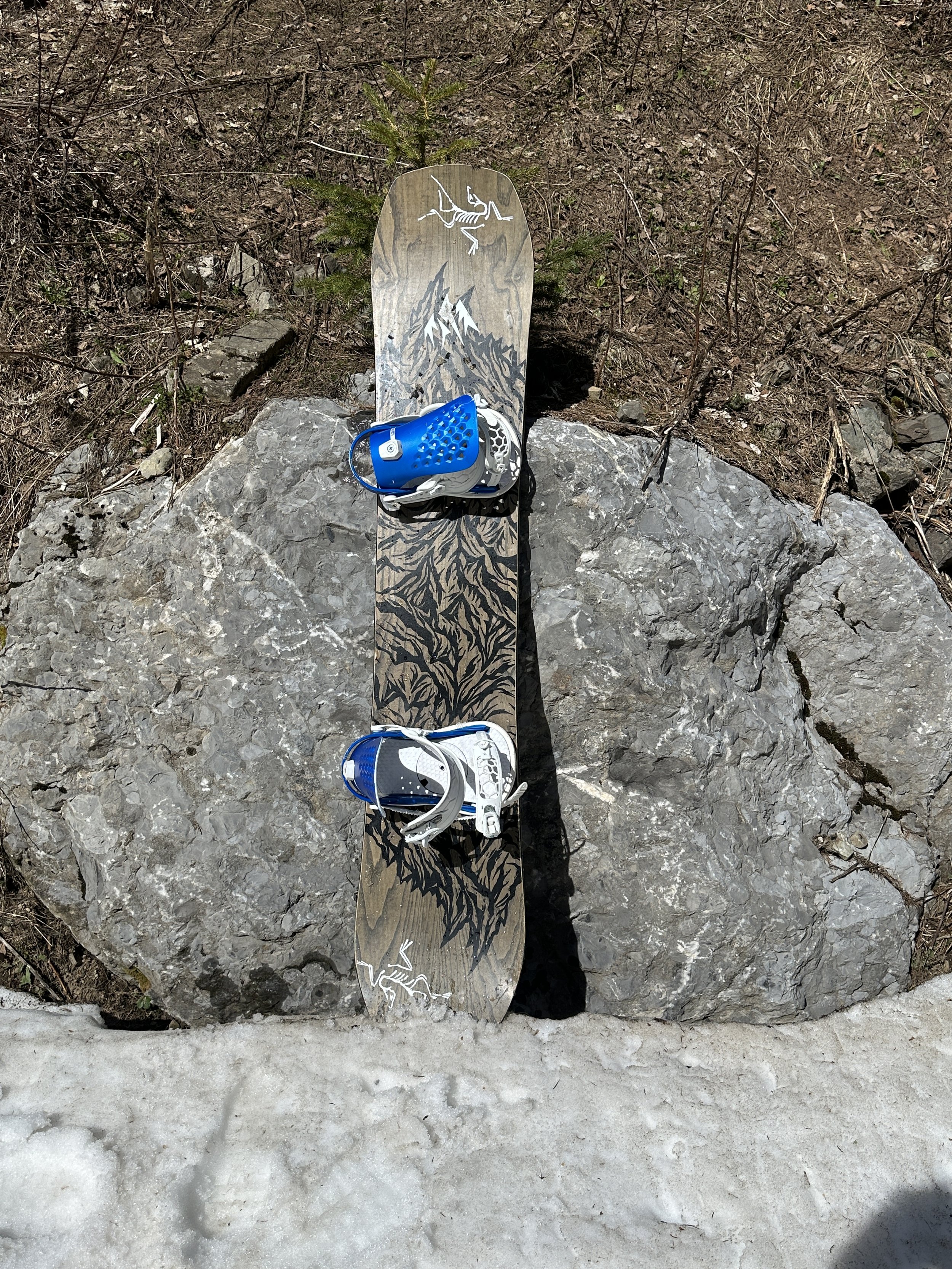
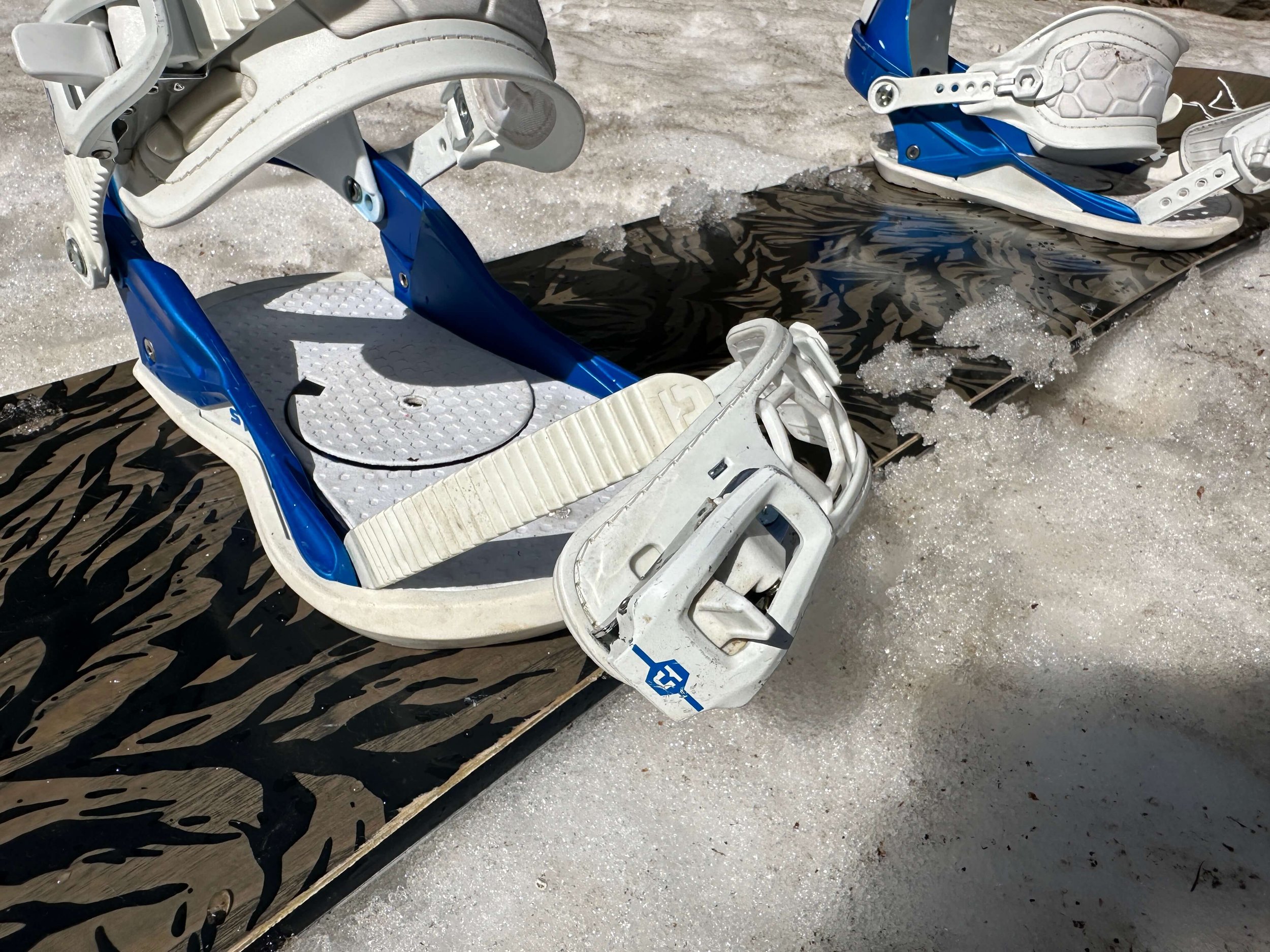
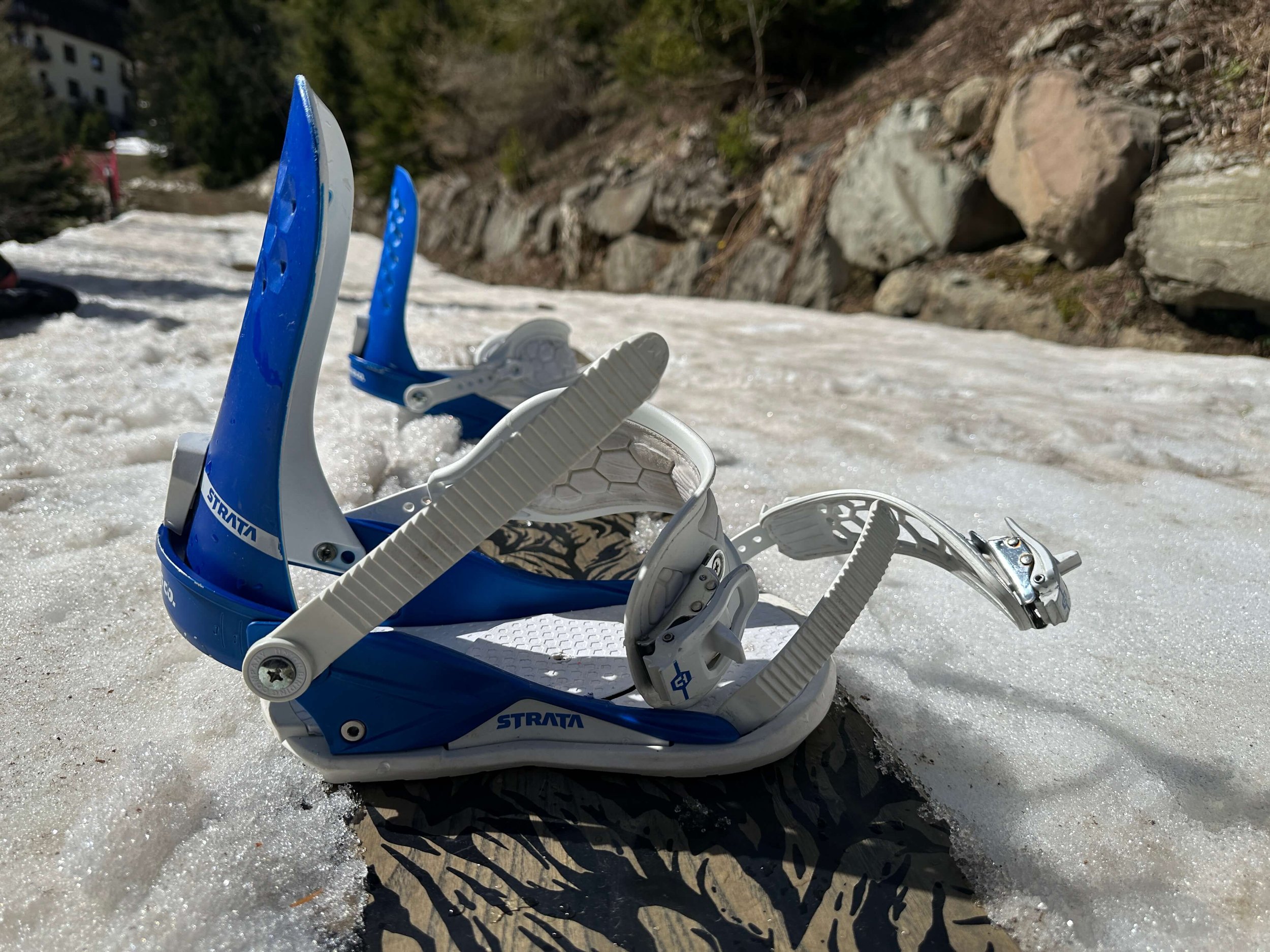

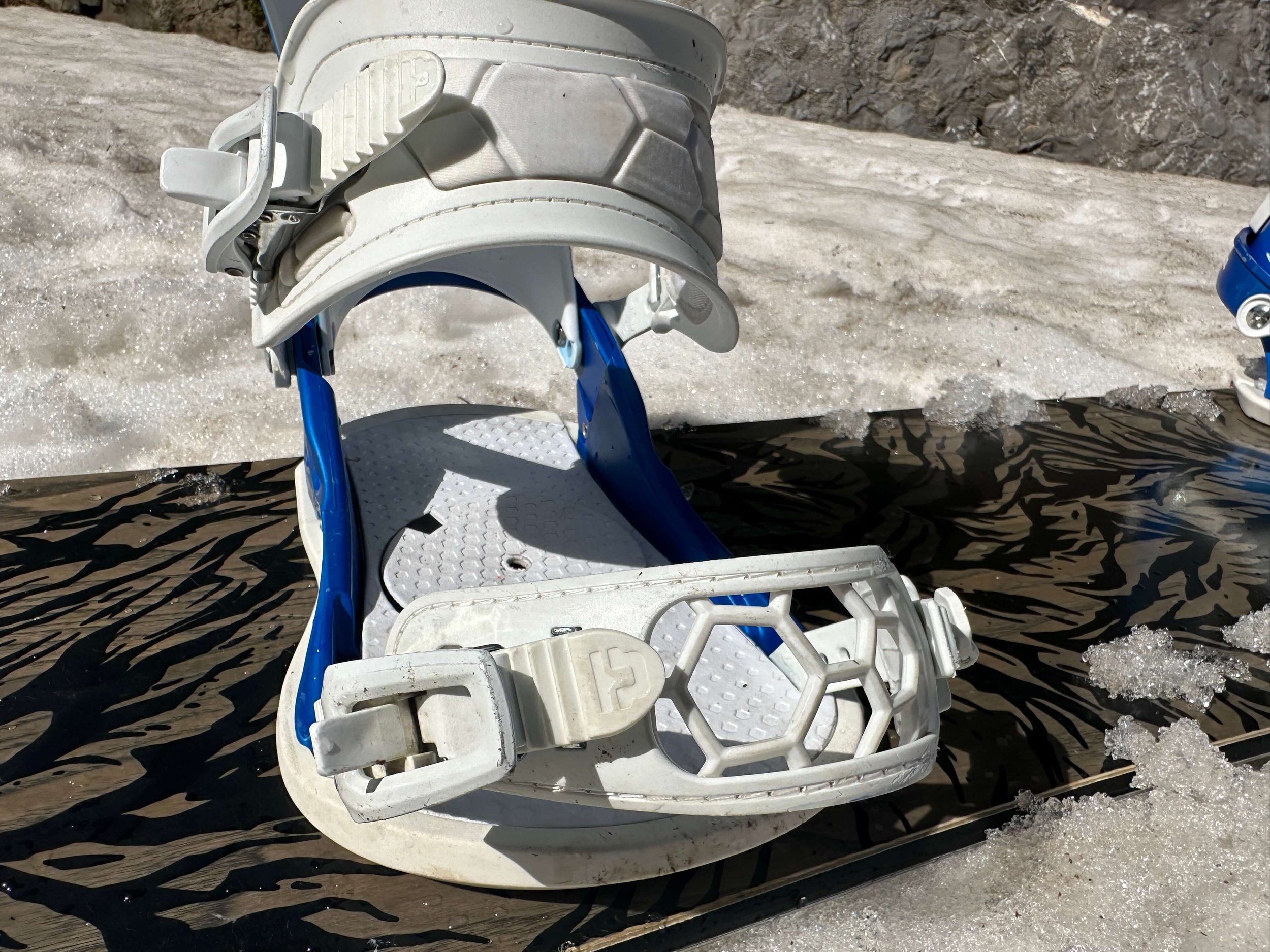
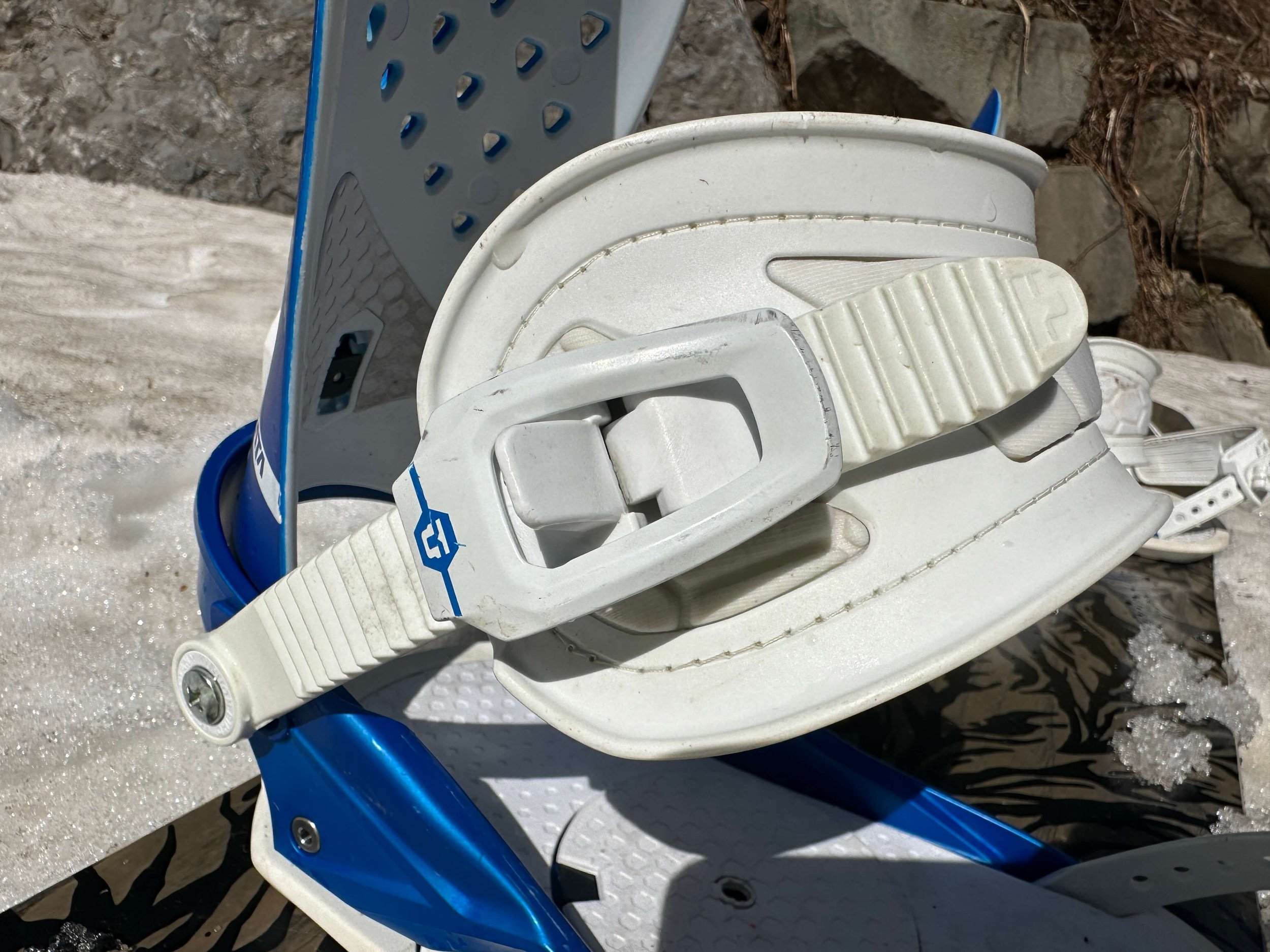
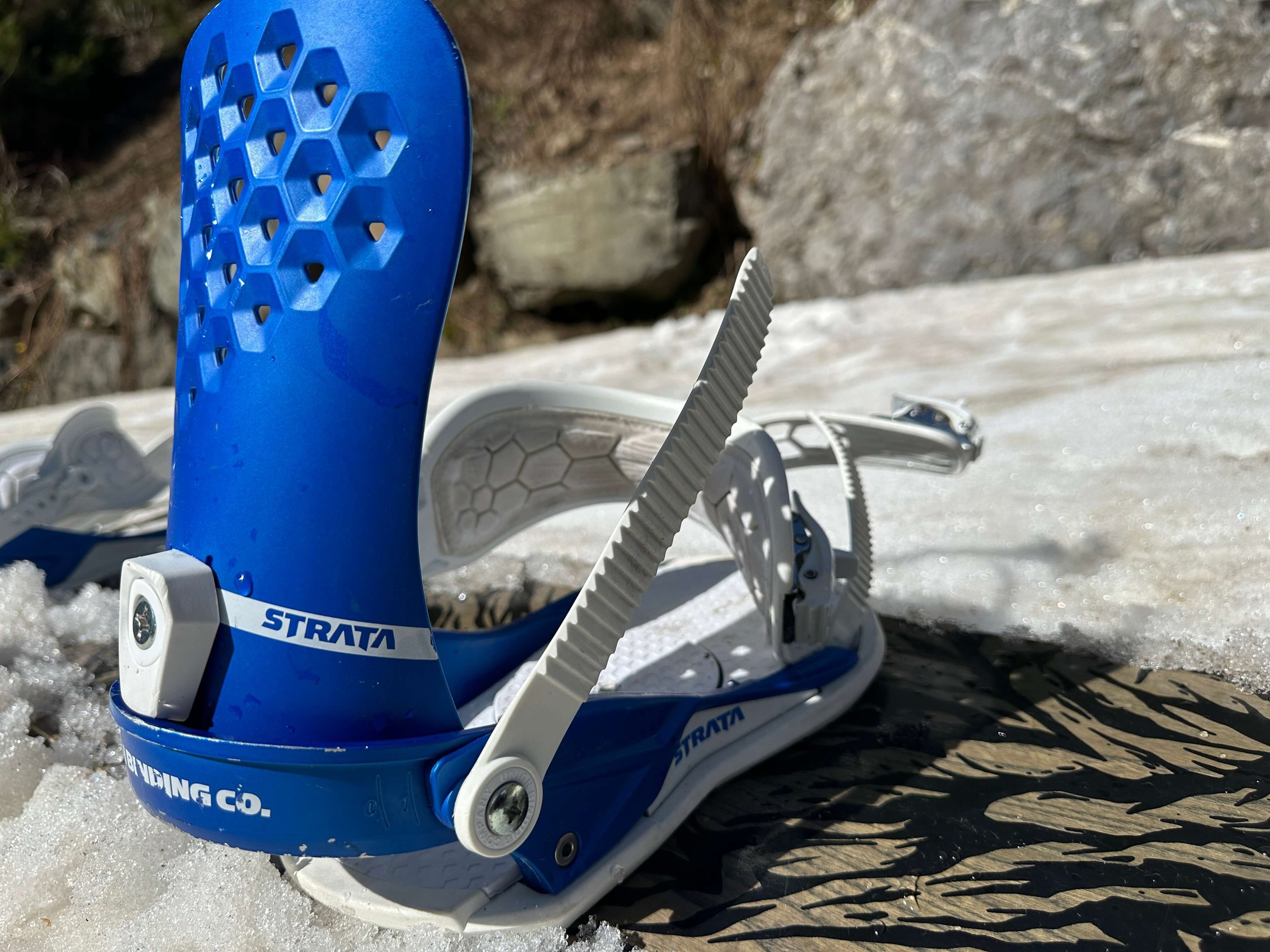
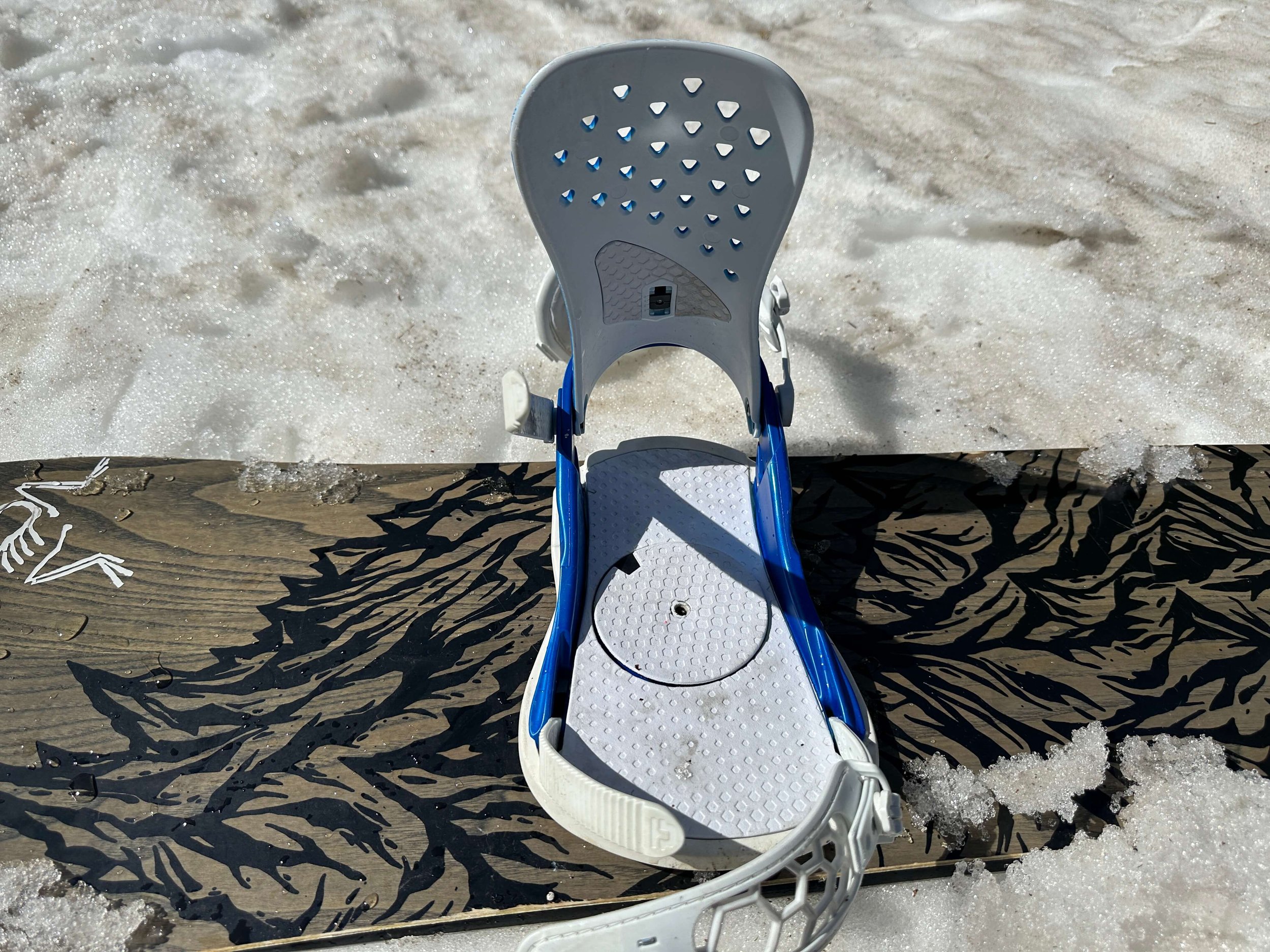
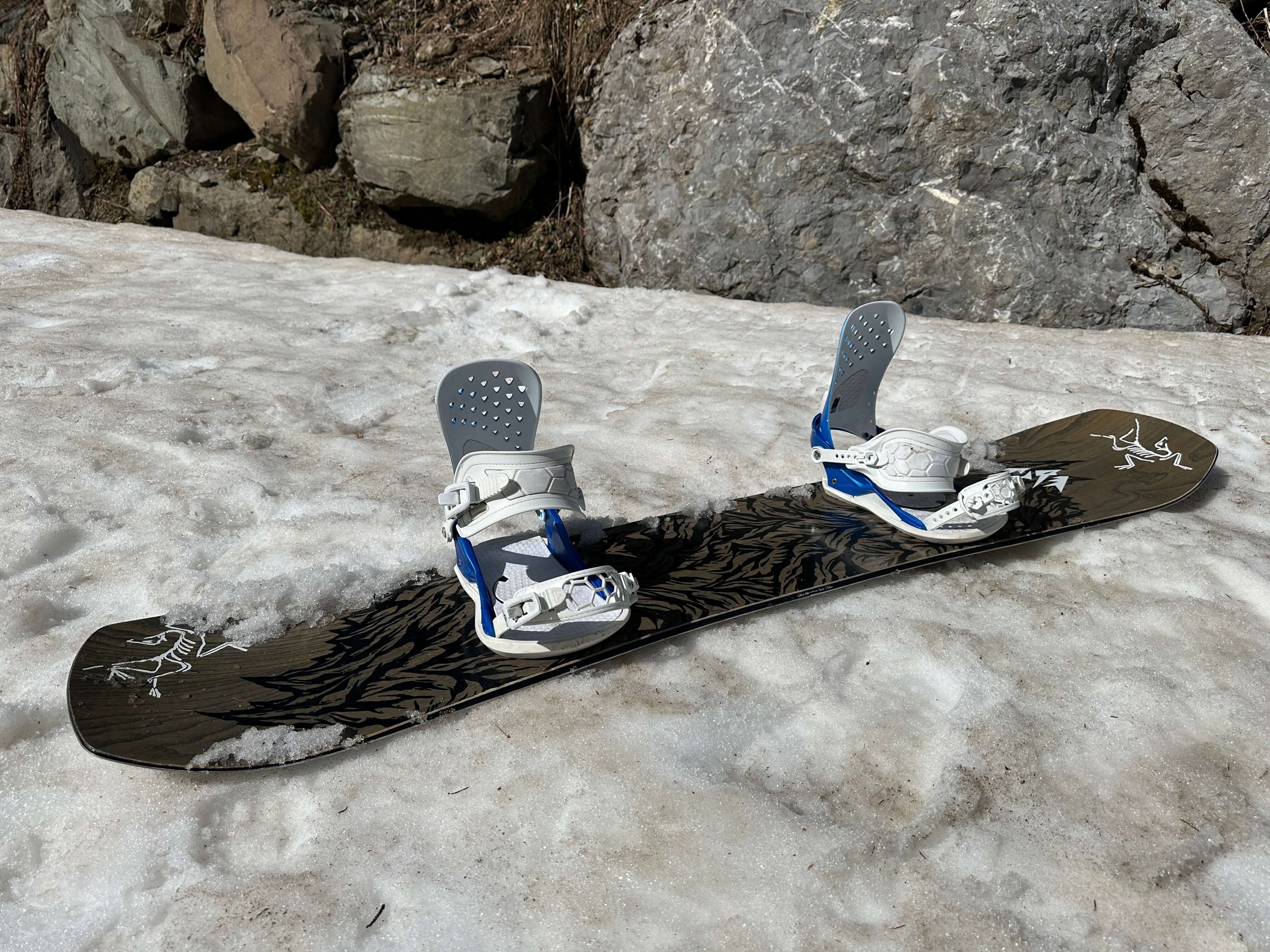
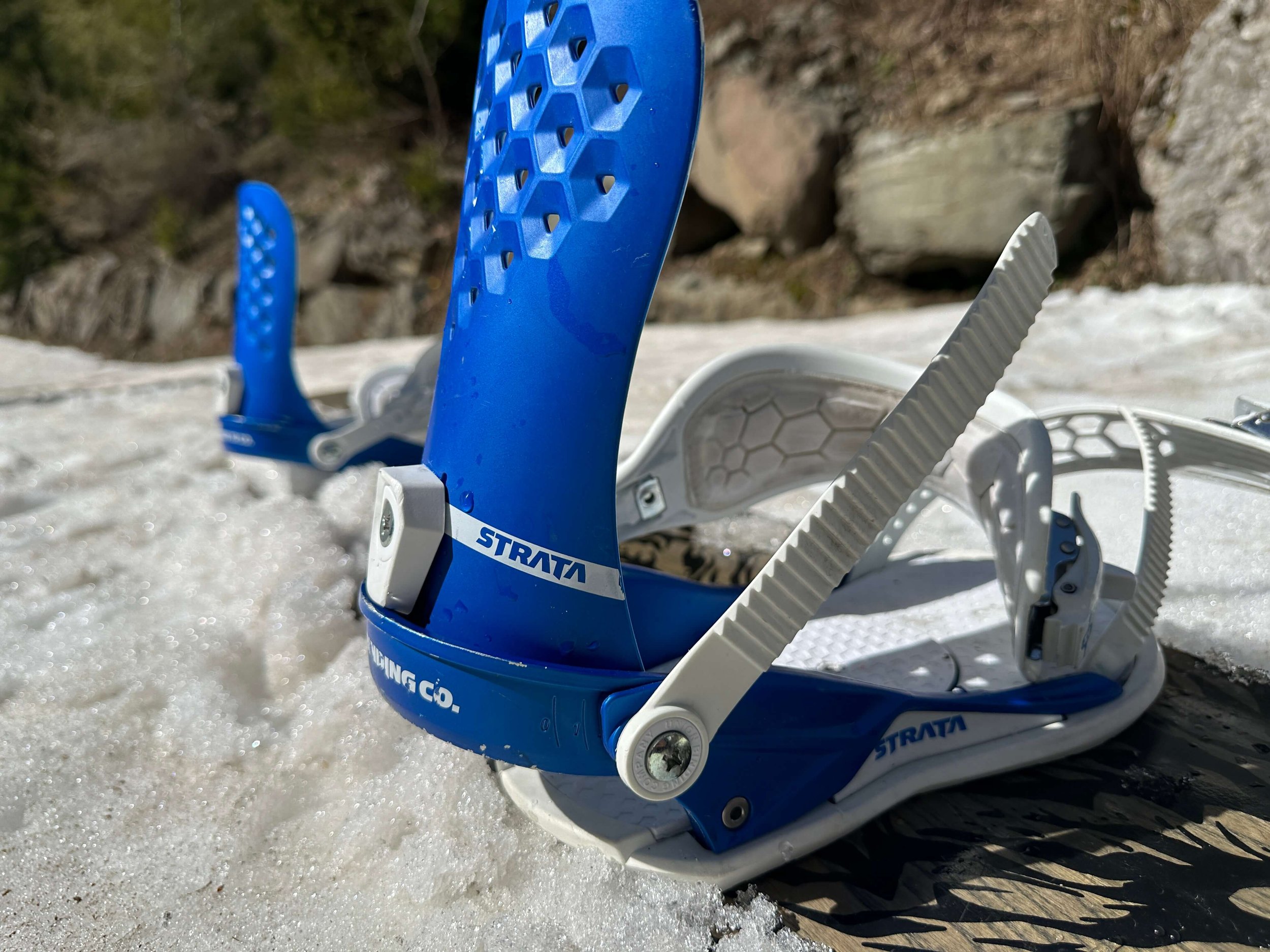
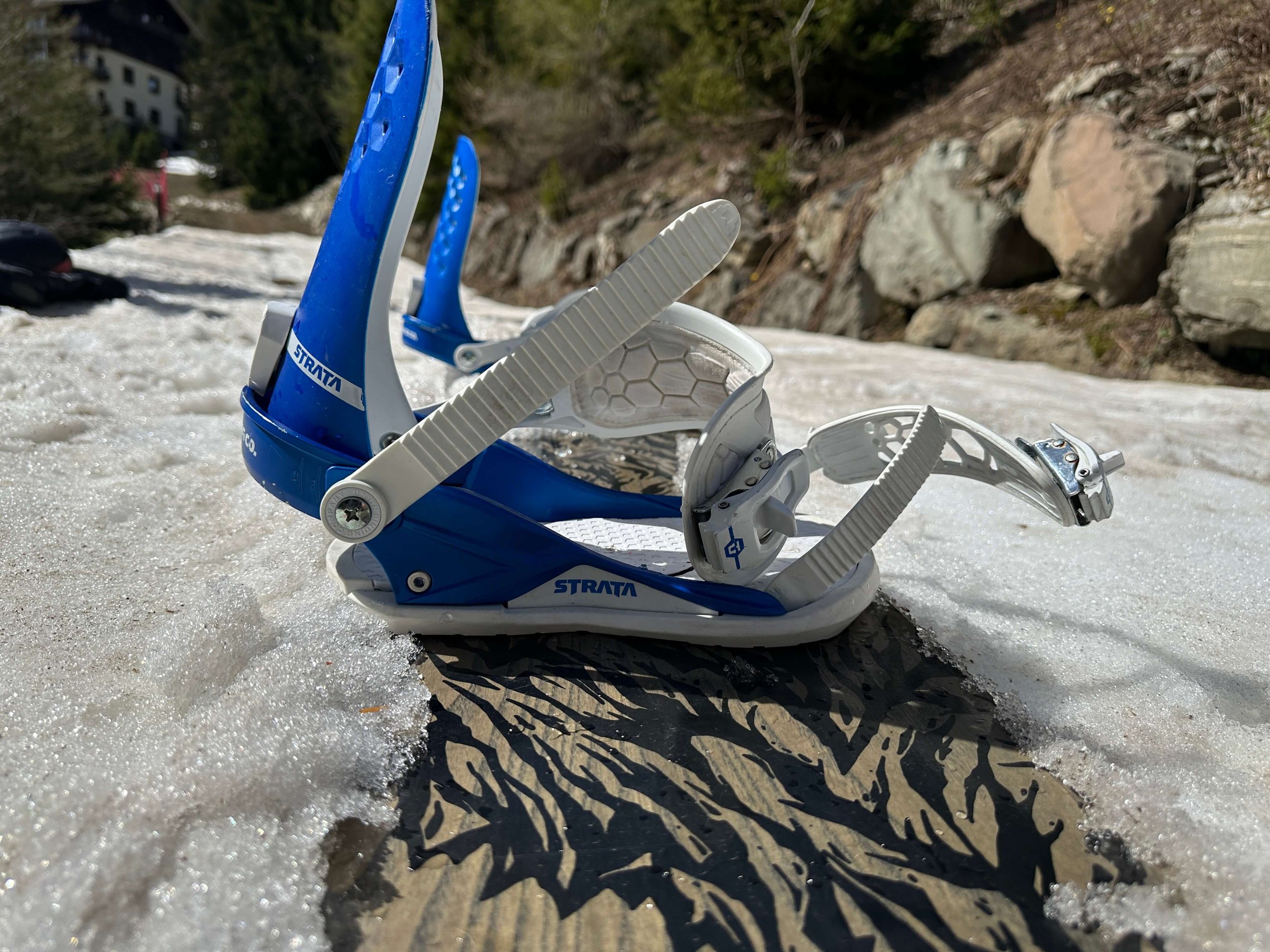
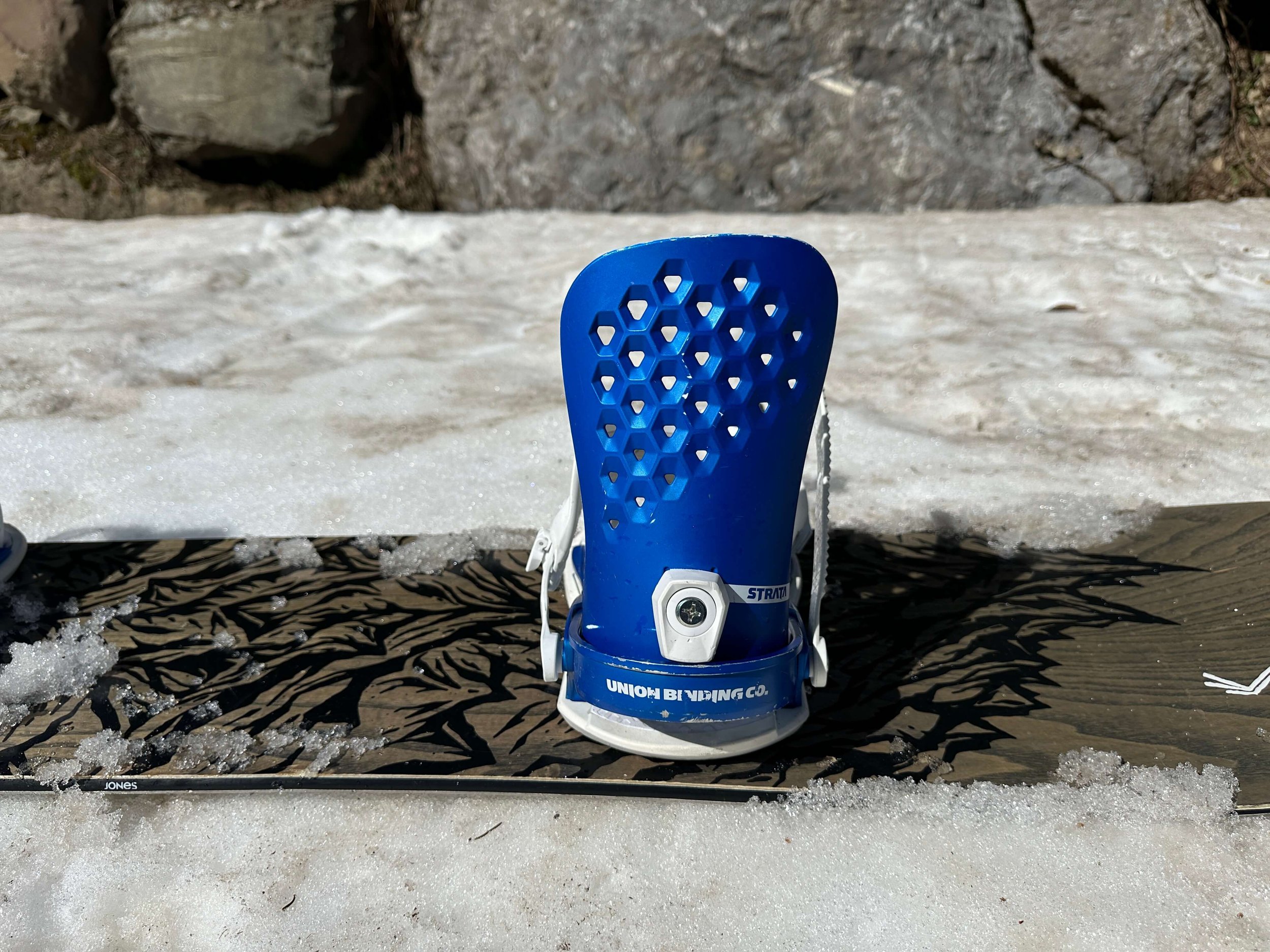
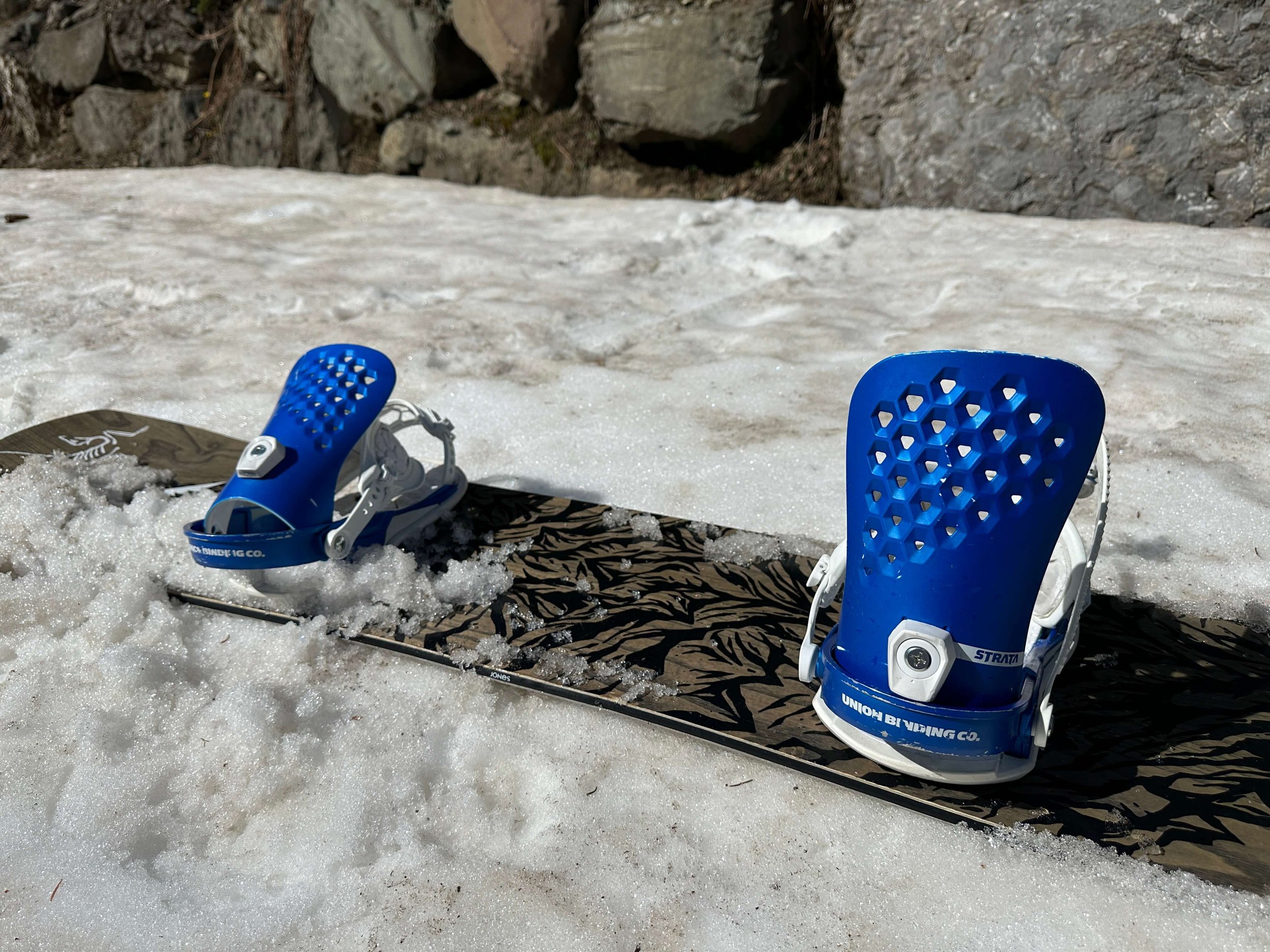
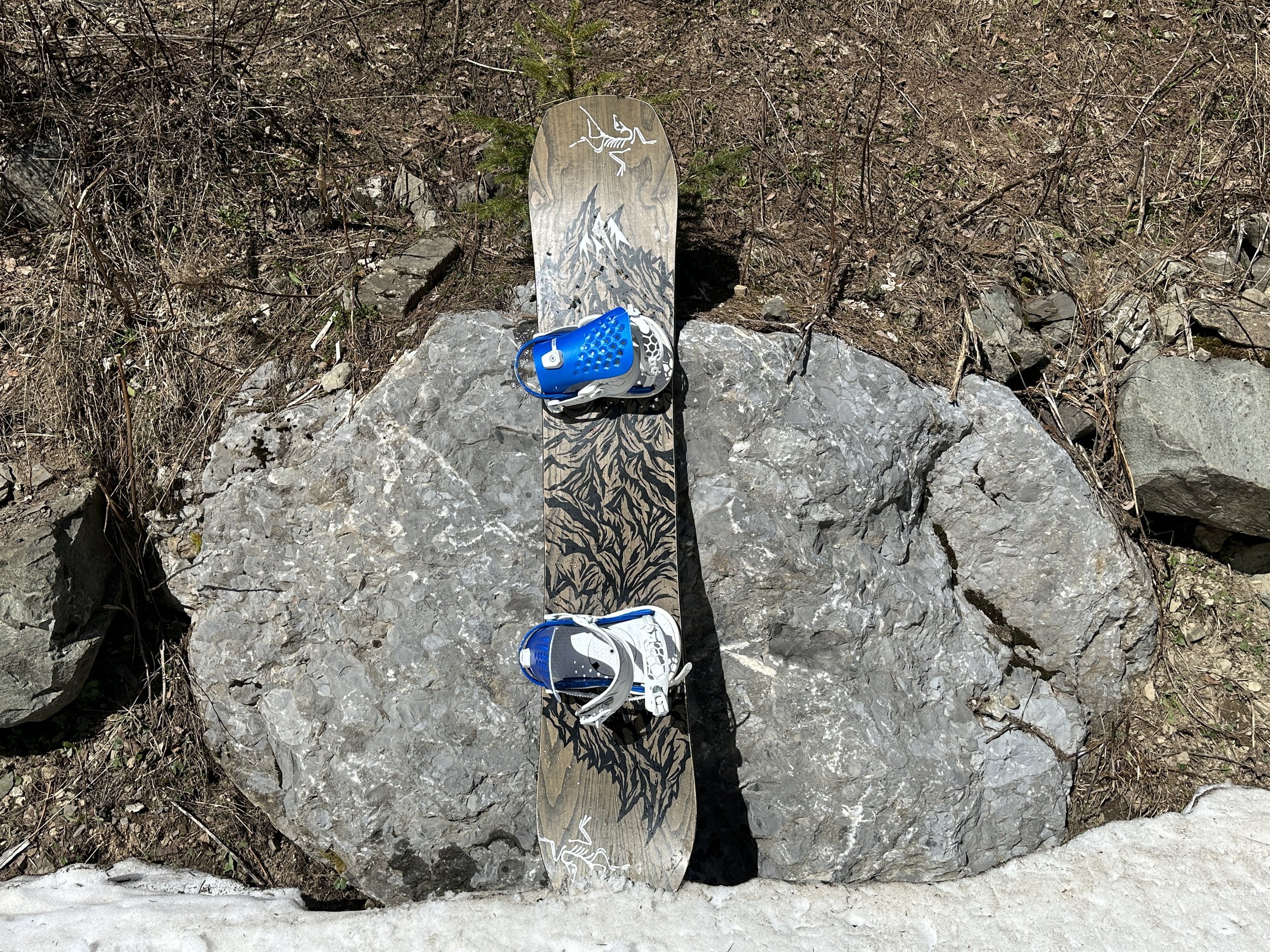
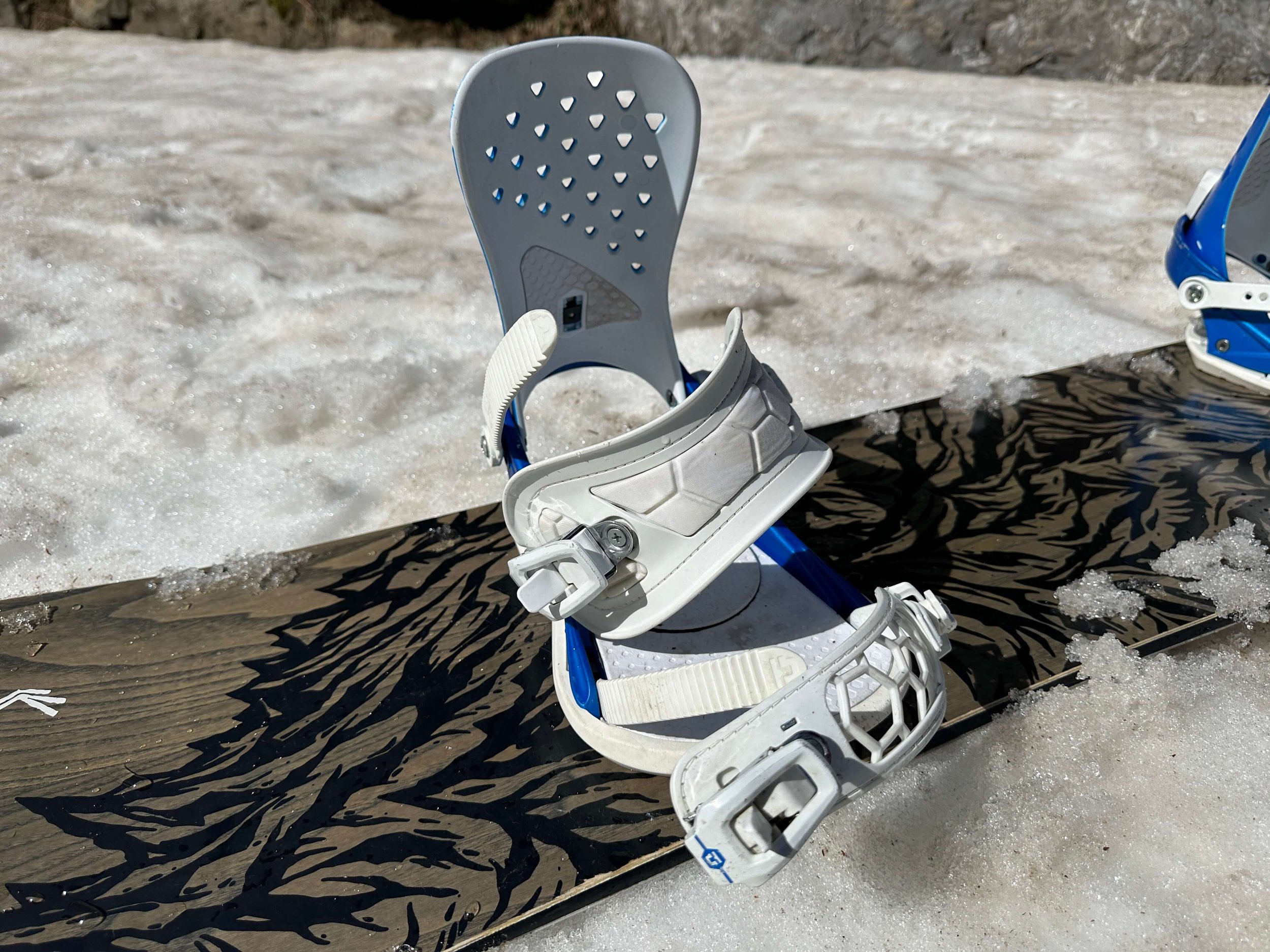
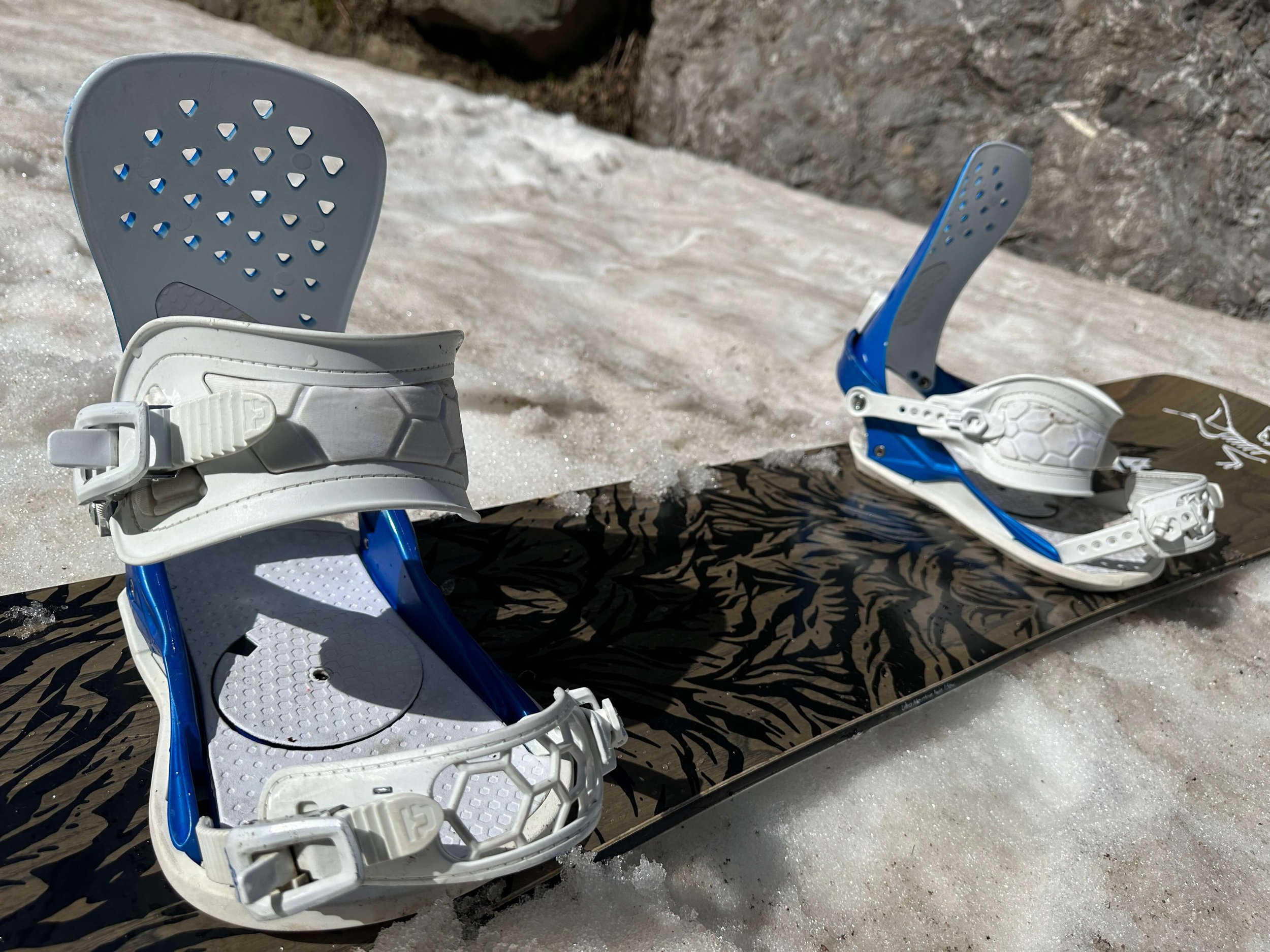
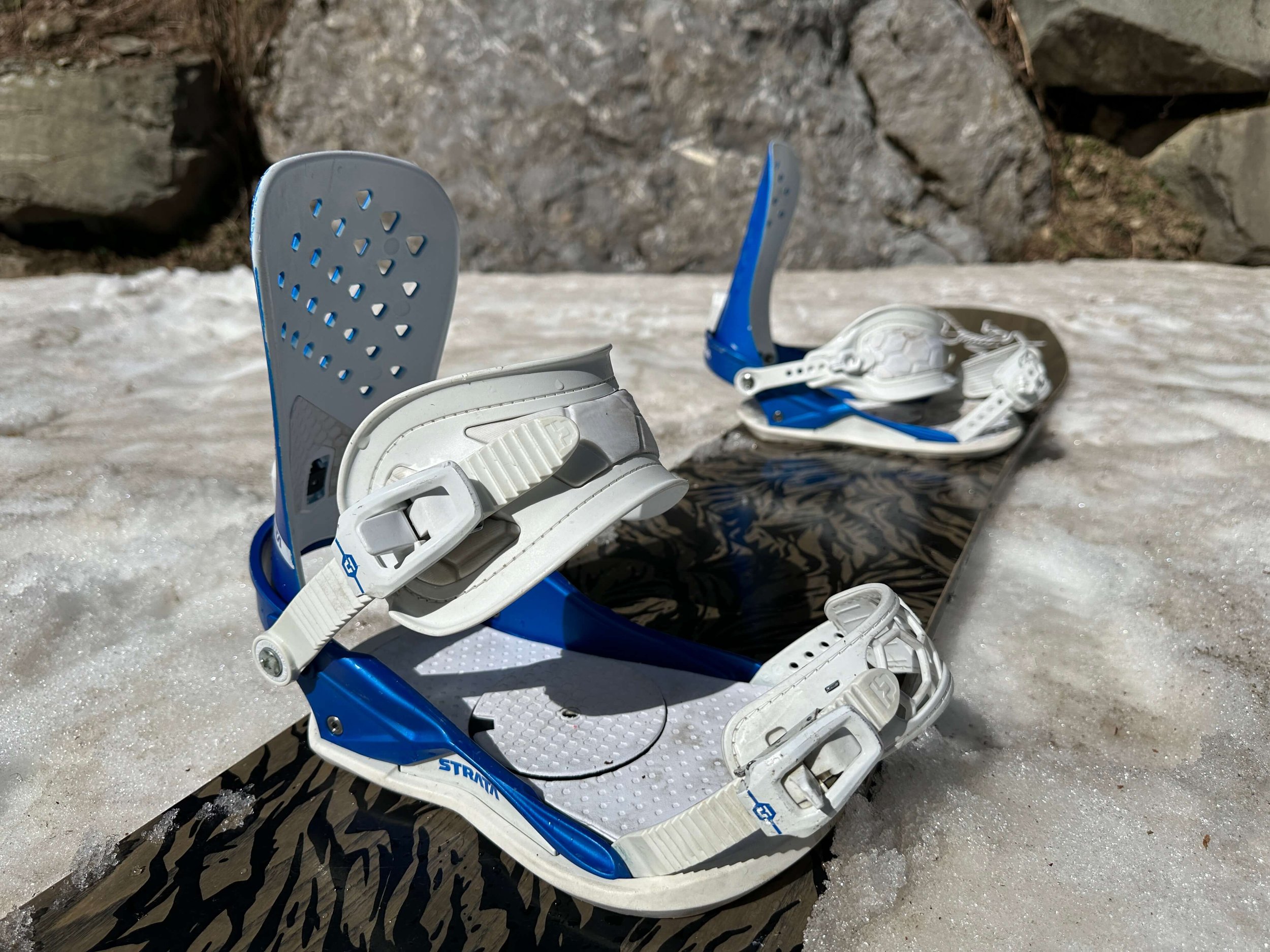
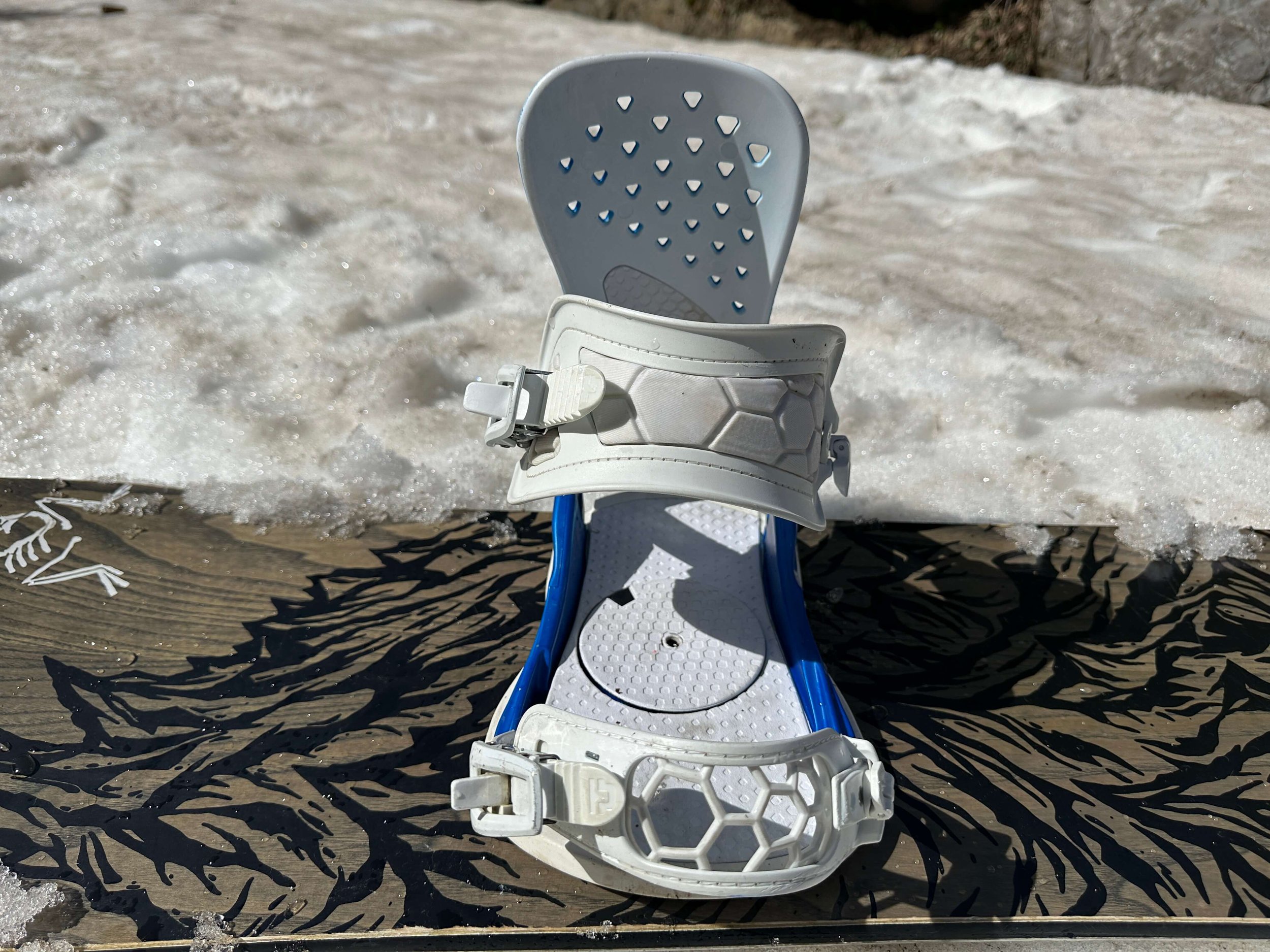
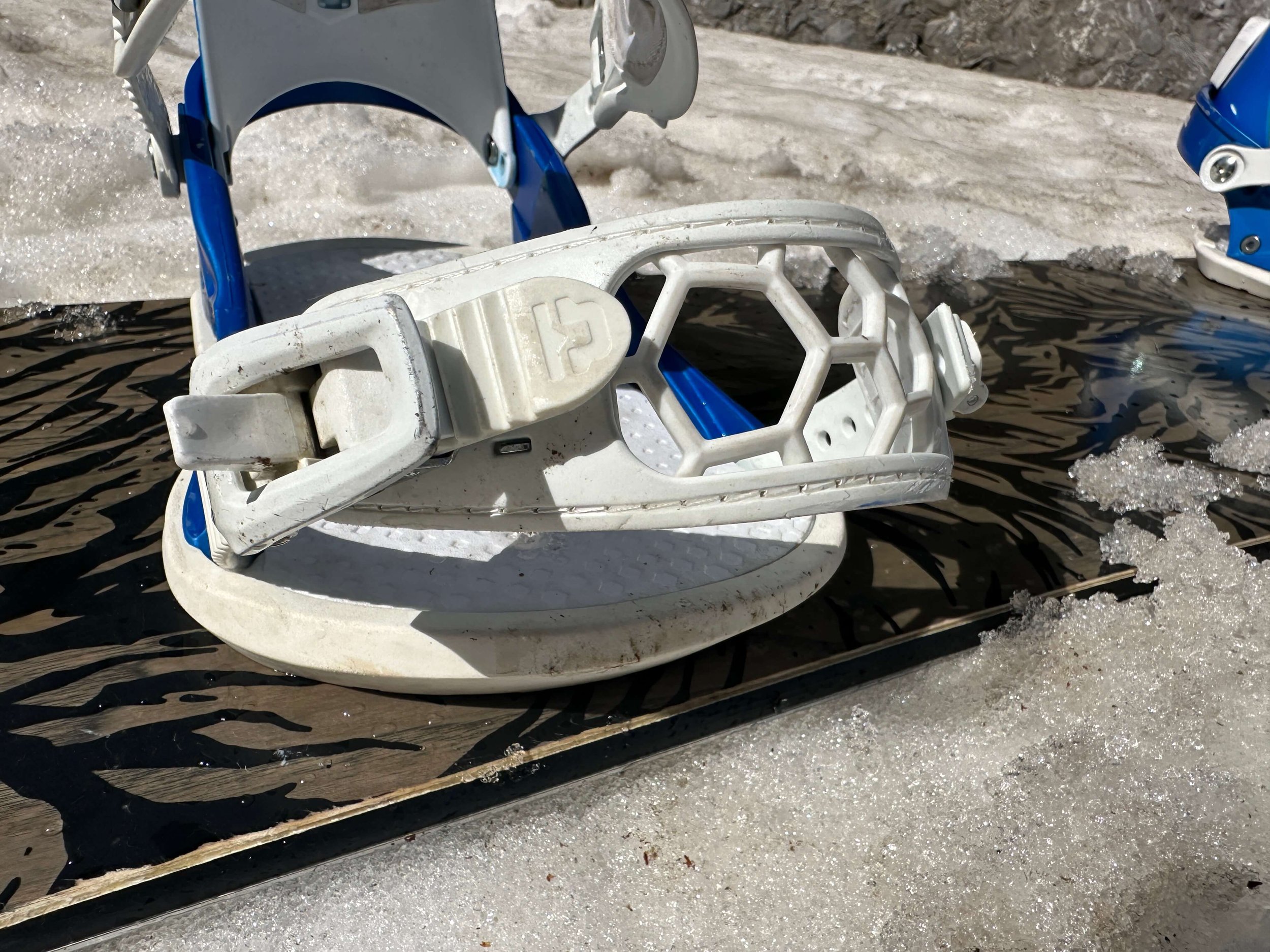
STYLE
The Strata snowboard bindings from Union are an all-mountain binding with a freestyle feel. These are not the stiffest binding but neither are they wishy washy, the Union Strata is capable of exploring everywhere. Both videos below were filmed whilst wearing the Union Strata Bindings, from park to pow they deliver.
COST
The Union Strata snowboard binding has a RRP of £240 in the UK which sits it in the moderately priced category. The Union Strata is £70 cheaper than the popular Union Atlas and £170 cheaper than the Union Atlas Pro. When you factor in that the Union Strata is regularly available in the sales for closer to £160/£170 they represent great value.
COMFORT
The comfort of the Union Strata snowboard bindings is fantastic. I love the straps and how they hug your boots in a secure but not straight jacket way. The straps have some give/flex which means you don’t get any pressure points across the boot. Similarly, the high-back doesn’t bite the back of your boots so comfort has never been an issue for me in these.
Union Strata Comfort
The footbed is cushioned and adds some great shock absorbtion to these bindings further adding to the comfort of riding the Union Strata bindings.
FLEX
Union rates the Strata as a medium flex 6/10 and I’d say this feels true. The Strata highback feels firm for a freestyle-inspired binding but this also helps its all-mountain appeal.
DURABILITY
Long gone are the days of losing ankle straps on Union Bindings with any issues regarding the screws well and truly resolved. The Union Strata snowboard bindings have stood the test of time.
The baseplate and highback are in great condition with only the expected scratches from multiple seasons of use. The straps are dirty but function like day one. My only issue has been one buckle that recently had started to stick when unlocking. I tightened a screw and this issue was resolved.
Union Strata Bindings
STRAPS
To me the straps on a snowboard binding rate highly as to whether I am going to get along with the binding as a whole. A good easy to use strap with smooth buckles makes all the difference for a day on snow. The Union Strata has this smooth transition out of the binding with the quick release buckles and they are equally smooth to lock in. The Union Strata toe strap is one of my favourites across different bindings with the webbing really wrapping around your boots and pulling the boot back into the binding.
FINAL THOUGHTS
The Union Strata bindings have been a fantastic addition to my gear room and I never worry about them when out on the hill. The Union Strata will take you anywhere on the mountain and ultimately that’s what I am looking for in a snowboard binding. These Union bindings are comfortable and have lasted the test of time. A win for me.
SUPPORT FUTURE CONTENT
If you found this post useful then consider supporting future content by purchasing through the Amazon Link below or using this link to Buy me A Coffee
Hestra Heli Ski Glove Reviews | Hestra Gloves
For the harshest weather and the deepest storms, the Hestra Heli Gloves will keep you warm and dry lap after lap.
The Hestra Heli Ski Gloves are part of the Alpine Pro range which is the Swedish company’s attempt at delivering products that will stand up to the test in the harshest environments. To give them their full name, the Hestra Army Leather Heli Ski Gloves are an all-time classic. These gloves are the go-to for many ski instructors, mountain guides and all-out powder enthusiasts.
If you are looking for an under-the-cuff alternative to the Heli Ski Gloves, consider the Hestra Fall Line Mittens or Fall Line Gloves.
Hestra Heli Gloves Powder Protection
This review is my opinion of the Hestra Heli Ski Gloves which were purchased with my own money and have been worn on rotation since 2017. If you find it useful consider purchasing your pair through the affiliate links in the post to support the website and future content.
ABOUT ME
Before jumping into the full review it is worth noting the following information about me as a snowboarder. I tend to run warm, I have a tendency on all but the coldest days to remove gloves frequently due to overheating and feeling warm. This may skew my thoughts on these gloves warmth.
WHAT HESTRA SAY
Hestra's best-known ski glove is a modern classic with well-thought-out functionality. A long model suitable for those seeking powder snow and who need a warm, reliable comrade on the mountain. Removeable liner makes it easy to adapt to different temperatures and activity levels.
JUDGEMENT
The Hestra Heli Ski Mitt is my choice for powder days and when the temperature drops. These gloves are the ultimate barrier to the elements and have kept my hands warm and dry in the most extreme conditions on the mountain.
Below I will provide a more detailed review based on the following categories; Warmth, Dexterity, Waterproofing, Durability, Breathability, and Comfort
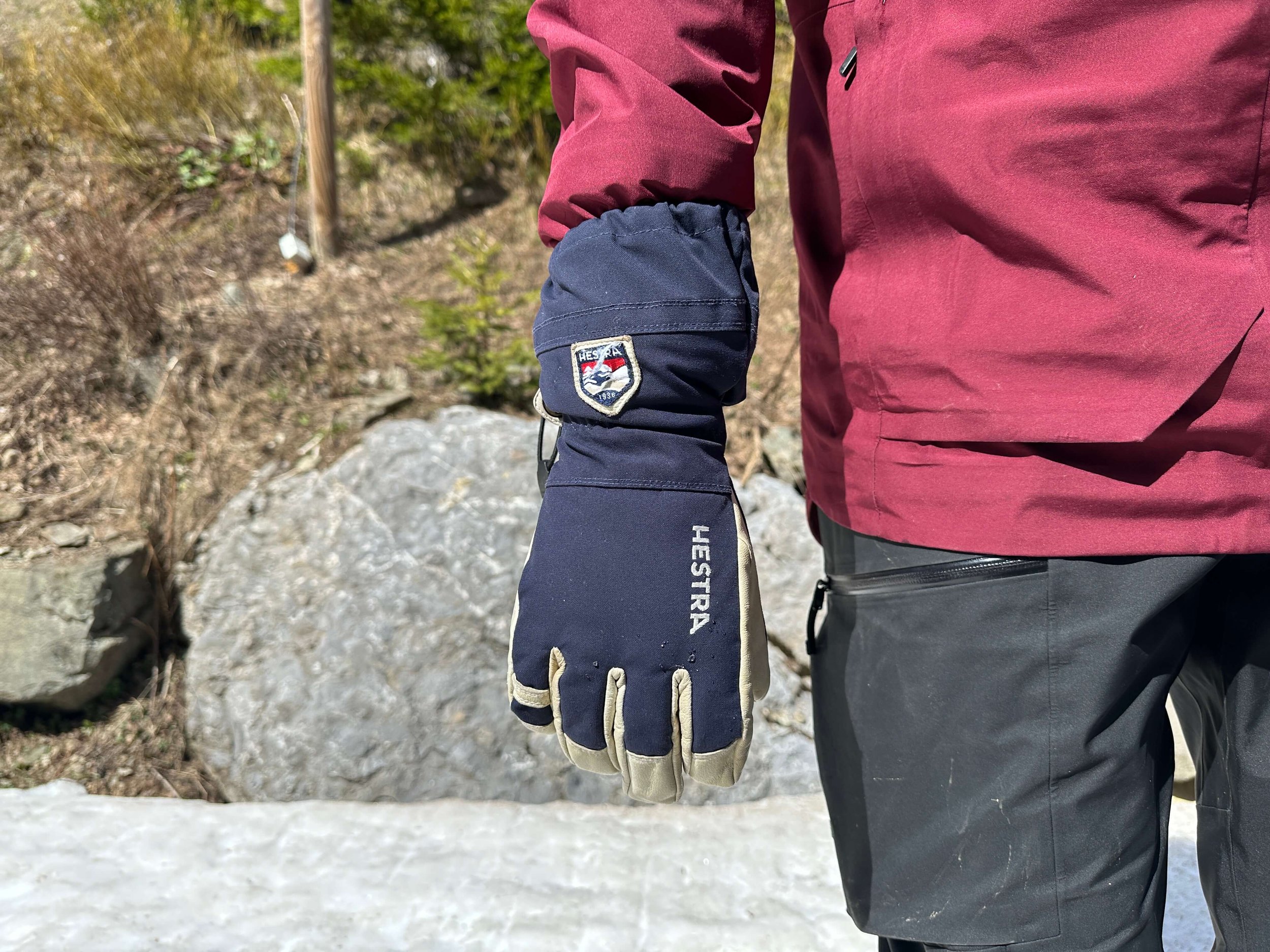
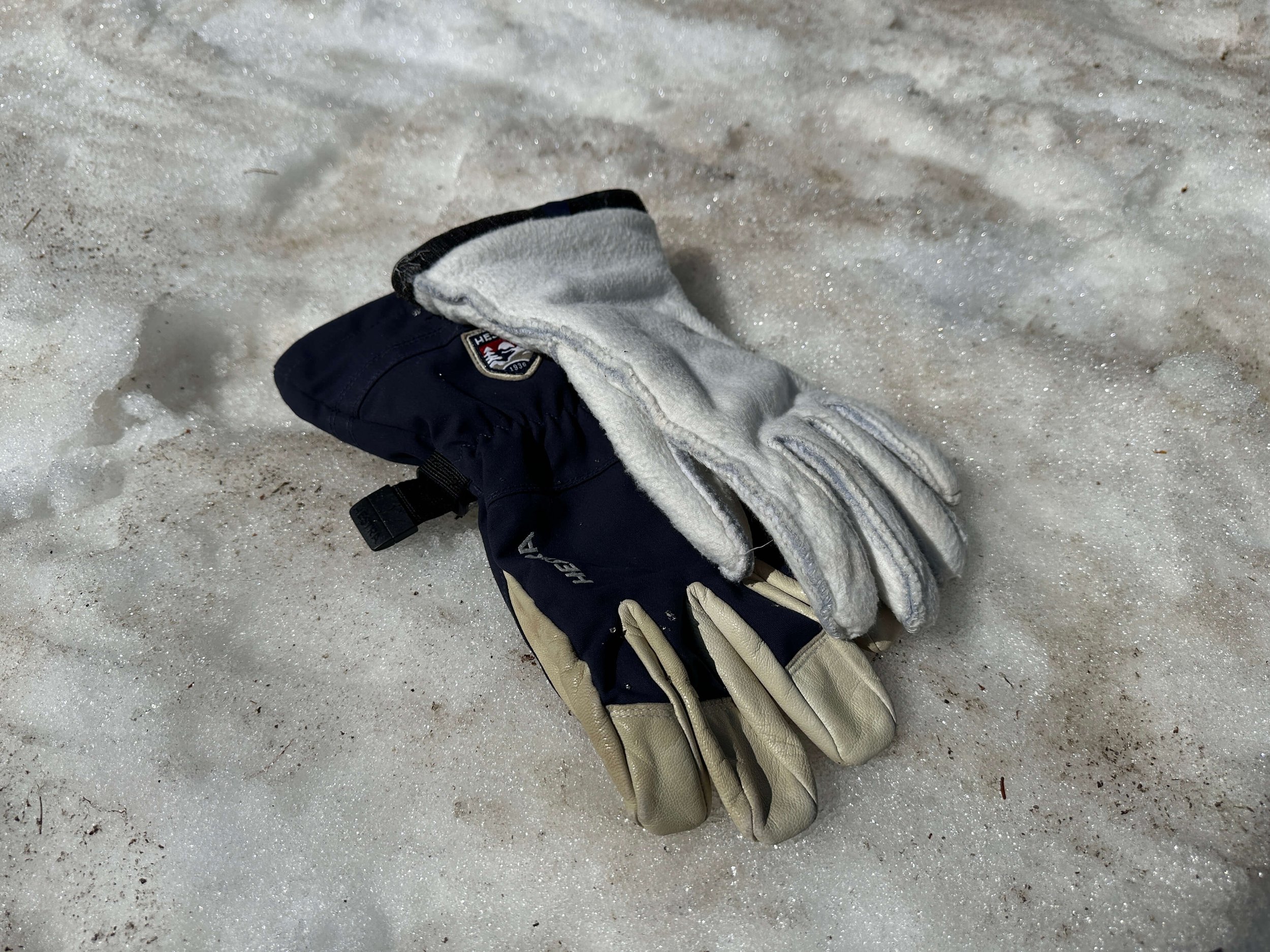
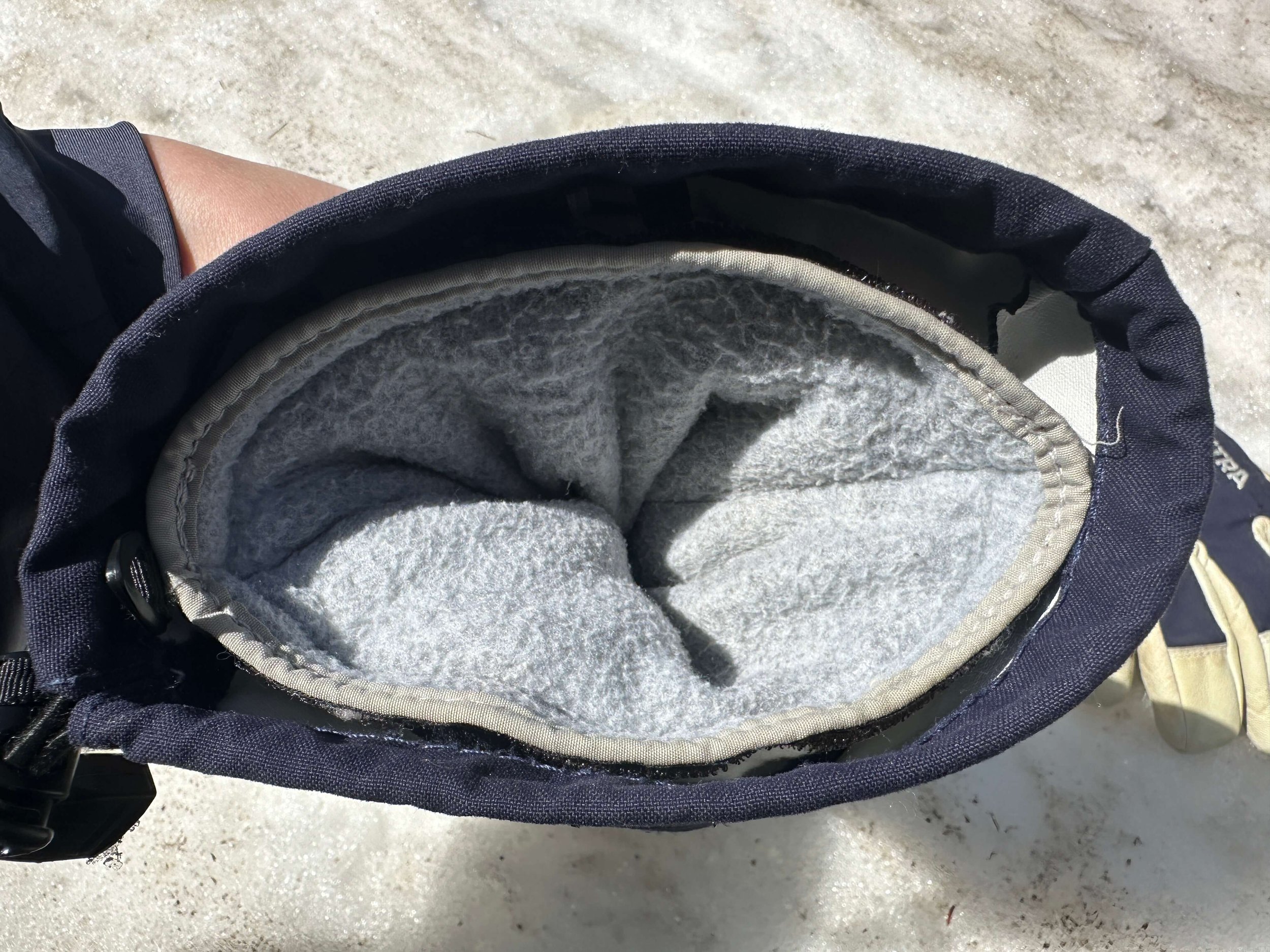
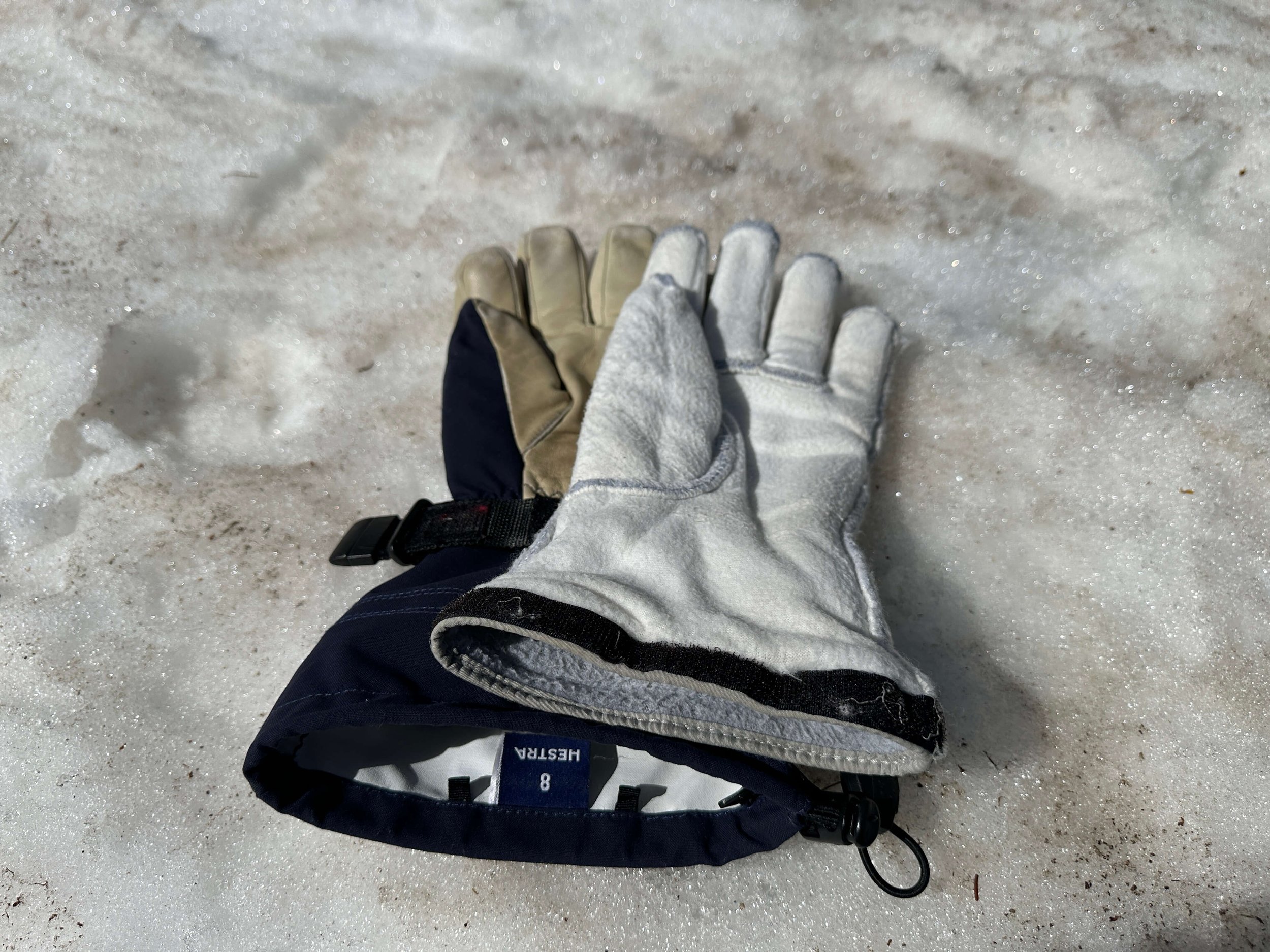
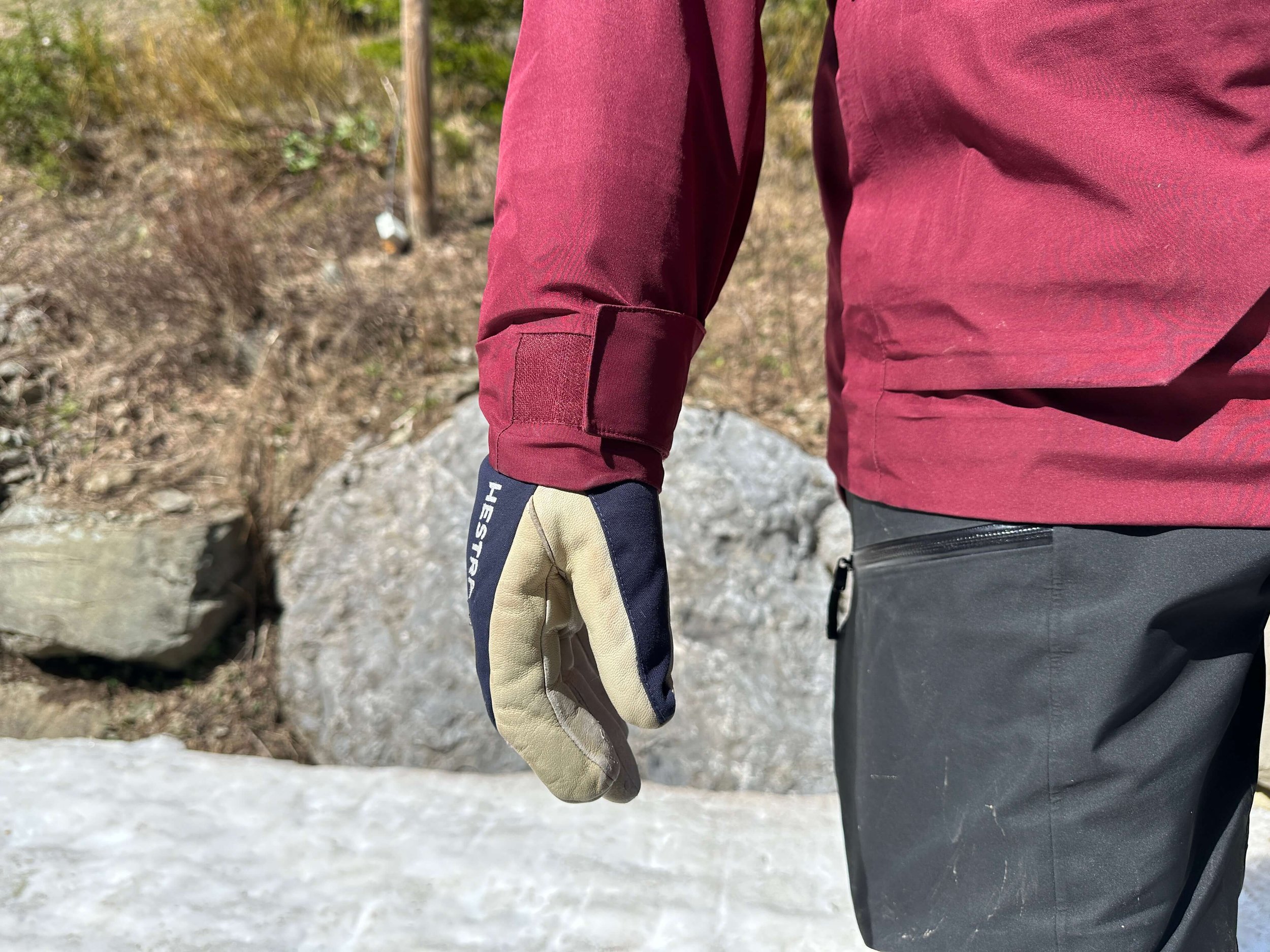
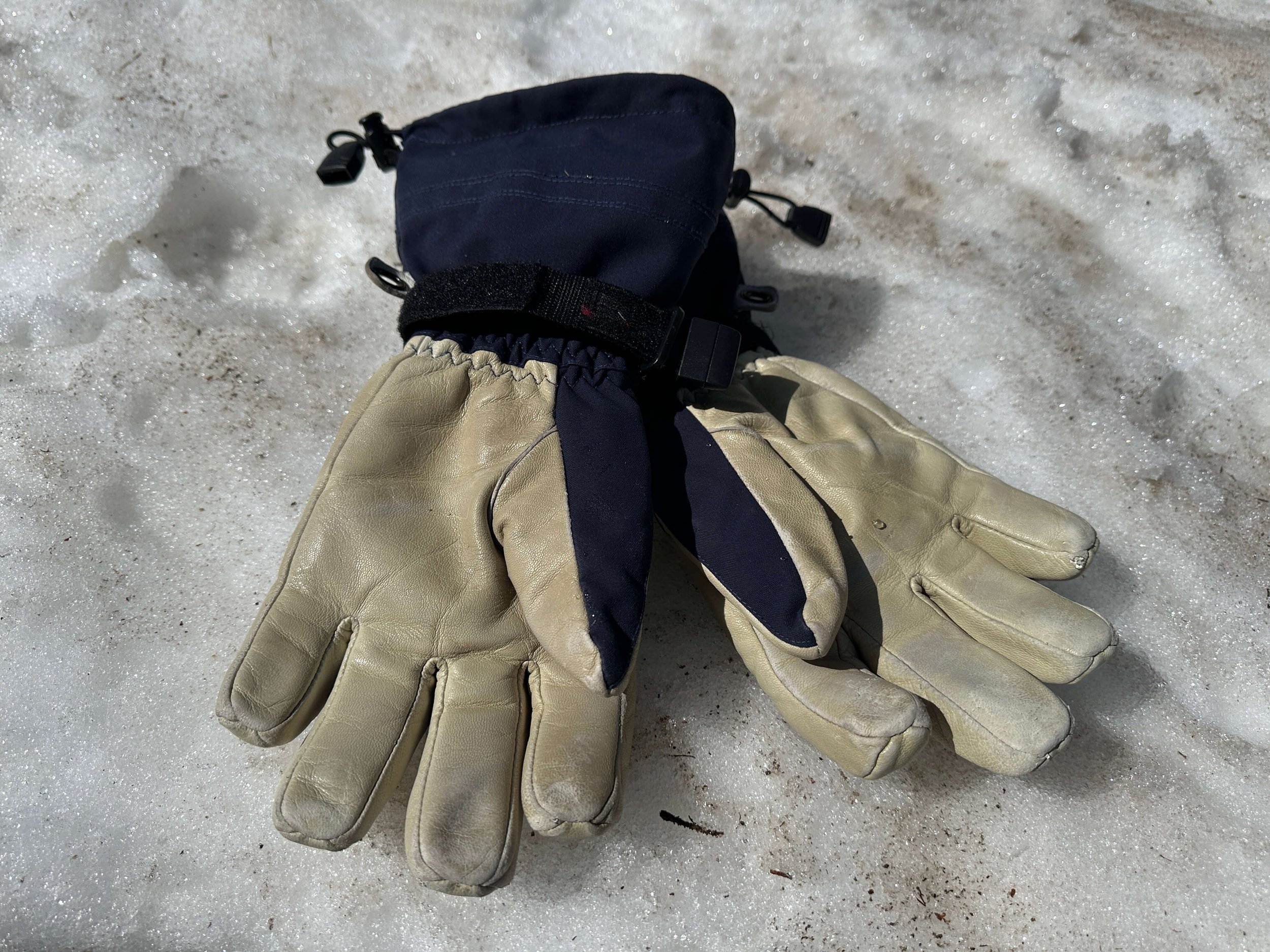
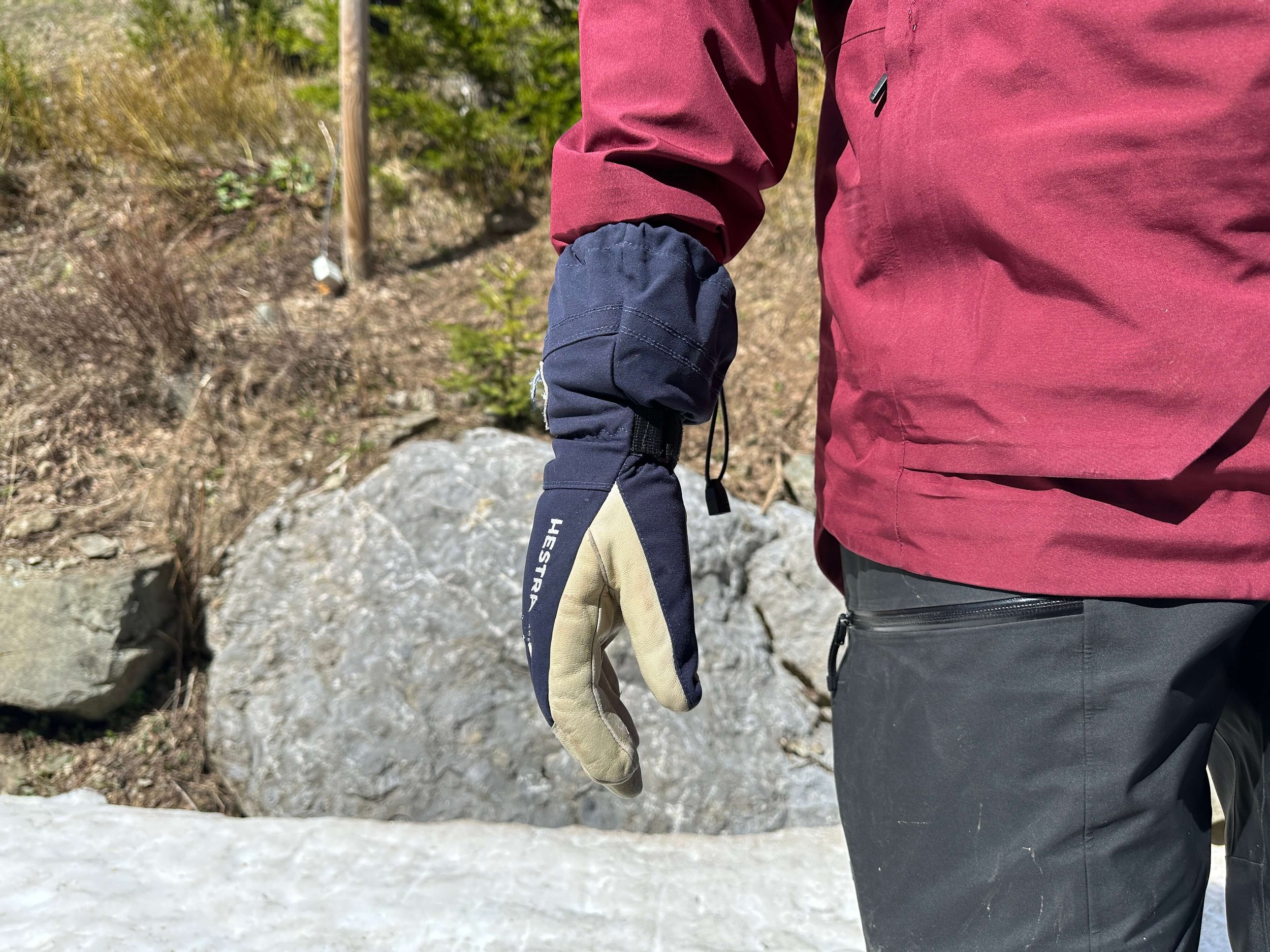
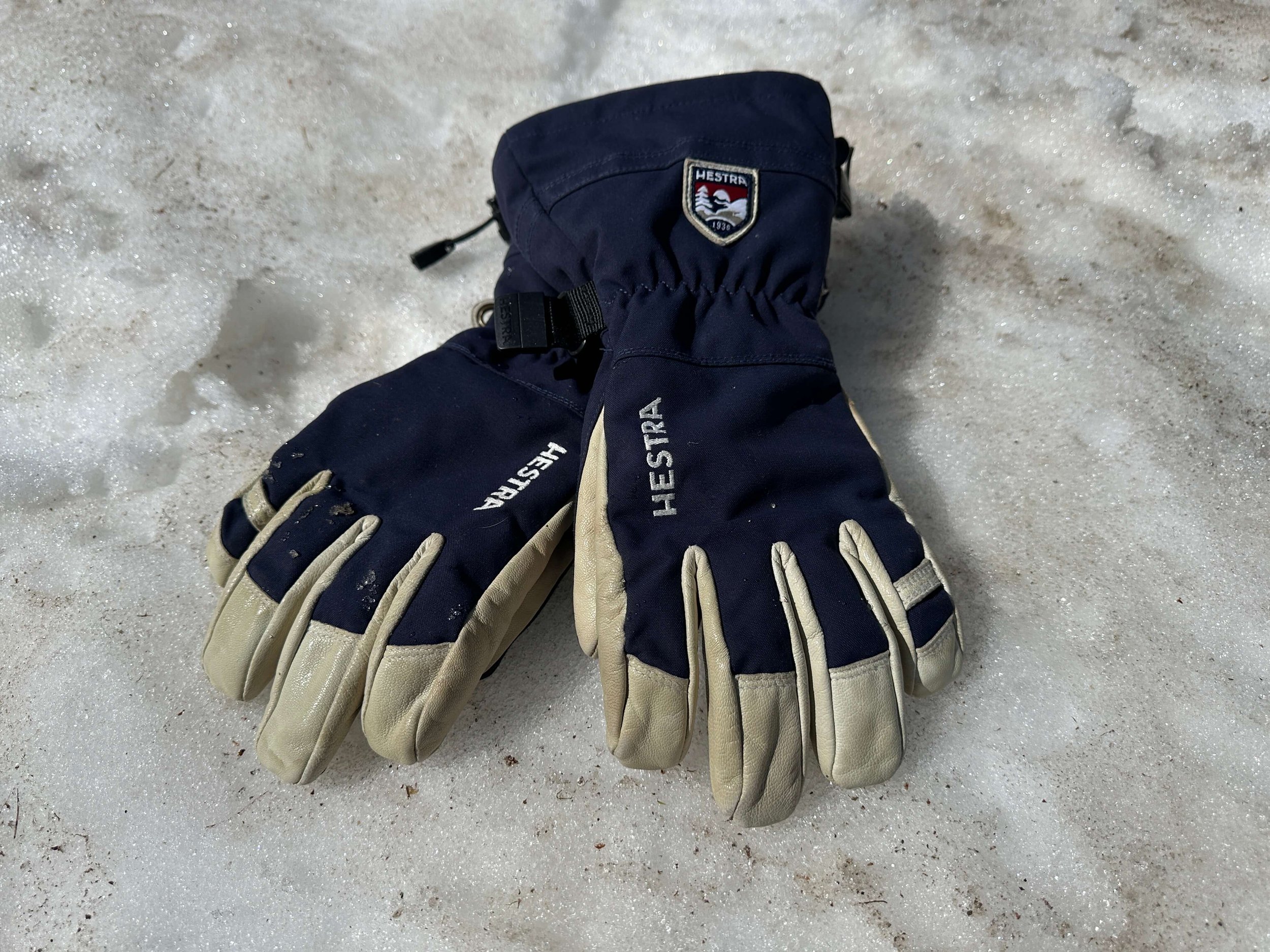
WARMTH
The Hestra Heli Ski Gloves were originally created for ski guides in Western Canada who deal with some of the coldest and most difficult winter conditions a daily basis.
The removable fleece liner is warm and comfortable and has kept my hands warm throughout the coldest days. I love that this warm liner can be removed, and spares can be purchased to keep a spare in your backpack to change out on those wetter days.
The Hestra Heli Glove is my only choice when I know it is going to be a cold day out in the ski resort and that’s why I rate it 5 stars for warmth.
DEXTERITY
Dexterity is an important factor for me when choosing gloves to snowboard in as I need to operate a camera and tighten bindings (preferably without removing my gloves). I have no issues using the Hestra Army Leather Heli Ski for either of these requirements. These gloves are fine for the daily tasks of zipping pockets and jackets.
That being said, the Hestra Heli Ski Gloves have a thick liner which means these gloves are not as dexterous as other models… therefore 4/5.
COMFORT
The fleece liner on the Hestra Heli Ski Glove make it an incredibly comfortable glove to wear, the fleece is soft and warm against the skin so no complaints from me.
The wrist strap allows you to secure the glove in place meaning they do not slide about which also adds to the comfort factor.
Hestra Heli Ski Glove Wrist Gaitor
Finally, with the Hestra Heli Ski Gloves being having a long write gaitor you can be sure to keep the elements out ensuring all day comfort even on the stormiest of days.
WATERPROOFING
To ensure waterproofing remains at maximum performance Hestra leather gloves will require maintenance over time. If treated using the Hestra Leather Balm or an alternative you will see good waterproof performance. As these are not a daily driver for me I have applied the leather balm at the start of each season and this has ensured good waterproofing performance.
As with all leather gloves, you will need to ensure maintenance to keep the glove waterproof over time. Using Hestra leather balm or an alternative will keep the gloves performing their best throughout the season.
BREATHABILITY
The Hestra Heli Ski Gloves have a 3-layer fabric which sits on the backhand of the glove. The front and palm are made from goat’s leather. Both the 3-layer fabric and goat’s leather offer breathability however the warmth of the glove can make these sweaty on temperatures above freezing.
Pro Tip: On the warmer days remove the liner and just wear the shell as a cooler waterproof/wind barrier.
DURABILITY
The goat’s leather palms on the Hestra Army Leather Heli Ski Gloves is extremely durable. I purchased these gloves in 2017 and they are still going strong. Yes, they are no longer my daily driver but they once were. If you look after these gloves and maintain them with the leather balm they will last.
Hestra Heli Gloves Powder Day
FINAL THOUGHTS
These gloves from Hestra are at the premium end of the market and the outlay may put many off purchasing them. However when you consider the longevity of the gloves and how many seasons they will last with proper care then the outlay for the quality seems negligible.
The Hestra Heli Ski Glove will always have a place in my snowboard bag.
SUPPORT FUTURE CONTENT
If you found this post useful then consider supporting future content by purchasing through the Amazon Link below or using this link to Buy me A Coffee
Hestra Fall Line Mittens Reviews | Hestra Leather Mitts
Durable, warm and the perfect companion for most days on the mountain.
The Hestra Fall Line Mittens are part of the Alpine Pro range which is the Swedish company’s attempt at delivering products that will stand up to the test in the harshest environments. These gloves first came to my attention when working as an instructor and noticing most of my colleagues had a pair of either the Fall Line Mittens or Fall Line Gloves. I had to try them. Years later this post gives an honest review of a glove I never go on a snowboard trip without.
Hestra Fall Line Mitts
This review is my opinion of the Hestra Fall Line Mittens which were purchased with my own money and have been worn on rotation since 2020. If you find it useful consider purchasing your pair through the affiliate links in the post to support the website and future content.
ABOUT ME
Before jumping into the full review it is worth noting the following information about me as a snowboarder. I tend to run warm, I have a tendency on all but the coldest days to remove gloves frequently due to overheating and feeling warm. This may skew my thoughts on these mitten’s warmth.
JUDGEMENT
The Hestra Fall Line Mitt is my go-to mitt for most days on the mountain. I enjoy the comfort and ease of the under-the-cuff design and appreciate the added touches like the finger sleeves on the interior of the mitt. The leather of the mitt is supple enough to ensure comfort but has remained extremely durable over time.
The Hestra Fall Line Mitt has features such as the wrist clip. This ring near the wrist allows you to clip your mitts to your pants or jacket. For me, this has been brilliant for those warmer days when I can clip the mitts to my pants and ride without gloves, but keep them close in case I need them.
Below I will provide a more detailed review based on the following categories; Warmth, Dexterity, Waterproofing, Durability, Breathability, and Comfort
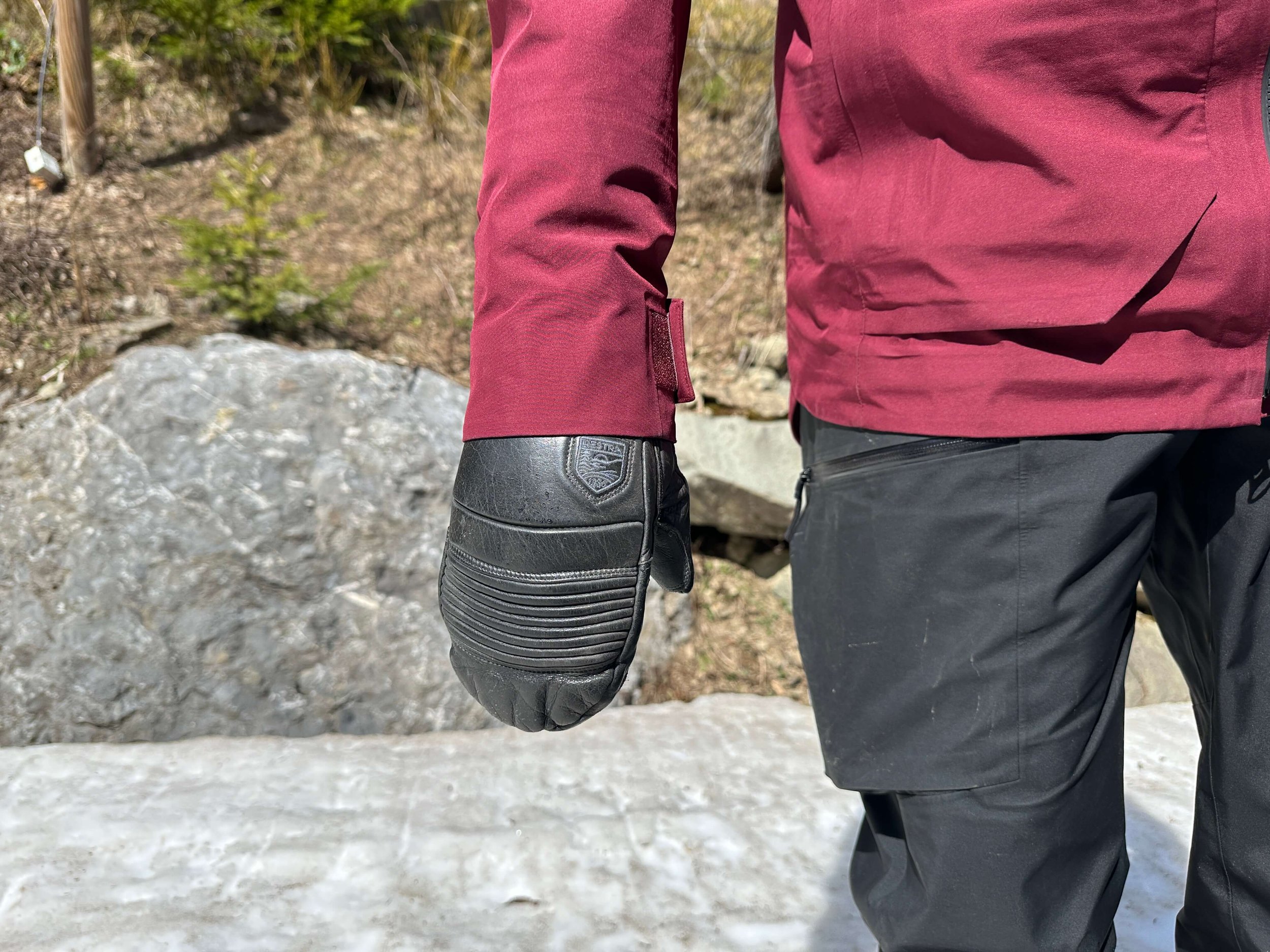

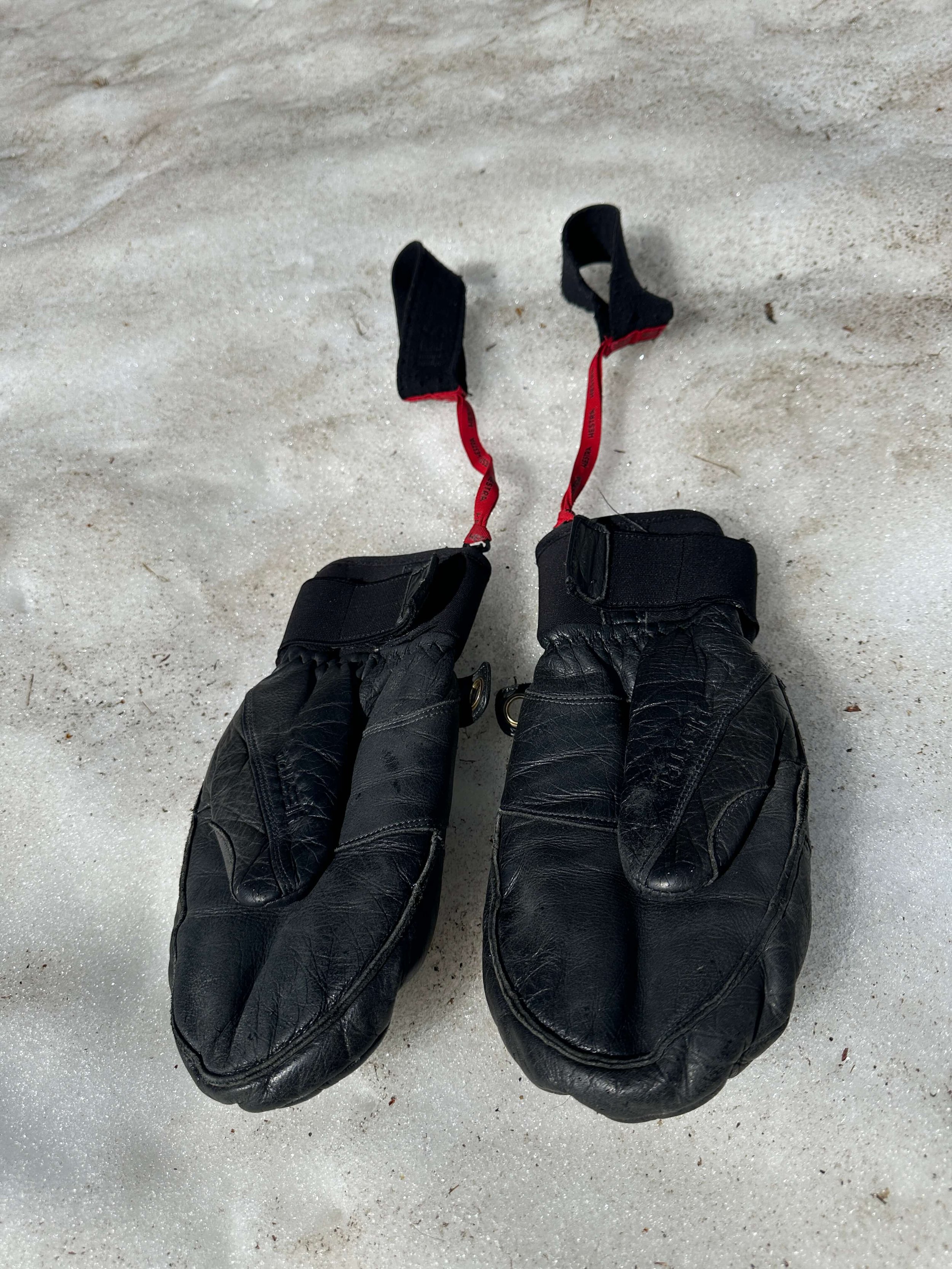
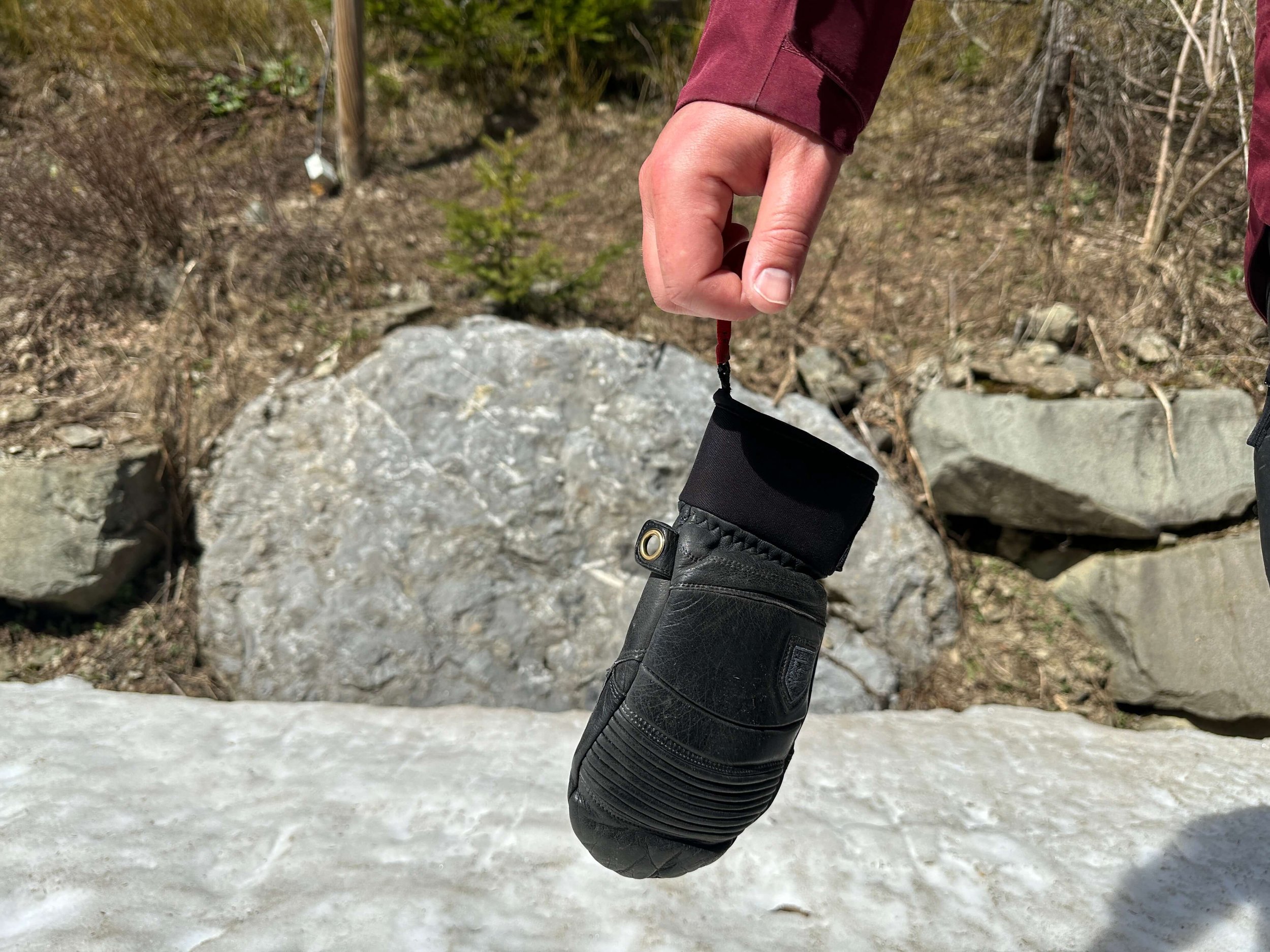

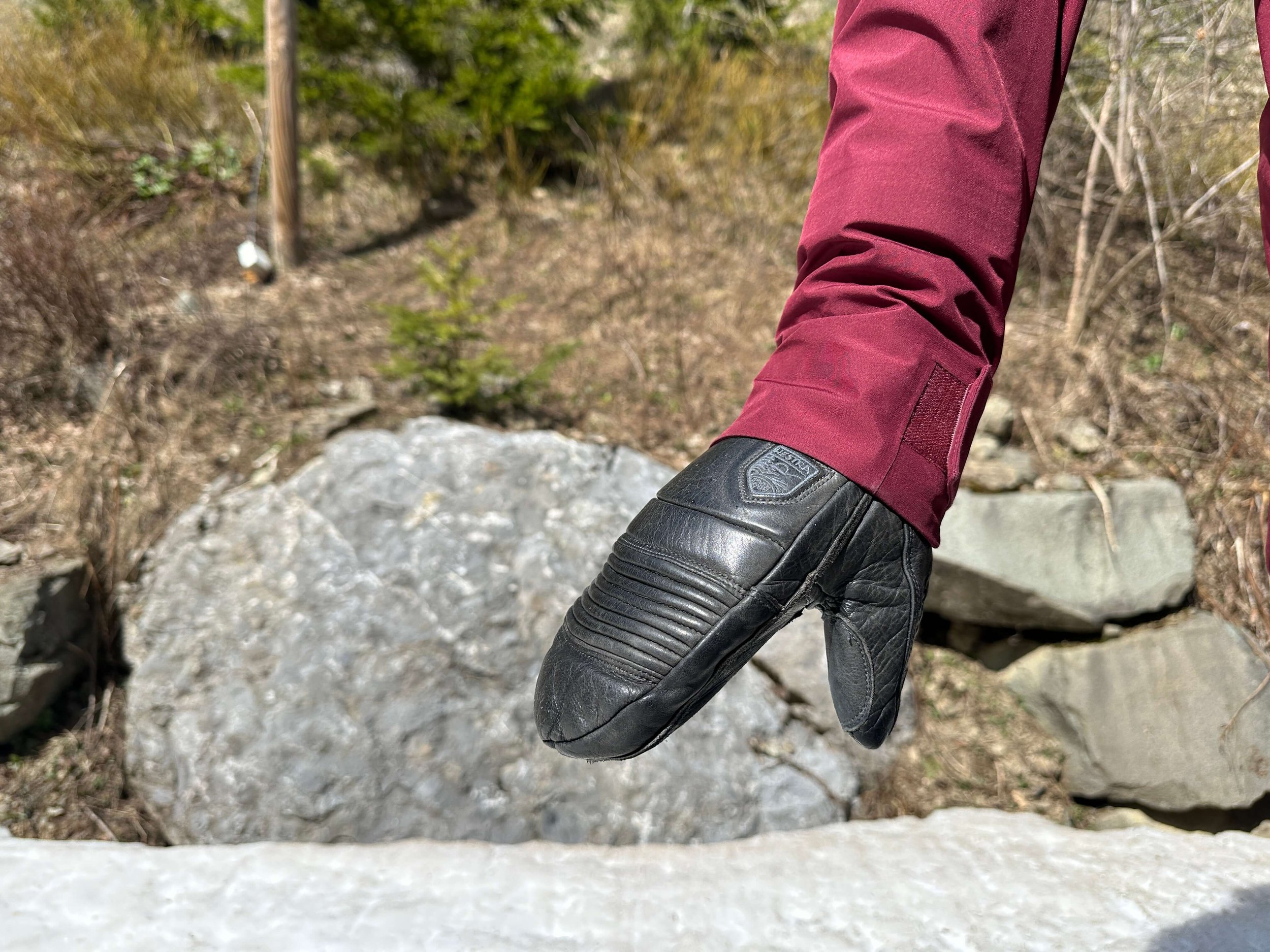
WARMTH
Most people’s concern when choosing a pair of ski gloves or mittens is whether they keep their hands warm whilst on the mountain. For me, the warmth factor has to be combined with other aspects such as variability and dexterity to choose the perfect warmth glove.
As someone who snowboards throughout the season, I have faced variable temperatures and conditions. The Fall Line Mittens are not the warmest glove I own and if warmth is the only consideration for you then consider my go-to for the coldest days, the Hestra Heli Glove which has a thicker liner.
For me, the Hestra Fall Line Mitts have kept me warm on most days and have been comfortable in the minus temperatures. The foam inserts which line the fingers on the inside of the mitt have been huge for ensuring fingers stay warm and not sweaty within the mitten.
DEXTERITY
Talking about dexterity in a mitt may seem silly as your fingers are confined to one space however without dexterity I couldn’t wear the mittens as I am always using cameras when I ride.
The high quality of the materials and construction ensures that the Hestra Fall Line Mitten has as much dexterity as possible in a mitten. The placement of the stitching in smart areas allows for the hand to move freely and the leather is soft and flexible without sacrificing durability.
Consider partnering the Hestra Fall Line Mittens with the Hestra wrist straps to allow for more flexibility on the mountain.
COMFORT
The Fall Line Mitts are amongst the most comfortable gloves I have ever worn. A combination of high-quality leather, a comfortable liner and the neoprene cuff make them top-of-the-line for comfort. One bonus of leather gloves is the more you wear them the more comfortable they feel as the leather softens and moulds to your hand. Putting on these gloves is one less thing to worry about as you can just enjoy your day knowing your hands are fine!
WATERPROOFING
The waterproofing on Hestra leather gloves and mittens will require maintenance over time if you want to keep performance to a maximum. If treated using the Hestra Leather Balm or an alternative you will see good waterproof performance. I treat my gloves at the start of the season and then again around February and have had no issues with waterproofing.
As with all leather gloves, you will need to ensure maintenance to keep the glove waterproof over time. Using Hestra leather balm or an alternative will keep the gloves performing their best throughout the season.
BREATHABILITY
I often end up taking these mitts off as my hands get too hot and on those warm spring days, you can get sweaty hands. The foam finger liners do a good job of keeping hands dry and wicking sweat away in all other temperatures.
One thing I miss from my previous mitts from Swanny is the zip which is intended for placing hand warmers in however, I used to open to vent the gloves.
Breathability is one area these gloves could improve.
DURABILITY
These mitts from Hestra have been incredible in terms of durabilty. Whether just enduring the conditions or being dragged through snow doing tripods the Hestra Fall Line Mitts have stood up to the tests. As with all leather gloves they need maintanence and if you keep on top of that TLC then these gloves will look after you for the foreseable.
Tripod testing the durability of the Hestra Fall Line Mitts
FINAL THOUGHTS
The Hestra Fall Line Mitts retail around the £100 mark in the UK, although deals can always be found, placing them at the top end of most peoples glove budget. For the cost, you are getting an extremely durable and comfortable glove that I have found to be perfect for most days on the hill.
SUPPORT FUTURE CONTENT
If you found this post useful then consider supporting future content by purchasing through the Amazon Link below or using this link to Buy me A Coffee
Salomon Taka Split Snowboard Review
Designed as part of Salomns hillside project the Taka split is an evolution of Takaharu Nakai’s solid board. The Japanese snowboarder has built his board around a powder shape that excels in the deep stuff. Now in split version the Taka Split is a take it anywhere on the mountain powder killer.
Disclaimer - I am not paid to write reviews about the gear I use and this board was purchased using my own money. I do not claim to be an expert just an average rider who is passionate about snowboarding and gear. If you find this review useful feel free to help me out and buy me a coffee using the button below.
SALOMON TAKA SPLIT OVERVIEW
SHAPE
The Salomon Taka Split has a directional freeride shape with a taper from nose to tail. The wider nose prevents the board from burrowing under the snow and sending you into a tomahawk. This is combined with the tapered tail which drops the tail of the board effortlessly preventing that powder leg burn. There is 12mm of taper from nose to tail.
CAMBER
The camber profile of the Salomon Taka Split is a hybrid camber with a combination of camber and rocker. The camber is under the insert packs ensuring control and stability of the Taka Split at higher speeds. Just after the front insert pack a long rocker starts which is perfect for ensuring extra float in pow. This rocker also helps turn initiation on-piste ensuring a less catchy ride.
FLEX
The Salomon Taka Split has a medium flex which is ideal for its powder performance. The nose feels soft and has some give in it which again helps it stay above the snow when needed. Despite not being overly stiff I found the Taka Split to hold an edge really well on harder snow.
CONSTRUCTION
The Taka split utilises Salomons Ghost Green Core. This core is constructed from their premium sustainable materials reducing board weight whilst being good for the environment. Salomon add what they call BA MD throughout the board which is a layer of fibreglass. The fibreglass weave keeps weight low whilst providing some predictability to the board’s performance.
SIZE GUIDE
The Salomon Taka Split is available in three sizes, 155, 158 and 161.
BASE
The Taka Split is fast thanks to its Sintered EG base. The sintered base on this board is one that I have had on a number of previous Salomon snowboards. The base does require regular waxing but if looked after performs brilliantly.
HOW DOES IT RIDE?
STABILITY
On piste and at speed the board feels solid despite being split down the middle. It holds an edge really well and wants to fly. This stability transferred into softer snow cutting through pow with ease and never feeling in danger of sinking.
FLEX
The Take Split has a medium flex under the feet but gets softer towards the nose and tail. The softness in the nose is perfect for keeping above deeper snow.
TURN INITIATION
The early rise rocker in the nose gives the Salomon Taka Split a loose feel rolling into and out of turns. I was taken back by how fun this board was to get on edge and turn with the expectation that performance in this area would suffer for powder performance.
ASCENT
The light construction of the Taka Split means it doesn’t feel heavy underfoot. The powder nose can be wider than the average skin track so you can find yourself cutting your own trail. Coupled with my Union Expedition bindings I was happy with the uphill performance.
POWDER
This board has a powder shape and a powder purpose. Without surprise, its designers Takahura Nakai and Wolle Nyvelt have hit the nail on the head with this one. Check out the videos below to see its powder performance.
PARK
This is not a freestyle board.
THE VERDICT
I really enjoyed riding this board although I did have a warranty issue with it. This has now been resolved by Salomon which is all you can ask for really. For accessing those areas close to the lifts this board was perfect and made my life a lot easier than boot packing it. I was really impressed with how this board floats in pow but more so how it rode around the rest of the resort. Its versatility meant I was happily riding it on a resort day just on the off-chance I would decide to get into hike mode.
Prior Wildcard Snowboard Review
Hand-built in Canada just outside of Whistler Prior Snowboards have a fantastic reputation, although not yet globally renowned. They were formed in 1989 by the late great Chris Prior and have been doing their thing ever since.
Disclaimer - I am not paid to write reviews about the gear I use and this board was purchased using my own money. I do not claim to be an expert just an average rider who is passionate about snowboarding and gear. If you find this review useful feel free to help me out and buy me a coffee using the button below.
PRIOR WILDCARD OVERVIEW
There are lots of variations and customisations available with Prior Snowboards so first of all I will talk about the standard Prior Wildcard.
SHAPE
The Prior Wildcard is a true-twin shape that rides the same in both directions. This suits the board’s all-mountain freestyle focus as makes riding away in switch easy.
CAMBER
The Prior Wildcard utilizes a hybrid camber profile. The Wildcard has a camber under the feet with a rocker on the tip and the tail. This is actually my preferred camber profile as it provides stability and pop but with that bit of help floating in pow.
FLEX
The Prior Wildcard utilises what Prior call their Twin Flex. The Twin Flex means that the board flexes the same whether you are riding regular or switch. The flex of the wildcard is also dependent on the construction but more on that shortly.
CONSTRUCTION
Part of Prior snowboards uniqueness is the ability to customise their boards in a number of ways. When you buy a Prior choosing its construction is part of this process. Standard boards come with a Triax glass weave or you can upgrade to an XCE carbon construction. The XCE carbon shaves around 15% of the board's weight. As someone who owns a version of the Prior Wildcard with both constructions, the XCE is also a more damp ride although both versions are great at cutting through crud.
SIZE GUIDE
Check the size guide below for regular Prior Wildcard Sizing. As a brand that prides itself on providing customs it is possible to make adjustments to the below chart. I have a 156 standard sizing and a 159 with an increased waist width.
BASE
The Prior Wildcard has a sintered base that is fast but needs regular maintenance. I love the speed that you get out of these boards but the bases are quick to show dry marks after a couple of days riding.
HOW DOES IT RIDE?
STABILITY
Ultimately when I am looking for a board I really want something that feels stable and isn’t going to wash out on me. The camber under the bindings is reassuring throughout the turn and you can feel the board lock into a carve. Even on icy snow the Prior Wildcard feels stable.
FLEX
I am not really one for pressing and buttering boards but the Prior Wildcard makes you want to do it. With your hips shifted over your tip or tail you can hold your press with decent stability. Doing a tripod and you can lock it in and just go. The flex between your feet is stiffer than on the tip and tail which means you are not sacrificing performance for that more playful ride.
TURN INITIATION
Some of the earlier hybrid camber boards like the Salomon Mans Board still felt catchy when initiating turns. That’s is not the case with the Prior Wildcard. The rocker on the nose just seems to lift those pesky contact points enough that you can just roll into your turn. The Wildcard feels quick between edges and is easy to throw around some tight trees.
PISTE
The Prior Wildcard’s underfoot camber makes the board incredibly fun to turn whether arcing across the piste or performing short turns down the run the Prior Wildcard has you covered. Both the XCE carbon and standard construction have enough ummpfh to powder you into your next turn.
POWDER
I was surprised at just how well the Prior Wildcard performs in deeper snow for a true twin snowboard. The rocker helps keep the nose afloat and although powder performance is never going to be as good as a true powder board check out these videos to see how it performed.
PARK
The Prior Wildcard is touted as an all-mountain freestyle board so it is fair to say that you should expect good park performance, it delivered. The Prior Wildcard was really fun to throw off jumps knowing that it will handle the landings. Similarly it has helped my confidence grow on rail features although it is not a jib board.
THE VERDICT
I love this board and have ridden it for a number of years now. Although other true twin snowboards have caught my eye I cant see myself replacing my Wildcard’s in my quiver anytime soon.
Monata Roca Ski & Snowboard Helmet Review
MONATA ROCA SKI HELMET
The Monata Roca ski helmet is a lightweight and low-profile ski helmet suitable for skiers and snowboarders.
Price: $39.99
VIDEO REVIEW
OVERVIEW
The Monata Roca snowboard helmet comes in a pretty healthy price $39.99 so with this my initial worry was whether the low price meant low quality. I am happy to say that my thoughts on the Monata snowboard helmet were mostly positive. The helmet is lightweight and low profile which makes it comfortable to wear. Adding to the comfort is the fleece lining on the inside of the ski helmet and the removable padded ear warmers. There is a BOA style adjustment on the rear of the helmet and an adjustable chin strap to dial in the fit. The top of the helmet has eight vents to allow air to flow through the helmet.
THE FIT
The Monata snowboard helmet has a good fit mostly due to the adjustability of the helmet. The large size I tested is able to fit heads size 53cm-60cm in diameter. The dial fit system on the rear of the helmet resembles a BOA allowing you to tighten or loosen the helmet.
THE COMFORT
The helmet is comfortable with soft materials being used in areas that can become irritable. The soft ear pads and the padded chin straps are great examples of this.
THE VENTILATION
The Monata snowboard helmet has eight vents on the top of the helmet to allow air to circulate through the helmet.
GOGGLE COMPATABILITY
As demonstrated in the video above the Monata ski and snowboard helmet has a good fit with a range of ski goggles. Choosing a helmet that fits well with your goggles is important for comfort and ensuring a complete barrier from the elements.
Goggles fit well whether worn over or under the Monata helmet. There is a goggle clip on the rear to keep your goggles in place.
STYLE
This is always going to be somewhat of a personal opinion but I think that the Monata Roca snowboard helmet looks good. It has a low profile design so it doesn’t look clunky or oversized which to me is a win.
Disclaimer - This item was gifted to me to review. My opinions remain my own and thoughts on the product are genuine.
Anon M4 | Ski Goggle Review
The opinions expressed in this review are my own and I am not paid by the brand. If this review helps you decide that the Anon M4 is the goggle for you, consider using the affiliate links to support the website. These links will provide a small commission to me at no extra cost to you.
Burton owned, Anon have been making quality ski and snowboard goggles for a number of years now. Their factory in Burlington Vermont is clearly a home of innovation and the M4 is the pinnacle of that process. The M4 is the top of the line goggle from Anon featuring, all the tech but still remaining good value.
ANON M4 OVERVIEW
Ok, you read it, I said that the Anon M4 remains good value. It is hard to justify that sentence for a £260 goggle but let me try. In the box you get; one goggle frame, two Perceive lenses and an MFI facemask, which is life-changing! The Anon M4 has everything you would expect from a top-end goggle.
The Anon M4 is unique in that the frame fits two lens shapes; Toric and Cylindrical. Anon M4 Toric lenses offer the widest field of view with that wrap around look that has become so popular. The Anon M4 Cylindrical lenses still offer a great field of view but with a more classic throwback style. The great thing about the Anon M4 ski goggles design is that you can mix and match the lens styles and swap out both Toric and Cylindrical lenses.
As you’d expect from a top end goggle, the Anon M4 has been designed to fit well with helmets. Anon make helmets as well, however I feel this goggle has fitted well with my Giro Combyn helmet over the last few seasons. The large frame design may not be to everyones taste, but if you like big frames the Anon M4 is a solid choice.
The key selling point for the Anon M4 goggle has to revolve around the intuitive MAGNA-TECH technology. Anon use magnets in both the lenses and their facemasks to ensure a seamless integration with the goggle frame. Changing the lens on an Anon M4 is this simple.
ANON M4 KEY FEATURES
Unisex frame
Thinner face foam used to ensure a close fit and optimising the field of view.
Triple-layer face foam incorporates a fleece layer that acts to wick moisture away from the skin and provide comfort, whilst adding two layers of foam for a snug seal and comfortable fit.
Light yet sturdy frame holds shape well ensuring a consistent and comfortable fit. There is some play in the frame allowing for slight movements and added comfort.
Ideally suited to medium and large face shapes.
Compatible with helmets (Best to try with yours before you buy).
MFI allows for facemasks to seamlessly attach to the goggle creating a full barrier to the elements. MFI is quick and easy with one hand movement.
Included MFI facemasks allow for ventilation and I have had no fogging issues.
The large frame is OTG compatible, so glasses wearers should be able to wear their frames underneath without discomfort. (Side note: I wear an insert with my prescription inside the goggle and this works great).
Price is all inclusive of MFI face mask, two lenses, goggle bag, and lens protective case.
MAGNA-TECH utilises 9 magnets to hold the lens in place. Strong enough to hold the lens in but still easy to change!
SONAR or PERCEIVE Lenses provide high-contrast and clarity.
ANON M4 goggle comes with hydrophobic and oleophobic coatings. These help the lenses avoid scratches and finger prints.
ANON Warranty - I have used the Warranty system in the past and they resolved my issue quickly and effectively. I have had no issues with my M4 goggles.
ANON M4 FIRST IMPRESSIONS
From initial look the Anon M4 is a great goggle. The first thing I normally check on goggles is the lens change. I want this to be easy so that I don’t have to faff on a mountain. Remember, that if its taking you time to do it indoors it will probably take you longer on the hill. Fair to say that the M4 has the best lens change out of any goggle I have previously tried.
Looking at the frame it is sturdy with a little bit of give. The foam closest to your face is fleece lined which adds another level of comfort. Sticking with the foam theme, there is what Anon call the ‘Full perimeter vent channel’ which allows air to circulate through the goggle preventing fogging. As expected the strap is backed with silicone to stop slip off helmets.
Another nice touch is the spare lens comes in a sturdy case to give you a bit more confidence if you are riding around with your spare lens in your pocket.
HOW GOOD ARE THE ANON M4 SKI GOGGLES
I have ridden with the Anon M4 ski goggle for a number of seasons now and it’s fair to say it’s my favourite goggle. There are plenty of reasons to like the Anon M4 but i’ll break down some of my favourites below.
ANON M4 FIELD OF VISION
The wide field of view on the Anon M4 gives you plenty of peripheral vision. The close to face design of the goggle frame ensures their are no blind spots or obstructions. The larger design does help in this regard and the Toric lenses will offer a greater field of view than the Cylindrical lenses.
ANON M4 LENSES
A while back I compared the Anon M4 Sonar lenses to Prism and Chromapop in this video. I was impressed by how the Sonar lenses performed in low light conditions, although I did say the Chromapop Lenses used on the Smith IO MAG outperformed Sonar, Anon have since upgraded their lenses.
Anon introduced PERCEIVE LENSES which has stepped up the performance in contrast lenses. Whereas contrast lenses traditionally target the Blue section of the colour spectrum (enhancing snow definition) Anon argued that although making the appearance of snow clearer, this approach compromised the natural appearance of the rest of the picture (trees, sky, buildings etc). PERCEIVE Lenses reduce the effect of 3 sections of the visual light spectrum resulting in a more neutral appearance, whilst still enhancing snow definition.
PERCEIVE LENSES ANON
Looking at the above chart the areas where you see a depression represent colour enhancement. This picture shows that PERCEIVE LENSES not only target the blue light but also green and red light.
PERCEIVE lenses also have the following protective coatings:
Hydrophobic - The hydrophobic coating works to repel moisture from the surface of the lens allowing it to run off and be channeled away easily.
Orleophobic - The Orleophobic coating prevents finger prints or smudges from forming on the lens.
HOW EASY IS THE LENS TO CHANGE
The easiest on the market. Nothing more really needs to be said.
ANON M4 FOGGING
I was initially worried that the integrated face mask would cause fogging, it doesn’t. The whole system works really well and aided by the full perimeter ventilation you can be sure of fog free days.
ANON M4 COMFORT
The Anon M4 has a larger nose bridge which for me makes a more comfortable goggle. Despite having a larger bridge there are no gaps in the goggle with foam preventing unnecessary wind access. Added fleece makes for a comfortable layer against your skin with a firmer foam keeping the goggles shape. One of the best comfort features on the Anon M4 is the MFI face mask. Whether its a; neck tube, balaclava or a hood, the MFI ensures a seamless fit and a complete barrier to the elements.
ANON M4 DURABILITY
I have ridden with the Anon ski goggle regularly since 2019. In that time, they have been well looked after but accidents do happen. Having crashed or fallen on many an occasion whilst wearing the Anon M4 goggle I can attest that they have stood the test of time. The frame is firm enough to prevent it from being easily damaged and the strap is in good condition having been worn under a helmet.
The main concern that people seem to have with magnetic lens ski goggles is whether they hold the lens when you fall. I can honestly say that the lens has not come out of my Anon M4 on impact. Furthermore, if it were to come out I am pretty sure you may have bigger worries. With that in mind, the lenses have also proved durable taking impact whilst resisting any major scratches.
ANON M4 STYLE
There is plenty of choice with the Anon M4 ski goggle. Available not just in a range of colourways but also with a choice of lenses. Like the alien from another planet look then opt for M4 Toric Lenses. Alternatively, choose the M4 Cylindrical Lenses for that old school look. Can’t make up your mind, well no worries, just mix and match the lenses as they will both fit the same frame.
I like the larger frame goggle look so these are perfect for me.
If you wear the Anon M4, let me know what you think below in the comments.
WHAT I LOVE ABOUT THE ANON M4
Magna-tech lens changes are by far the fastest and easiest I have ever tried. I would struggle to go back to another system.
MFI face mask is also a game-changer. Seamless integration with the goggle to create a barrier to the elements.
The Anon M4 comes with two lenses as standard. This means you should be sorted for all conditions.
The lens case that comes with the Anon M4 ski goggle is a nice touch.
WHAT I DISLIKE ABOUT THE ANON M4
The price. This is a top-end goggle and as such you are looking a spending a few pennies to pay for them. Now they have been out a few years, it is possible to find old colourways for slightly cheaper.
FINAL THOUGHTS
The Anon M4 is a fantastic goggle that firmly sits as my favourite out of the goggles I have tried. Having previously been disappointed with the performance of the Anon M3 goggle this is certainly a step up. The money is worth spending if you are a regular skier or snowboarder and will get use out of them. Otherwise there are cheaper alternatives like the Anon Sync that you could consider.
Affiliate Links
These are all retailers that I have used for a number of years and in the case of some have worked for. The service is great and they stock incredible products. Purchasing through these links provides a small commission to support the site at no extra cost to you.
Ellis Brigham: https://tinyurl.com/y5h5efam
The Snowboard Asylum: https://tinyurl.com/y429d29h
SHOP ANON M4 SKI GOGGLE
SHOP ALTERNATIVES
Snowboard Camber Profiles Explained
When shopping for a snowboard you will come across a number of terms for a snowboard profile. Essentially the profile of a snowboard is whether the board curves up from the snow, down towards the snow or a combination of the two. You can see this shape clearly by looking from the side or placing the board on a flat surface. Terminology like camber, rocker, or hybrid camber describes this profile. This post attempts to go through all the available snowboard profiles and discuss the pros and cons of each profile.
WHAT IS A SNOWBOARD PROFILE
A snowboard or camber profile describes how a snowboard looks when it is laid on a flat surface. This profile will affect how the snowboard performs and feels across various terrain. Traditionally snowboards have a camber that raises in the middle of the board causing an arch. Over time this has been adapted and refined to produce a variety of snowboard camber shapes that will help improve board feel and can be matched to riding style.
Learning about snowboard profiles will help you choose a snowboard that matches your riding style or the type of terrain you wish to ride. An example would be the use of rocker in the nose of your snowboard to improve performance in deeper snow or a flat camber profile to make your board stable at speed. Below the most popular camber profiles are discussed.
TYPES OF CAMBER PROFILE
CAMBER
A full or traditional camber snowboard is the original snowboard profile. At the beginning of the sport, this is how boards were made and that was your choice. Although there have been many developments in snowboard profile there is a hardcore of snowboarders who would still maintain that a traditional camber snowboard is the best snowboard profile.
A traditional camber snowboard arc’s up in the middle of the board and returns to the snow at the contact points. This arc or camber allows the rider to build up pop for jumps and ollies and will increase the snowboards edge hold when carving. Camber snowboards feel stable and reliable and they handle speed with ease. Camber profiles are found in advanced carving or jump focussed snowboards as they are stable and have lots of pop.
Camber profiles can be ridden by beginners and in powder however, both of these tasks are made harder by using a full camber snowboard. In powder, the camber will not help you to keep the nose of the board above the snow and you may be more prone to back leg burn in deeper conditions. As a beginner learning on a cambered snowboard could set you up as if you can ride a camber you can ride it all… but be wary of catching an edge. Camber snowboards keep the contact points close to the snow so it is more likely you may catch an edge regularly until you are confident.
FLAT CAMBER
Flat camber snowboards have no arc meaning that they remain flat from the tip to the tail. Flat camber snowboards are a less aggressive version of a cambered snowboard. They will remain stable at speed and will be nice to carve and in addition, will be better in powder than a traditional camber snowboard. This is because a flat camber snowboard has more surface area in contact with the snow, making it harder to sink.
Flat camber boards can feel a bit lifeless and lack the pop of traditional camber boards and they also lack the forgivingness of a rocker snowboard for beginners.
REVERSE CAMBER
Reverse camber or rocker snowboard profiles are essentially the opposite of a camber profile. The arc of a reverse camber board is away from the snow, lifting the contact points in the process. This results in a banana shape that is easier to ride for beginners as you are extremely unlikely to catch an edge. Reverse camber snowboards also are great fun to ride in powder as the reverse camber lifts the nose and tail above the snow. Reverse camber snowboards are also easier to press but there are the following downsides.
Because of the nature of the rocker lifting the contact points away from the snow reverse camber boards can be unstable when ridden at faster speeds. If you are into ripping up groomers, then avoid a rocker as it will feel loose. As the contact points are lifted from the snow a rocker snowboard will struggle more for edge hold in icy conditions. This is sometimes counteracted by increasing the number of contact points along the edge.
CAMROCK
CamRock is a hybrid snowboard profile that combines the best characteristics of camber and reverse camber to make a truly versatile shape. Camrock snowboards have camber under the feet but add rocker to the nose and tail. This profile allows for the snowboard to be stable at speed and have great edge hold but be less catchy when initiating turns. Other benefits of a camrock snowboard are that they will float better in powder than their traditional camber counterparts and have more pop than a reverse camber board.
ROCK OUT CAMBER
Rock Out Camber is a hybrid camber profile found on some Salomon Snowboards. The rock out camber profile is similar to a camrock board but adds a flat section between the bindings. This combination of rocker, camber and flat sections provides versatile performance benefits. A rock out camber snowboard will float well in powder, have lots of pop and be stable at speed. This profile is found in some of Salomon’s most popular boards including the Assassin and Villain.
POW ROCKER
Powder boards often have the most interesting designs and the use of a pow rocker profile will help the boards performance in deeper snow. Pow Rocker is essentially a long elongated rockered nose section alongside either a flat or camber section towards the tail of the board. This design will lift the nose of the snowboard out of the snowmaking it perfect for powder days. The camber towards the tail of the board will allow you to carve and power yourself out of turns whilst riding on the piste.
3BT
3BT or TBT is found on Bataleon, Lobster and Whitegold snowboards. 3BT is different from the other profiles discussed as it affects the base not just the profile of the snowboard. 3BT boards are all traditional camber snowboards however the base of a 3BT snowboard is split into three sections. A flat section in the middle and two bevelled sections on the sides. By bevelling the base upwards from the snow Bataleon have created a rocker on the base which makes their snowboards more forgiving. 3BT boards have become really popular as they have shown to improve powder performance and prevent edge catch whilst maintaining a stable ride due to the traditional camber sections.
SNOWBOARD PROFILES BY RIDING STYLE
BEST FOR CARVING
If carving is your main focus then you are going to want some elements of camber in your snowboard profile. As discussed above a camber profile is stable at high speeds and offers great edge hold. By choosing a snowboard that runs a traditional camber from tip to tail you will have the highest level of carving performance. Traditional camber is often found on race/alpine boards designed to go fast and without compromise.
BEST FOR POWDER
If you want to ride in powder effortlessly then you will want some form of rocker added to your snowboard. Any board with a rocker in the nose and tail will help you to stay above the snow. By adding rocker to a longer nose and a directional shape, you will be slashing pow with ease.
BEST FOR JUMPS
If you want to hit big booters than you really want to have a camber underneath your bindings. Having a camber under the centre of your snowboard will allow you to generate extra pop on take-offs and will give you a stable base for landings. Camber boards will also allow you to carve up the take-off to get that spin started.
BEST FOR BUTTERS
To make buttering easy you could opt for a reverse camber snowboard. A full rocker snowboard will allow you to spin your ground tricks without fear of catching an edge. If you didn’t want to sacrifice performance elsewhere consider a camrock profile with rocker on tip/tail. This should still make butters easier but will still give you pop.
BEST FOR RAILS
If you are looking for a catch-free rail board you could consider a flat or reverse camber profile. Both these profiles may feel a bit lifeless on jumps so you may be better served with a hybrid profile. By choosing a hybrid profile you will still generate the pop to jump onto rails but your contact points will be lifted away from the rail. 3BT is another great profile for riding rails as the bevelled base uplifts the contact points.
Personal Preference
Ultimately there is no right or wrong answer for which snowboard profile is right for you. I feel strongly about what is best for me and what I prefer riding in different situations across the mountain. If you are still unsure the best thing you could do is head to your nearest demo shop and try out a number of snowboard profiles.
Get In Touch
As always thanks for reading and if you are still unsure feel free to get in touch via the socials or the comment section. Make sure to check out our Snowboard Buyers Guide where you will find all the information regarding how to buy a snowboard.
PIN IT FOR LATER
CARE TO SHARE?
IF YOU FOUND THIS POST USEFUL AND YOU THINK IT MAY ALSO HELP OTHERS, PLEASE LIKE, SHARE AND COMMENT TO PROMOTE IT TO OTHERS
Salomon Speedway Split Overview
Salomon makes some of the best-value snowboards on the market and this has transferred into their splitboard range. The Speedway has shown itself to be a top performer in solid form winning awards and accolades from various snowboarding publications. As a Splitboard, the Speedway gives you a ride that will love charging on the way down. Its elongated nose and taper allow the Speedway Split to float easily in powder and the backseat camber puts the control under your back binding. Salomon has made the Speedway Split from their top-end materials producing a board that is both durable and lightweight.
ABOUT THE SALOMON SPEEDWAY SPLITBOARD
Board Profile
The Salomon Speedway Splitboard has a backseat camber profile. This is a design where the camber is placed under the back binding and leads into a flat section at the nose. There is rocker added on the nose and tail to help with turn initiation and float in deeper snow. The backseat camber design has been used successfully on Salomon Speedway and Super 8 solids which both ride well on and off-piste.
Flex
The Speedway Split has a stiff flex that helps it to remain responsive and reliable. The Speedway’s responsive flex allows the board to be incredibly stable at higher speeds and aids turn initiation.
Board Shape
The Speedway Splitboard has a tapered directional design. The nose of the Speedway is around 10-15mm wider than the tail allowing the front of the board to stay above the snow as the tail drops back to prevent leg burn. A tapered design improves powder performance without sacrificing edge hold on the piste. The Tapered design is coupled with a Quadratic Sidecut. This is a progressive sidecut which allows for easy turn initiation.
The Insides
Salomon spared no expense when assembling the core of the Salomon Speedway. The Ghost Green Core is utilised in the Speedway Split as a way to drop the weight whilst optimising performance. The Ghost Green Core uses paulownia wood which is extremely light and is found in Salomon’s top-end boards.
In addition to the Ghost Green Core, Salomon have added Damplifier to the Speedway Splitboard. Damplifier is a honeycomb effect used in the nose and tail to drop weight. Using Damplifier means that the Speedway Splitboard is lighter for the way up without negatively effecting performance on the way down.
The Base
A Salomon Sintered EG base is used on the Speedway Splitboard. Sintered bases require more TLC with regular waxing but they run much faster than extruded bases. The Sintered EG is designed for a fast ride, but also strengthens the base by utilising Gallium.
The Edges
Salomon wanted to optimise edge hold without causing those nasty edge catches that are common with camber snowboards. To achieve this the used a 1° bevel at the initiation and exit of the edge with a 2° bevel between the bindings.
The Sidewalls
Salomon uses ABS sidewalls which is the short way to say Acrylonitrile Butadiene Styrene. Basically, these are solid and I have had them on a number of boards. The ABS sidewall dampens vibrations through the board and absorbs impacts on jumps.
Additional Features
The Salomon Speedway Splitboard comes complete with custom cut Pomoca Skins which will save you money and time. This is a really nice addition from Salomon.
The Terrain
The Salomon Speedway Splitboard is designed for use outside of the resort boundary’s where exploration is leading the way. The board can be used in the resort and will perform great on groomers. You are unlikely to find the Speedway Split anywhere near the terrain park.
The Rider
The rider of the Speedway Splitboard should be confident riding a stiffer deck. The Speedway is directional and although it can be ridden switch this is not where it excels so it would suit an omnidirectional rider.
Sizing
The Salomon Speedway is available in three sizes; 155, 160, and 165. Because of the damplifier in the nose and tail Salomon say that you can size up from your regular board length by 3-5cm so consider this when choosing your size.



